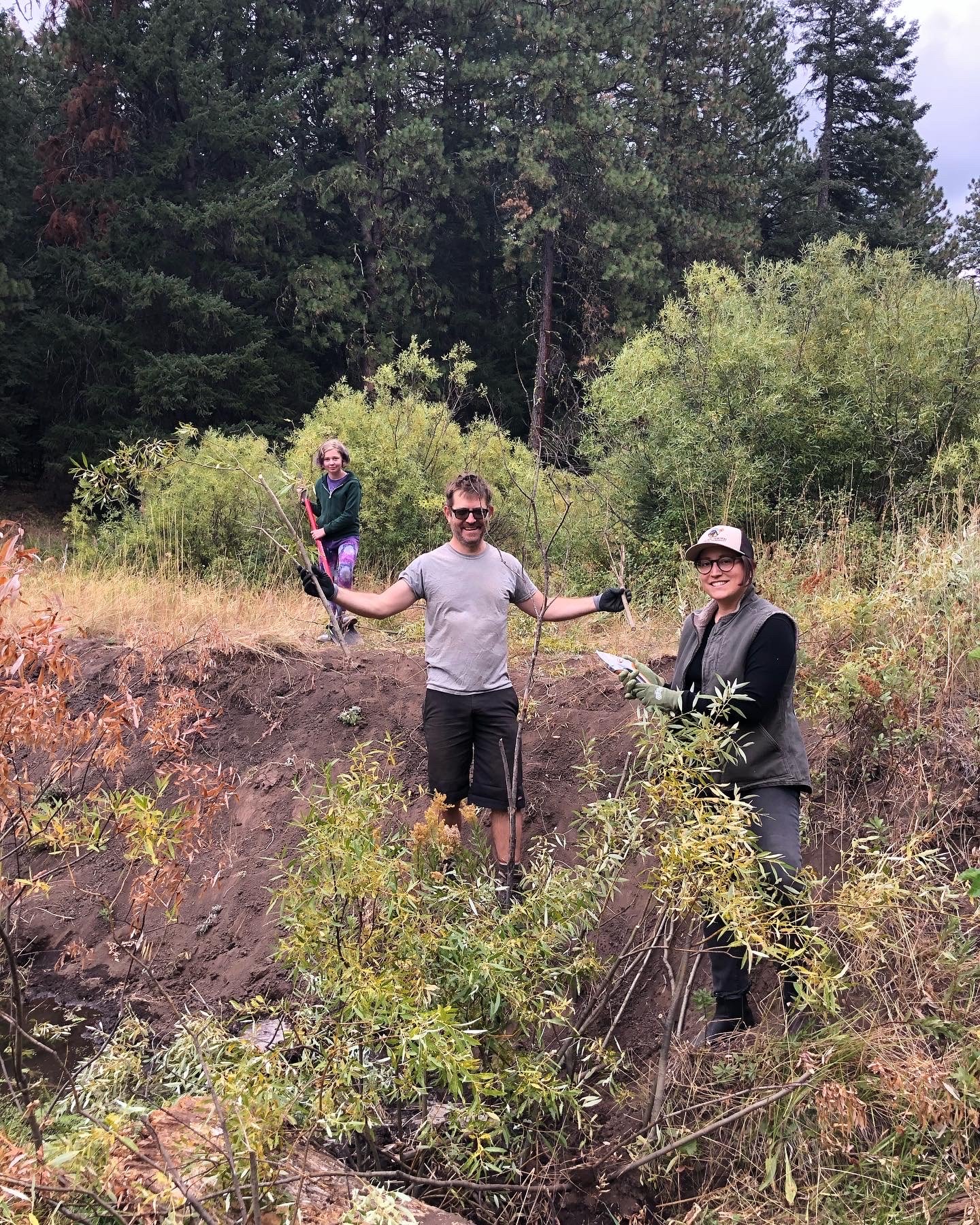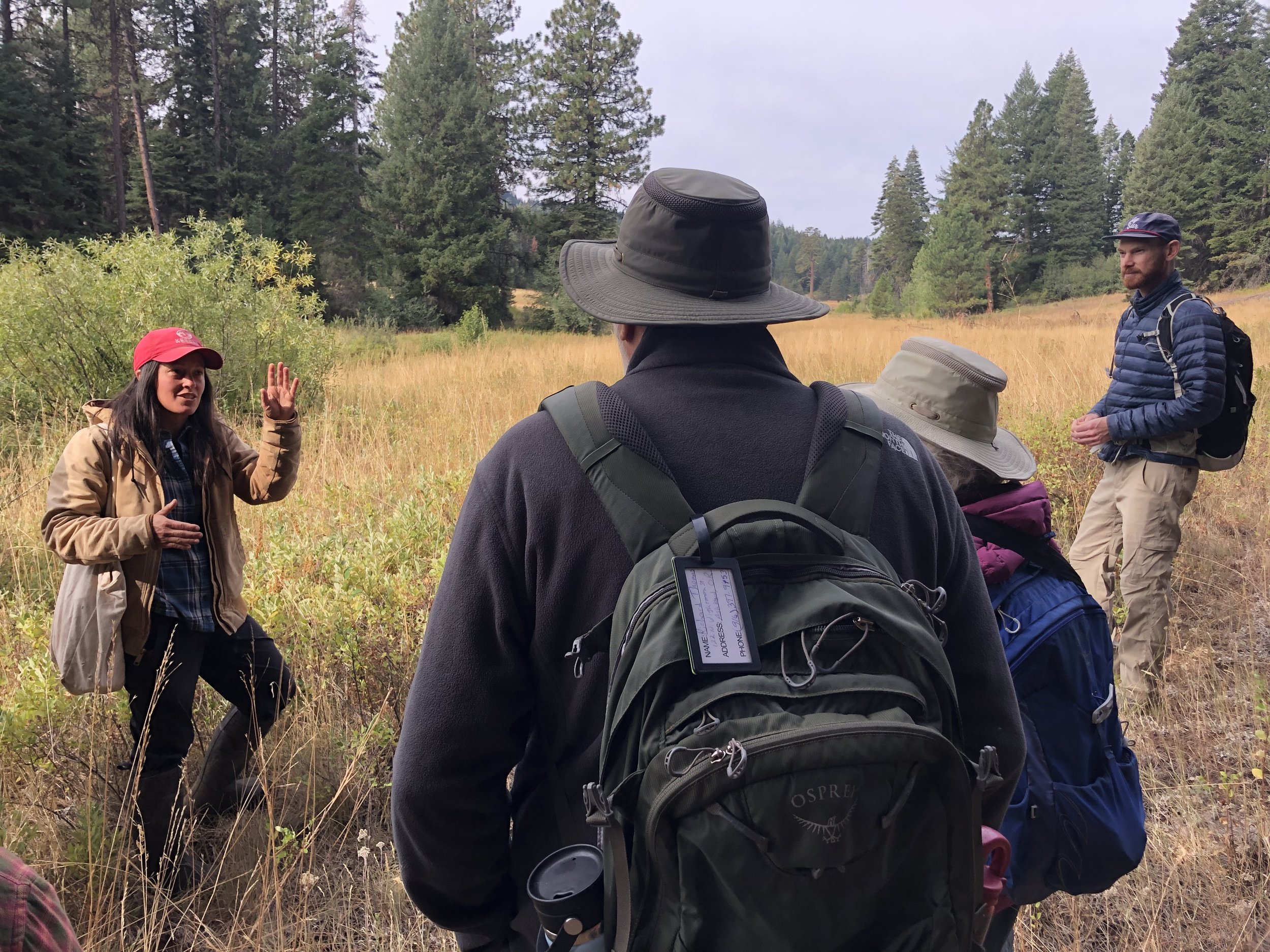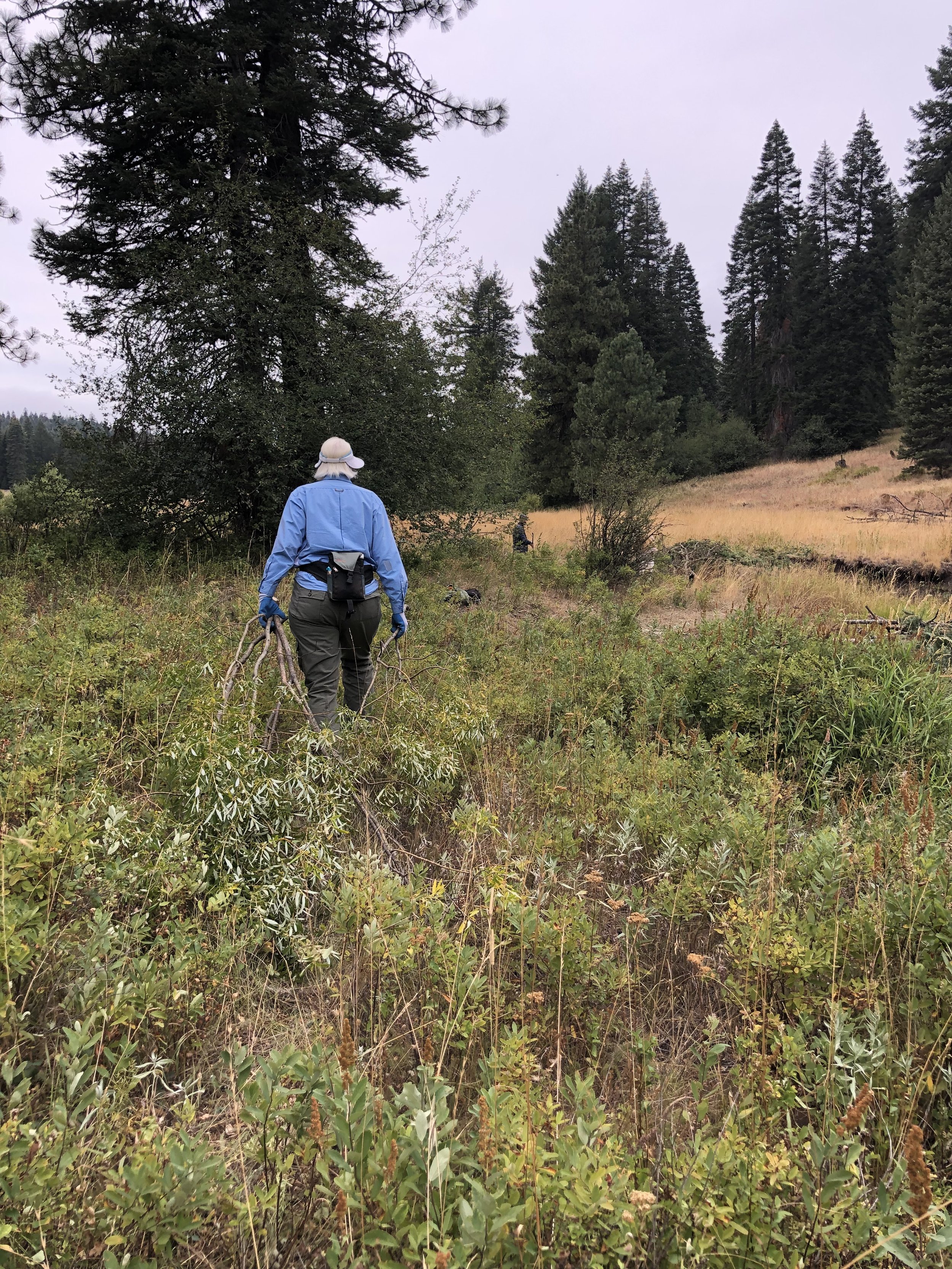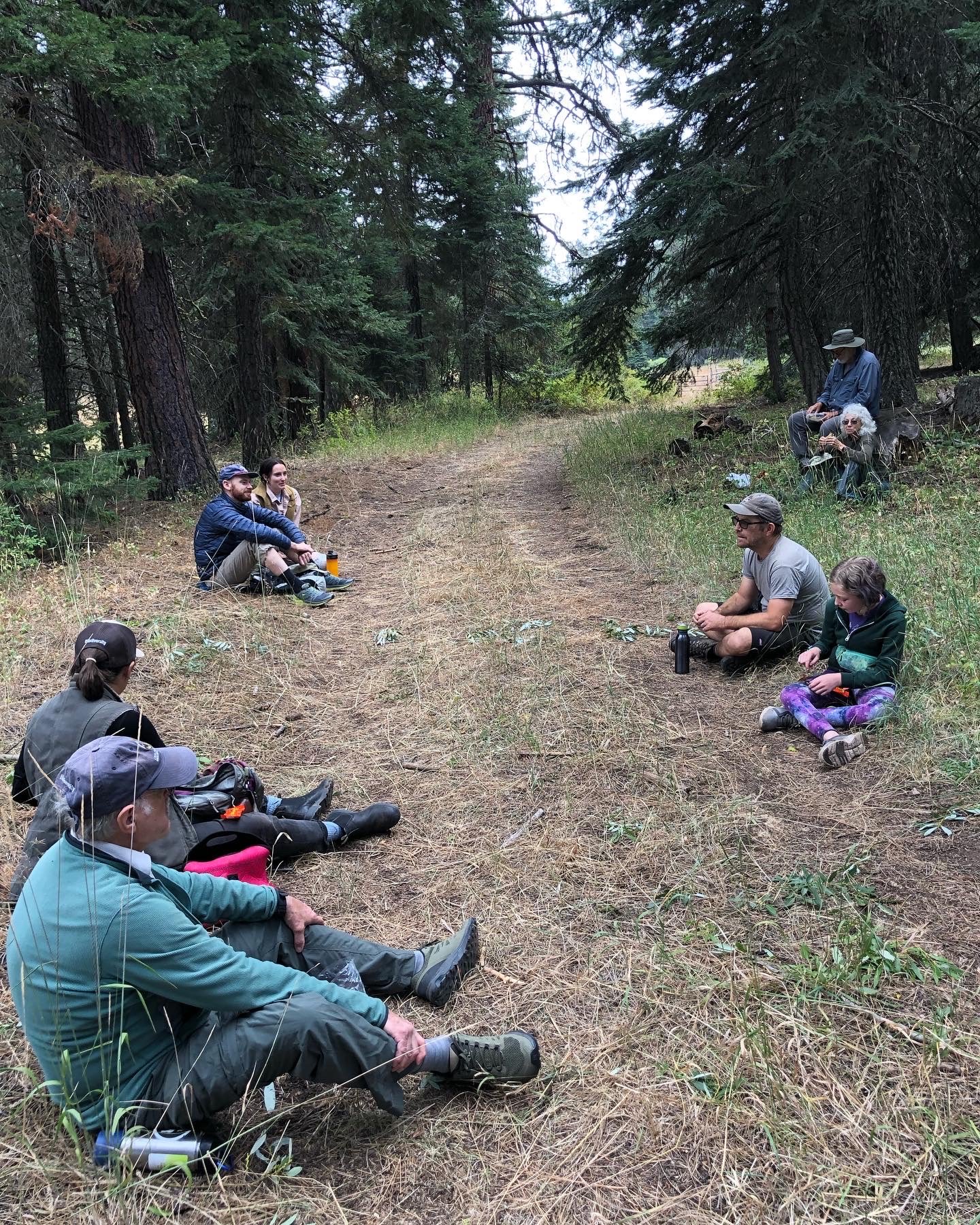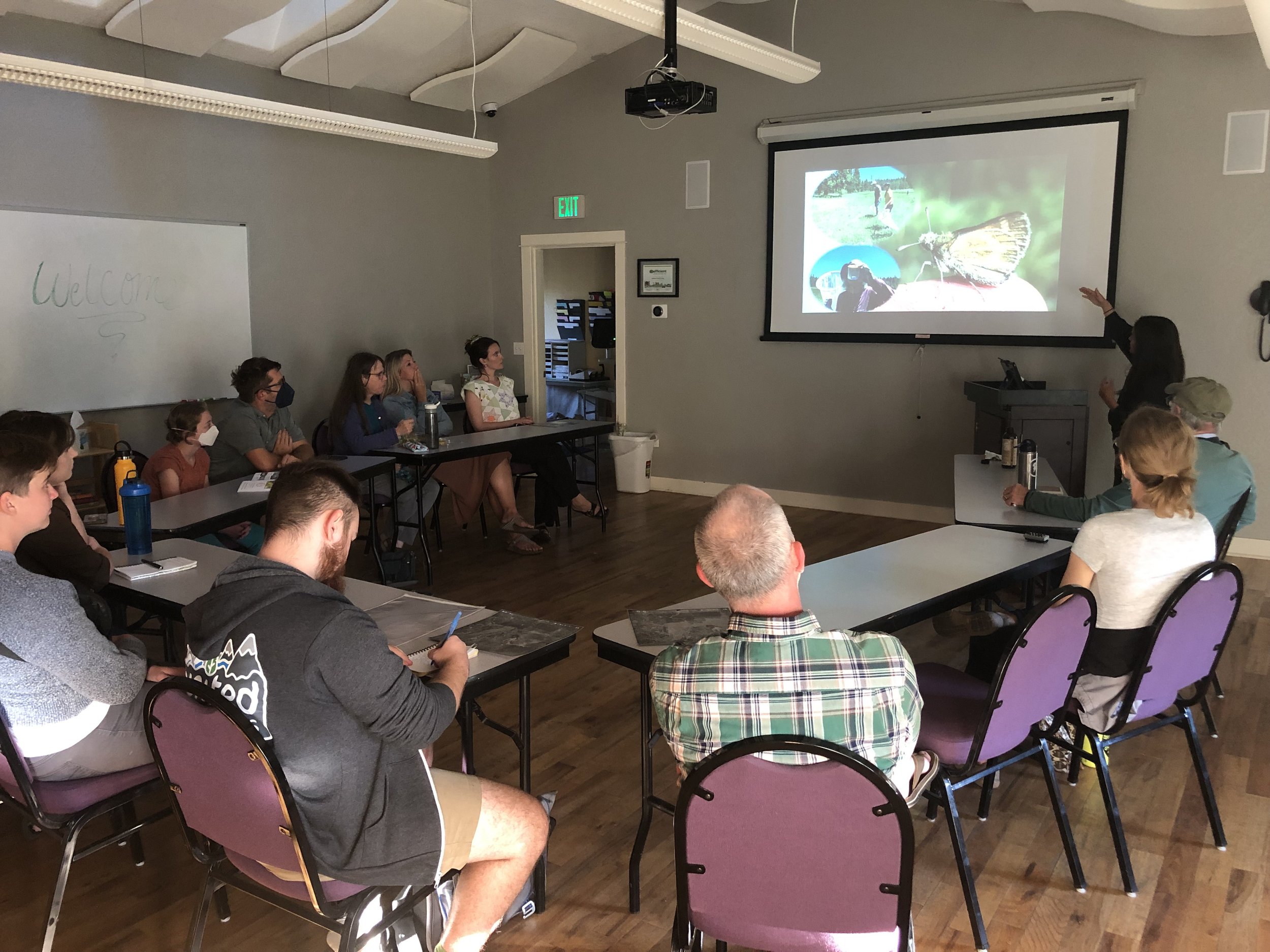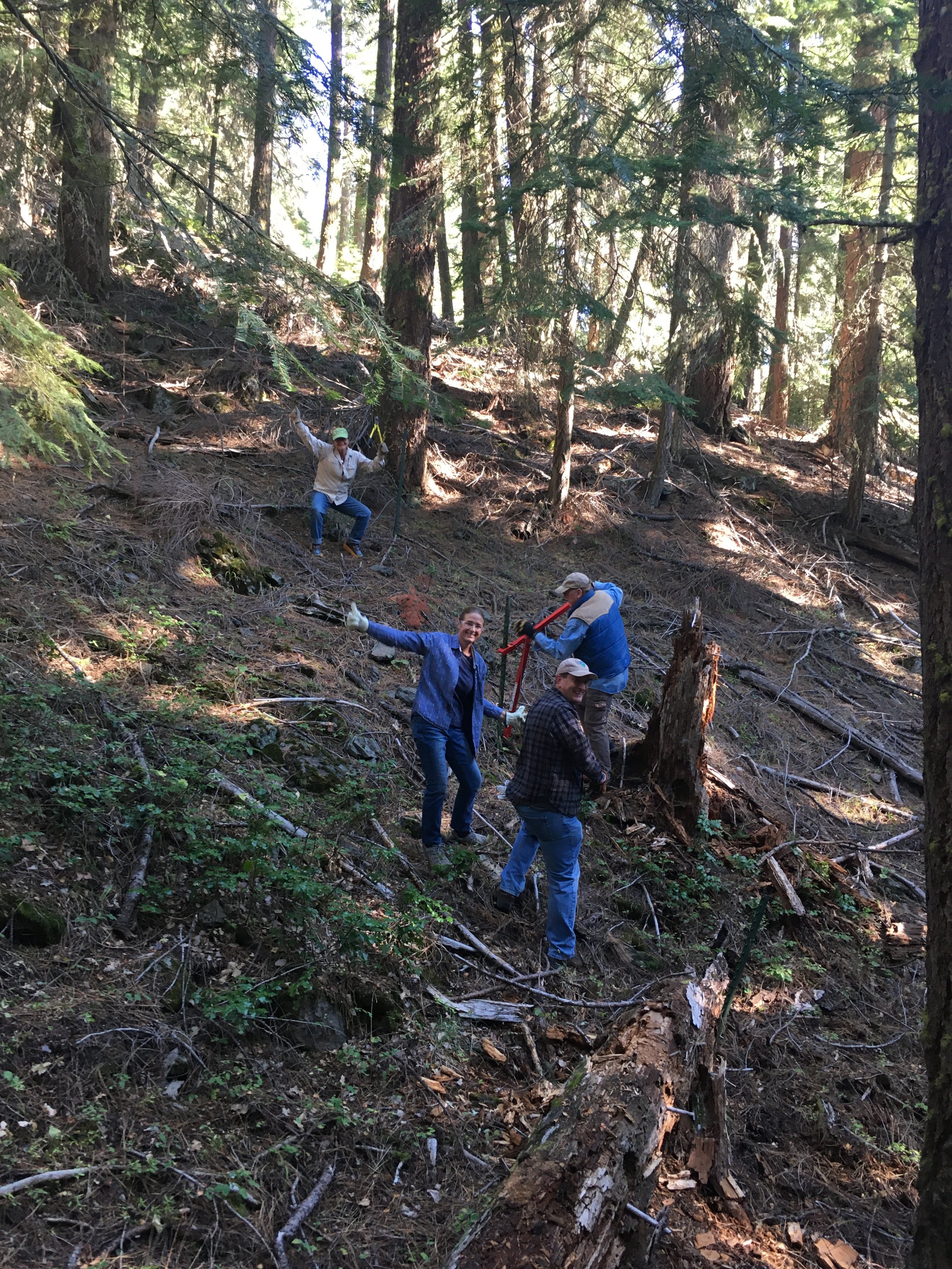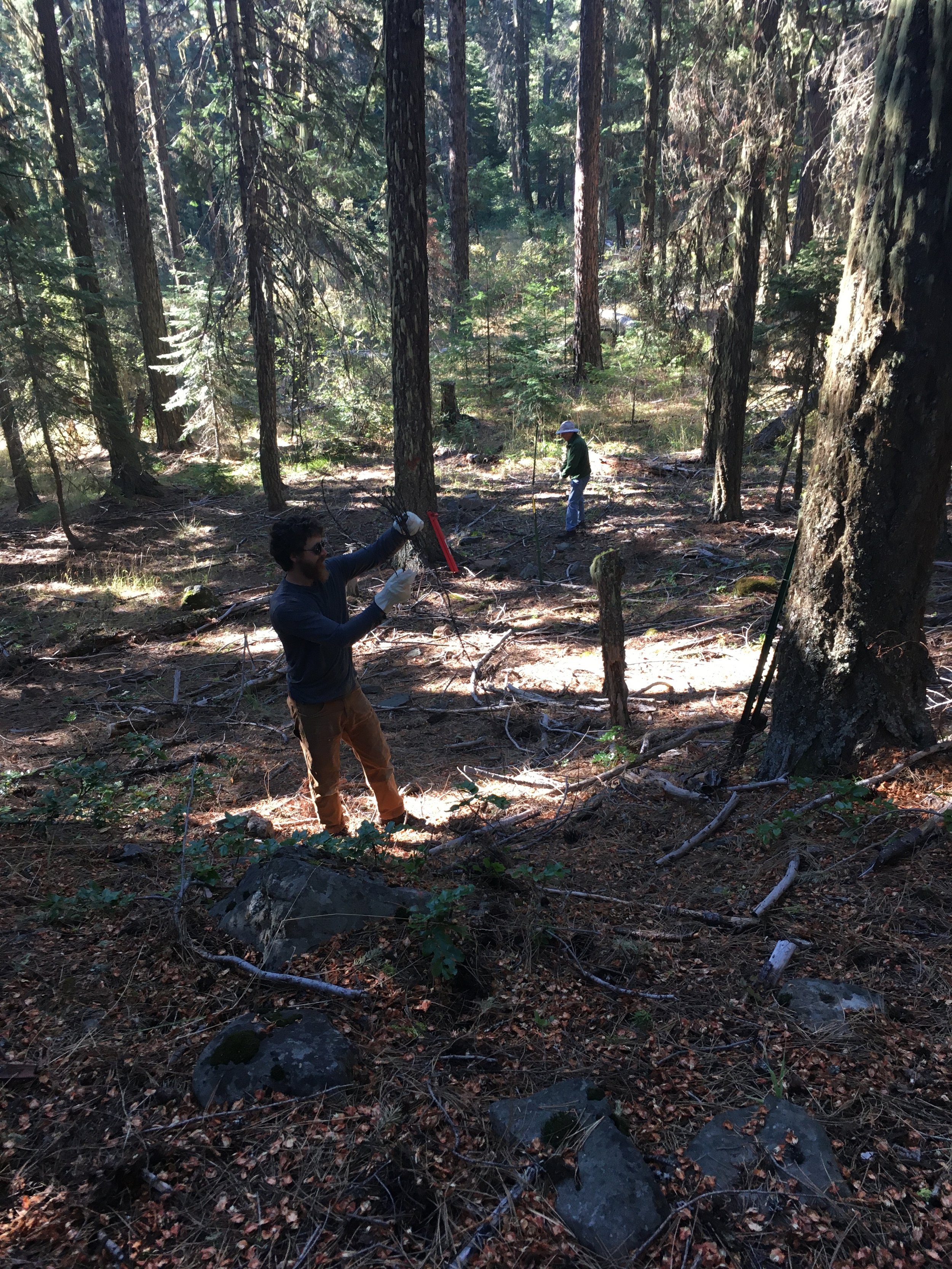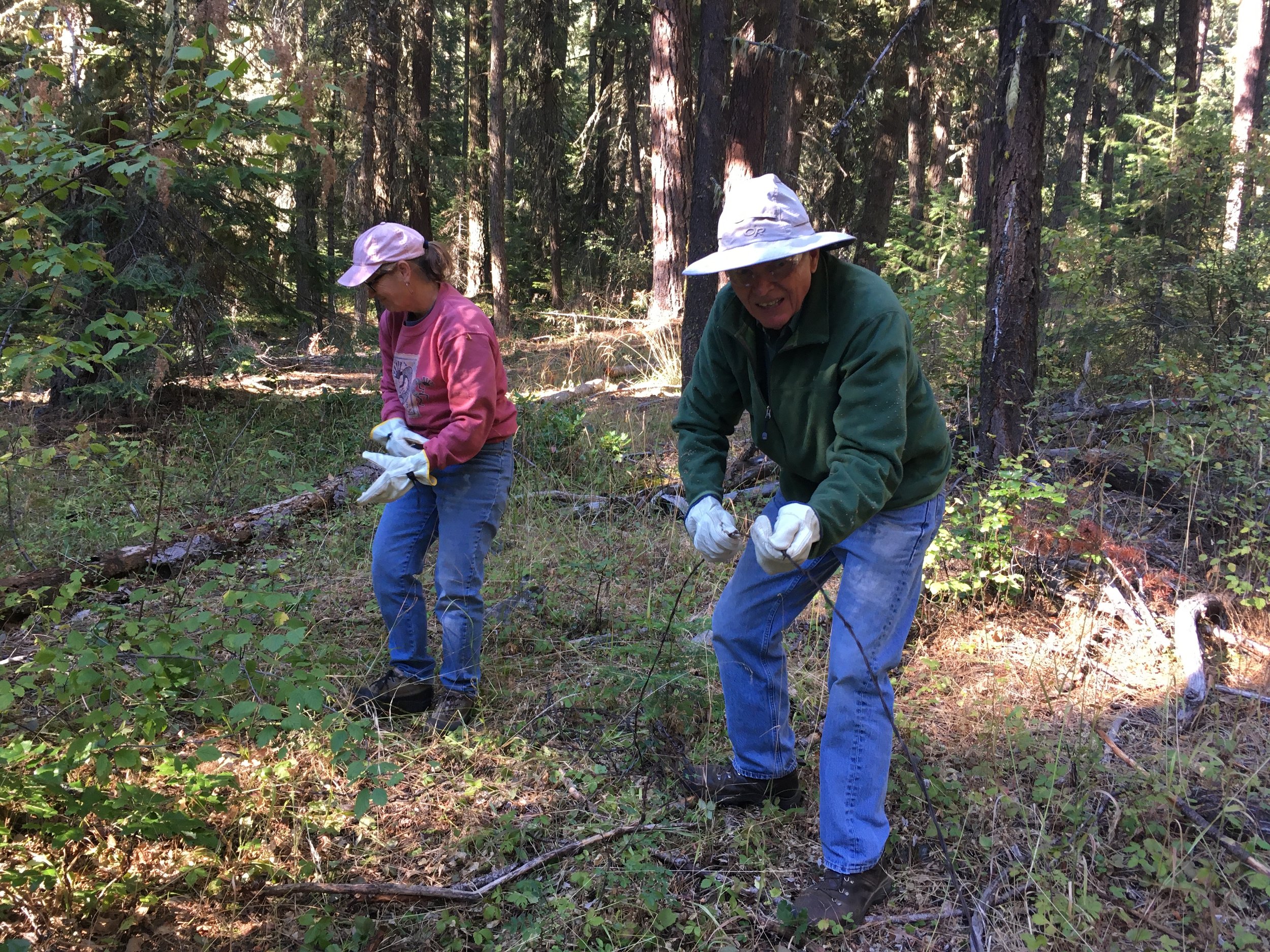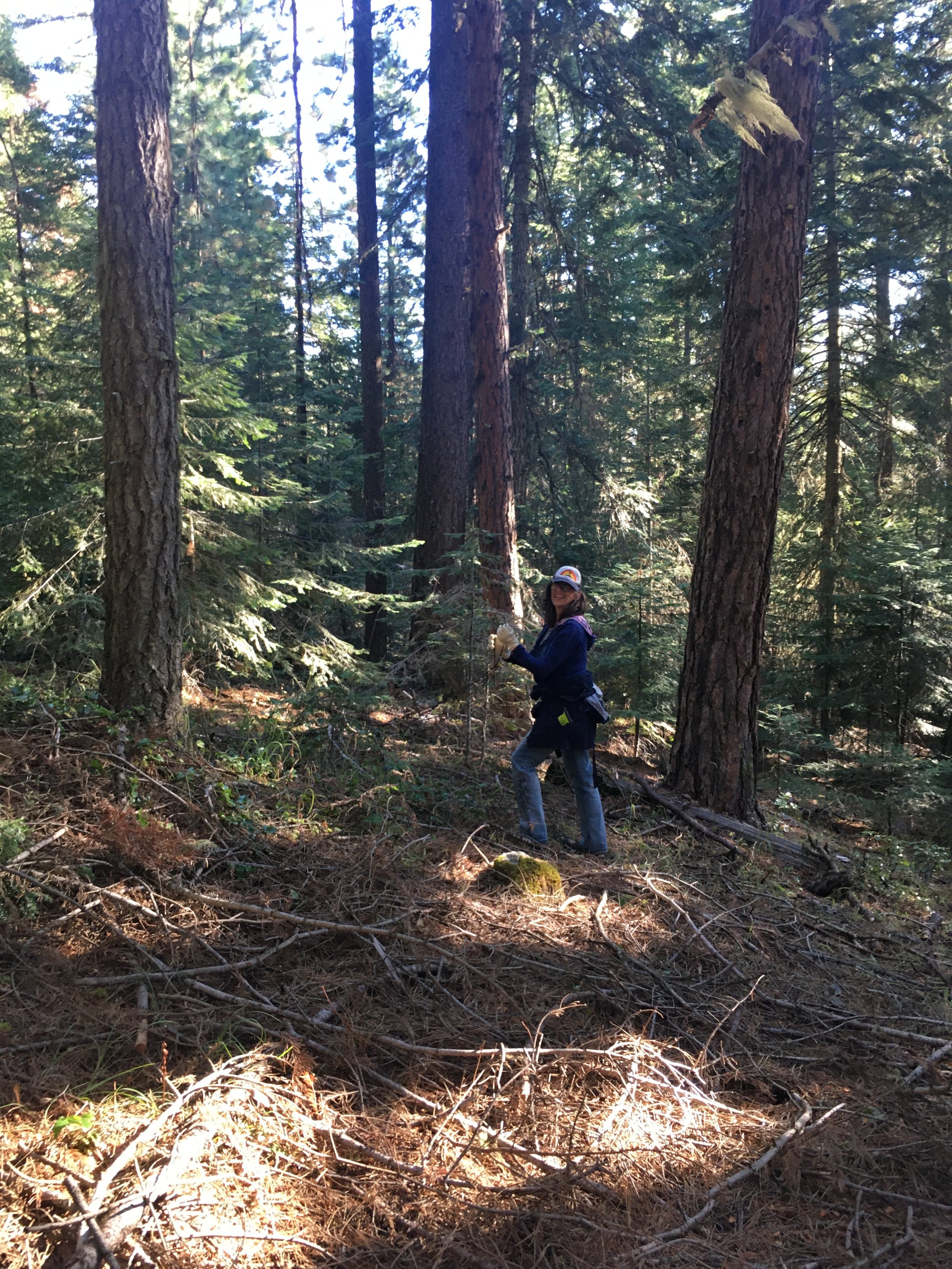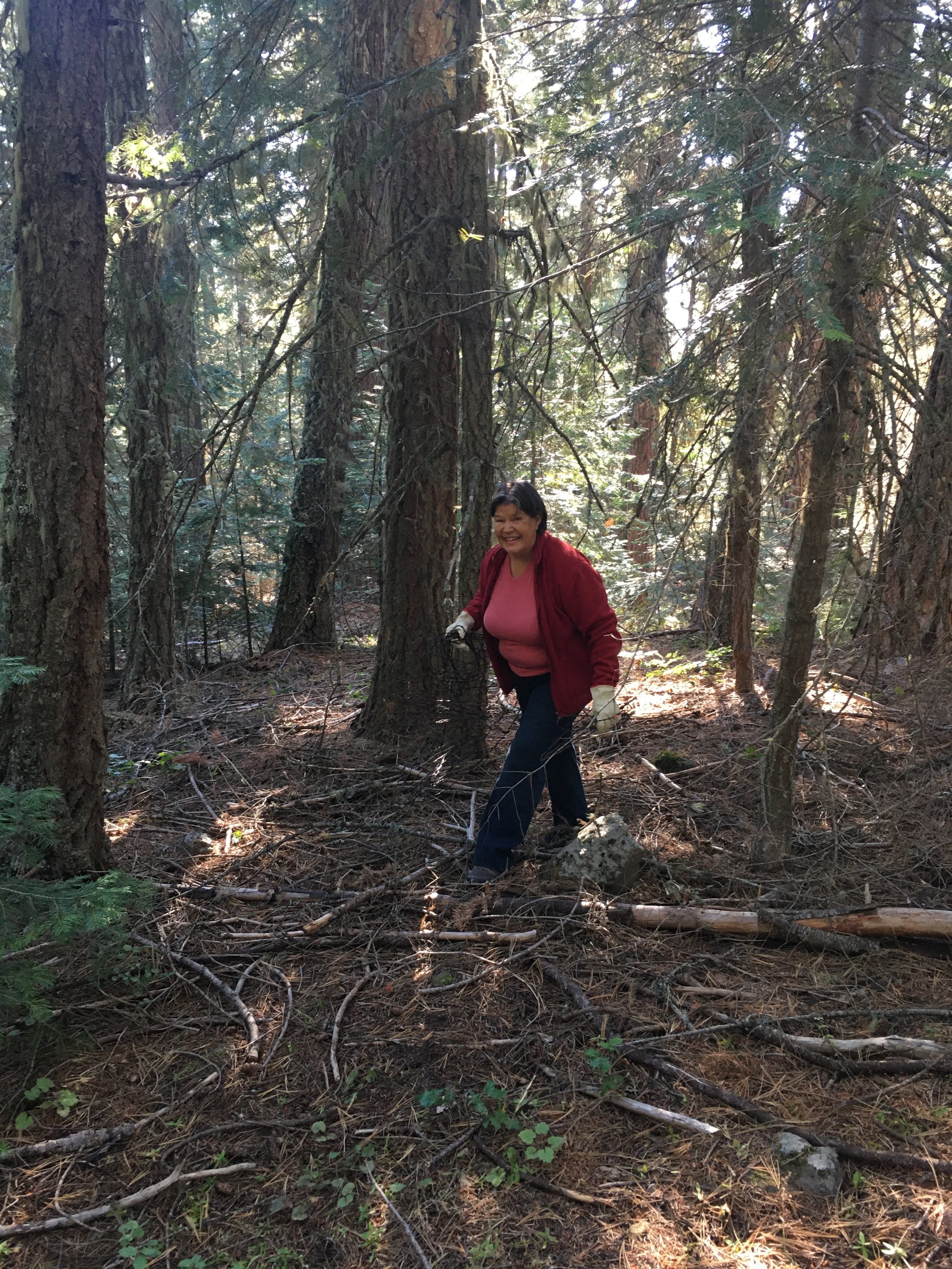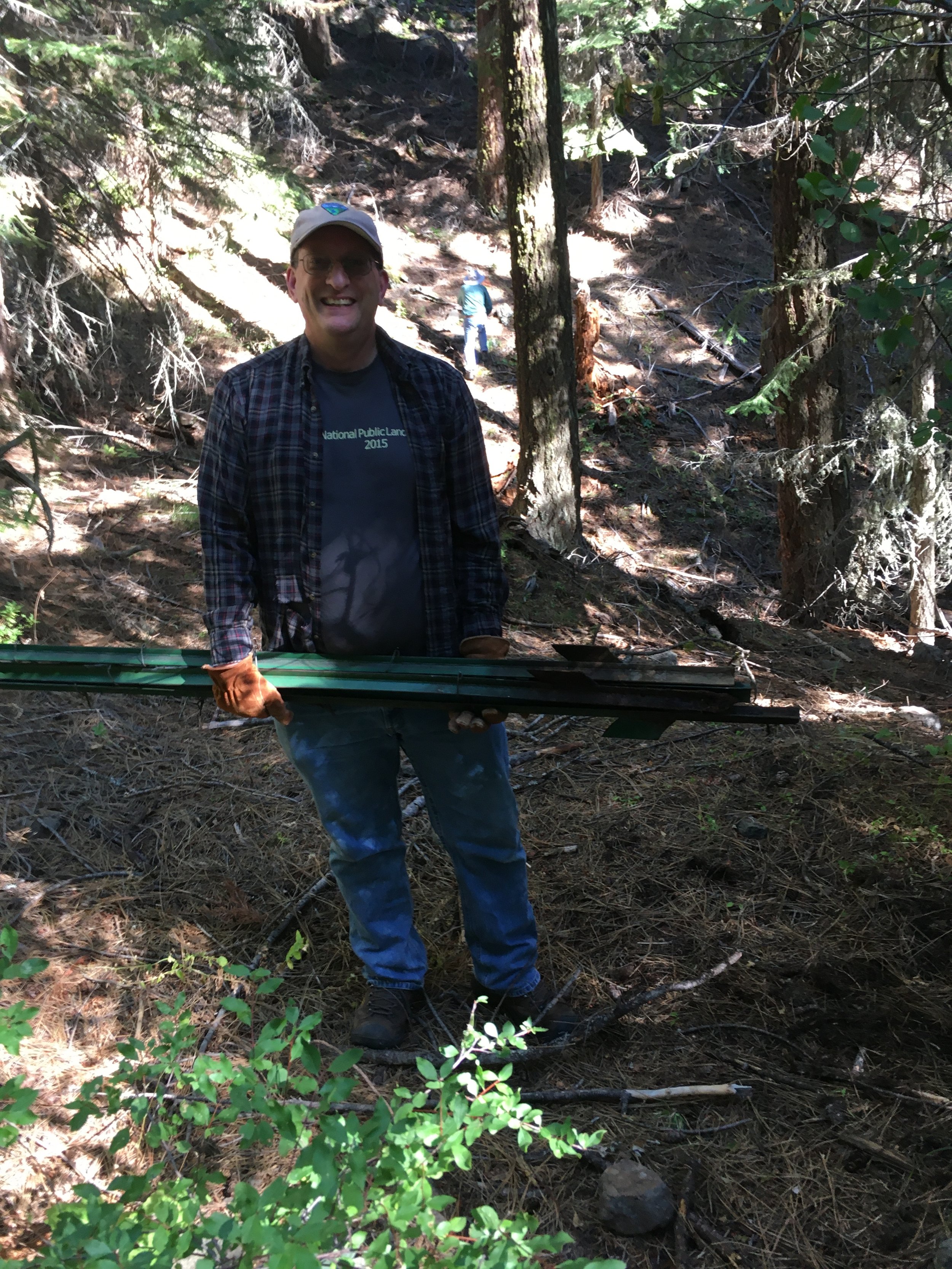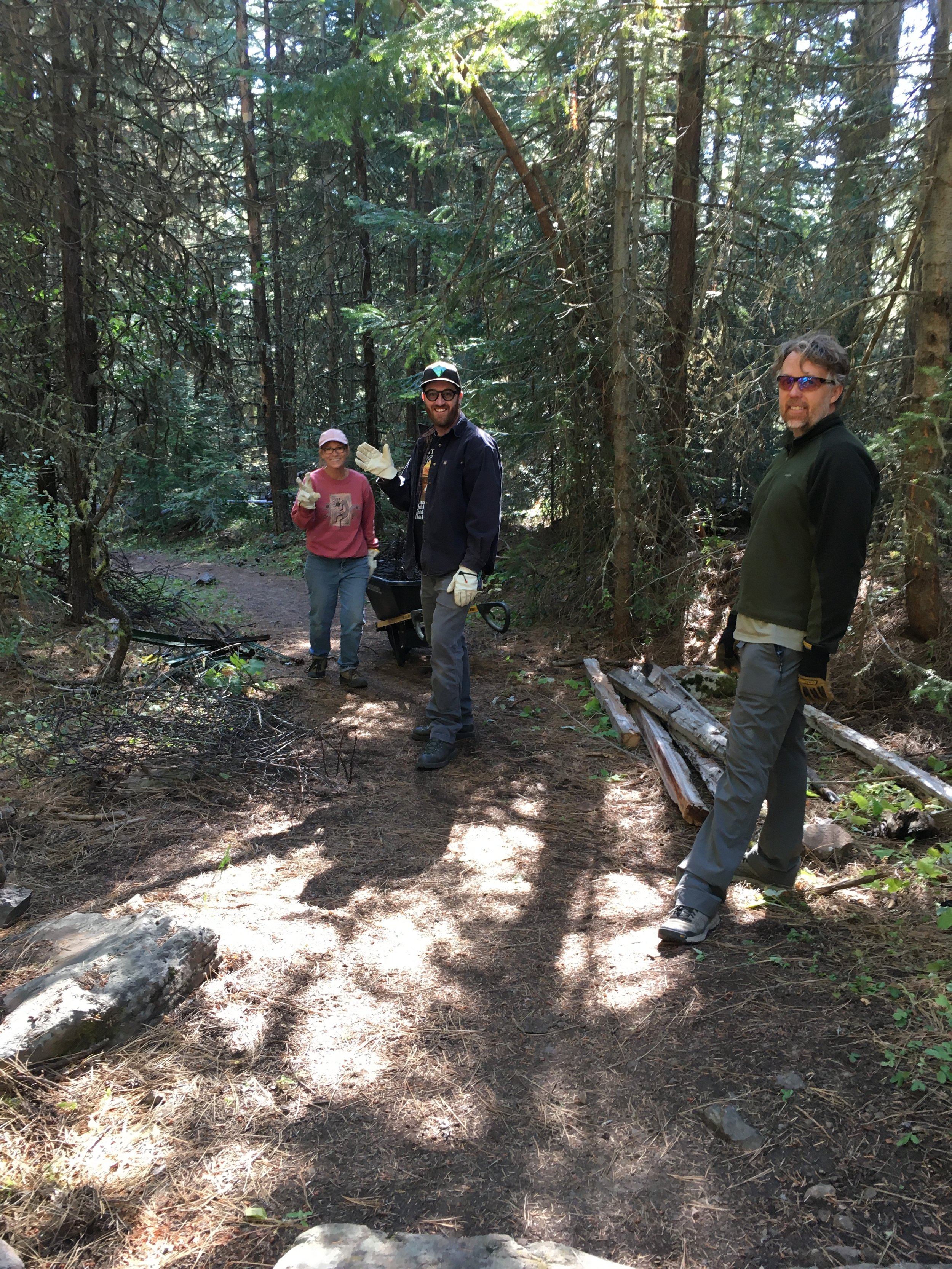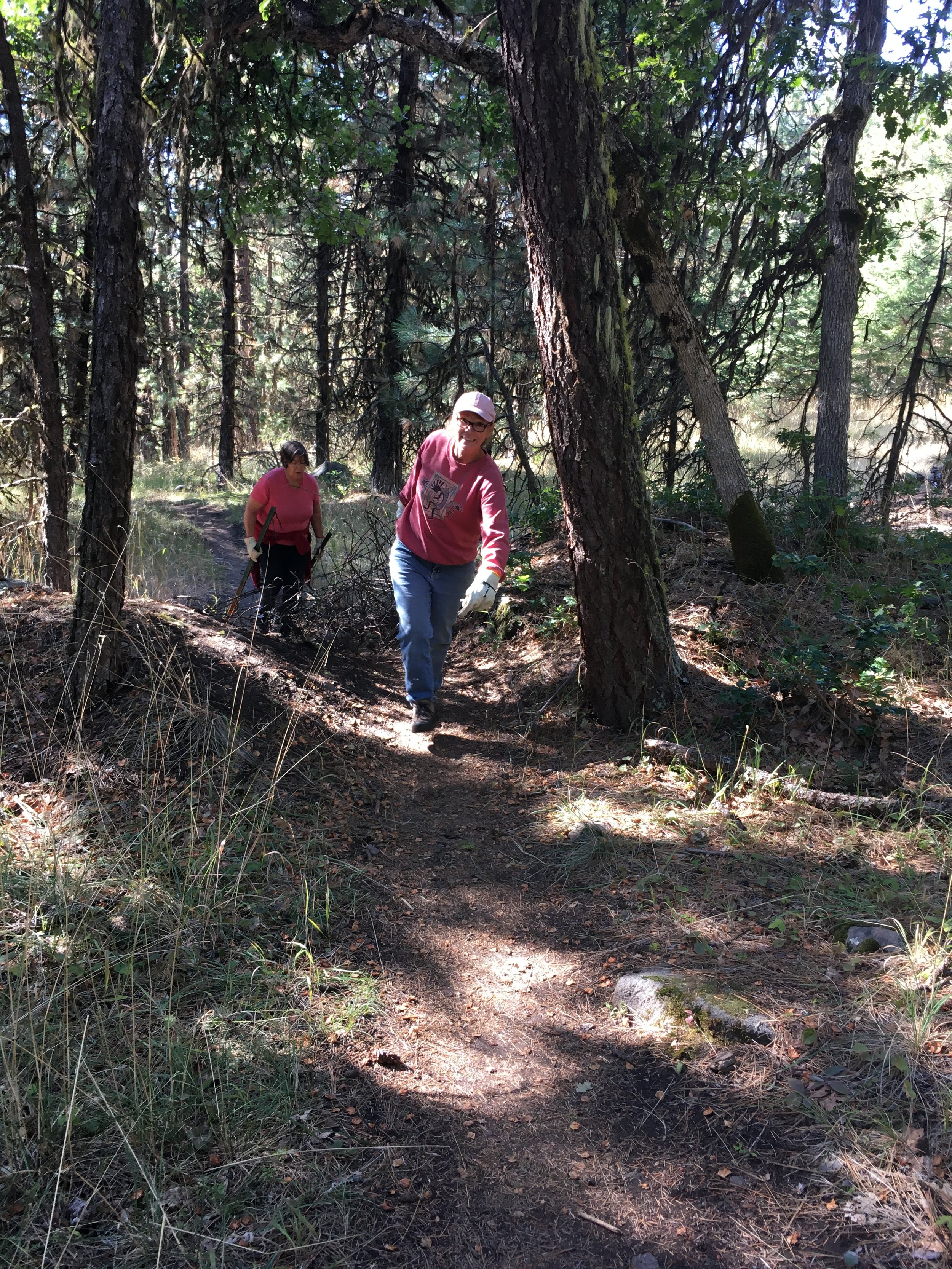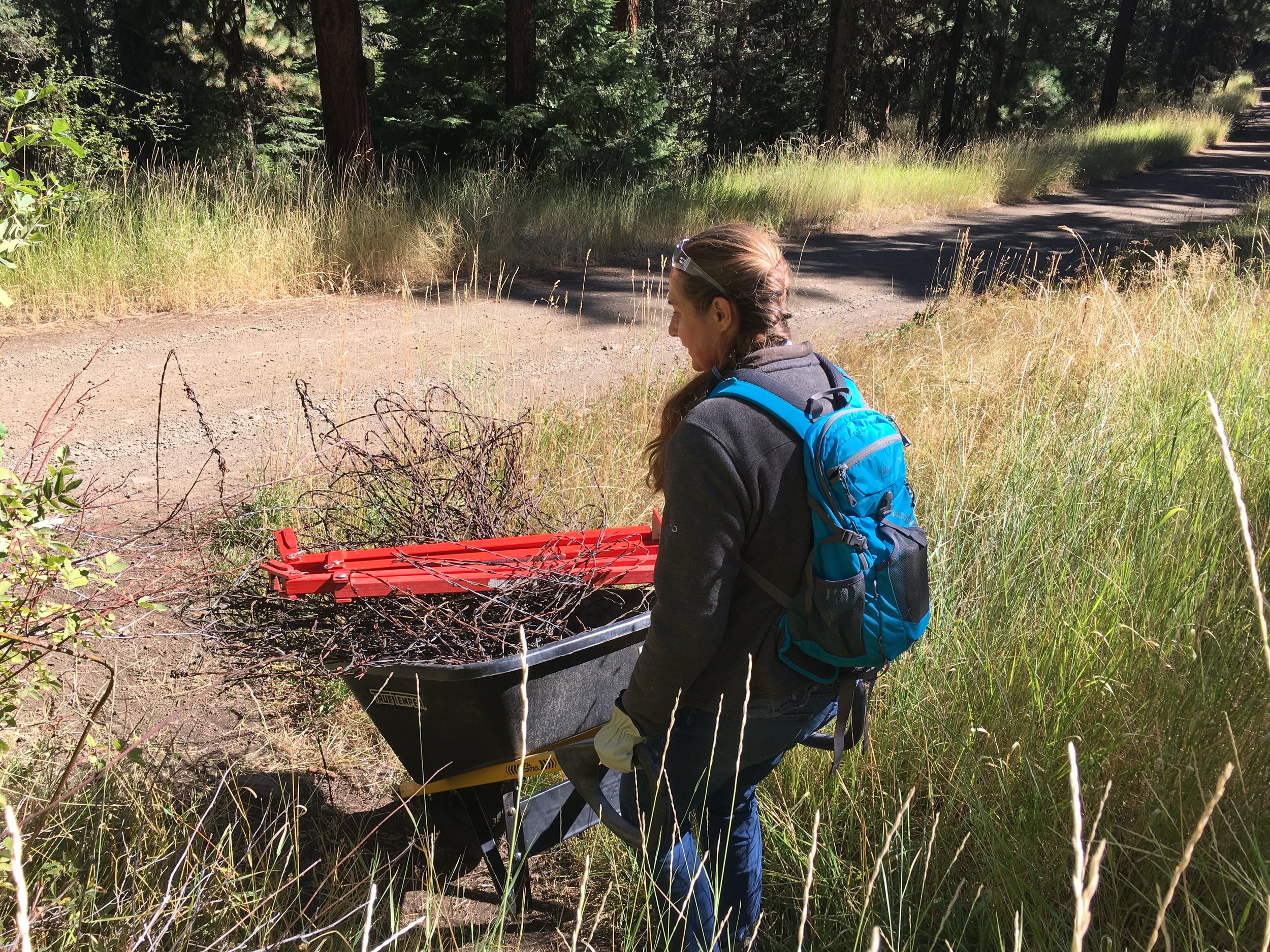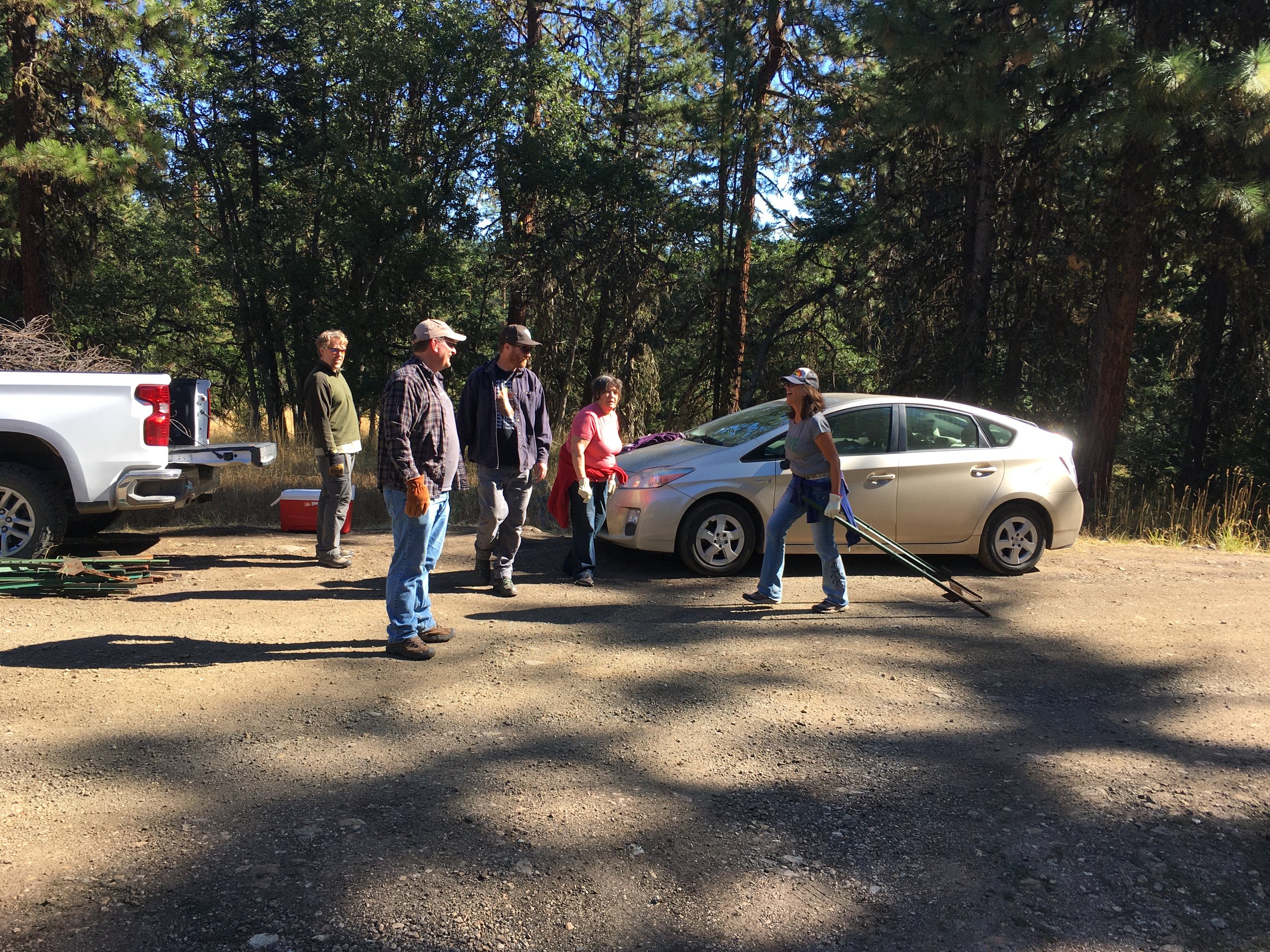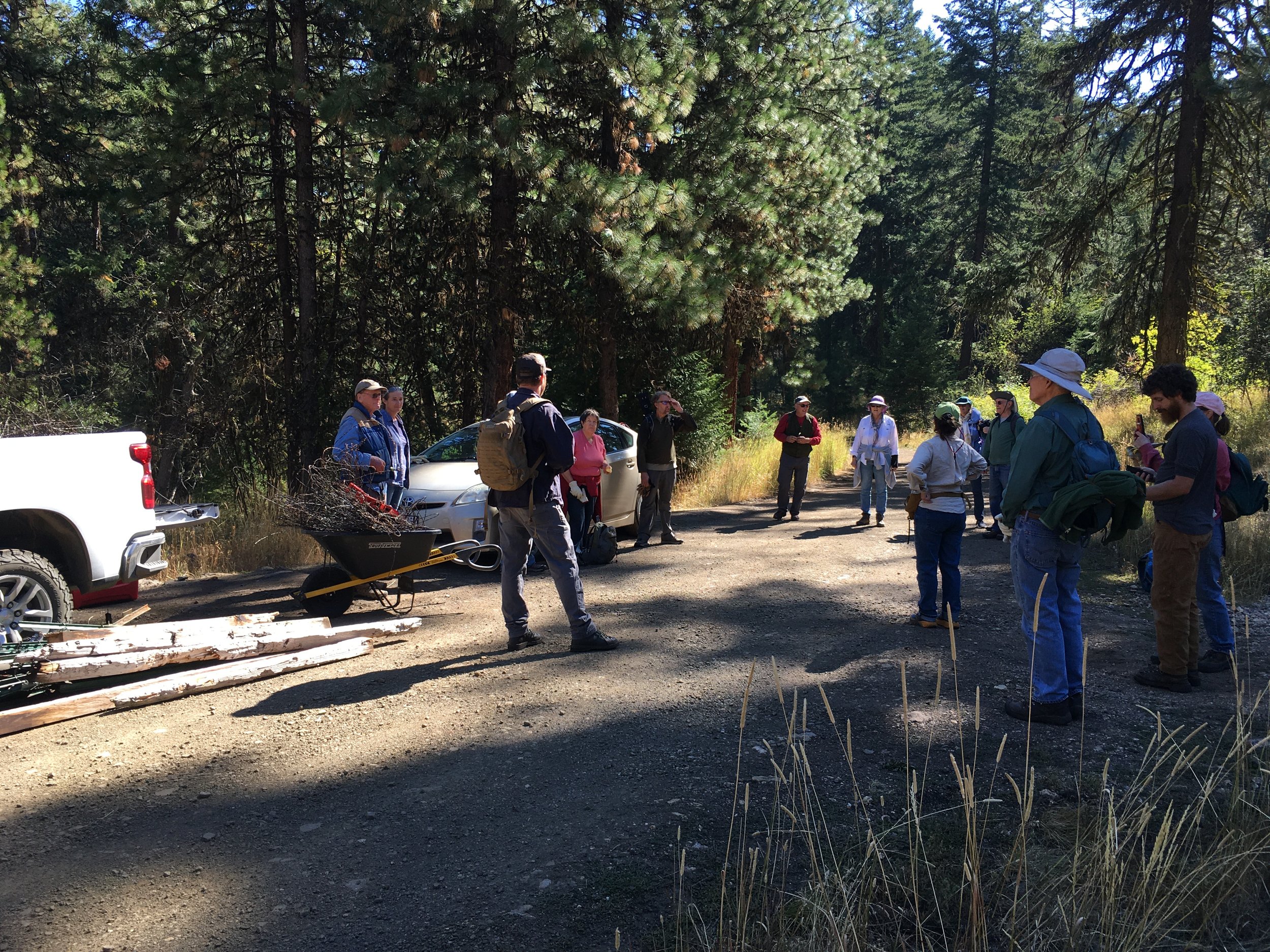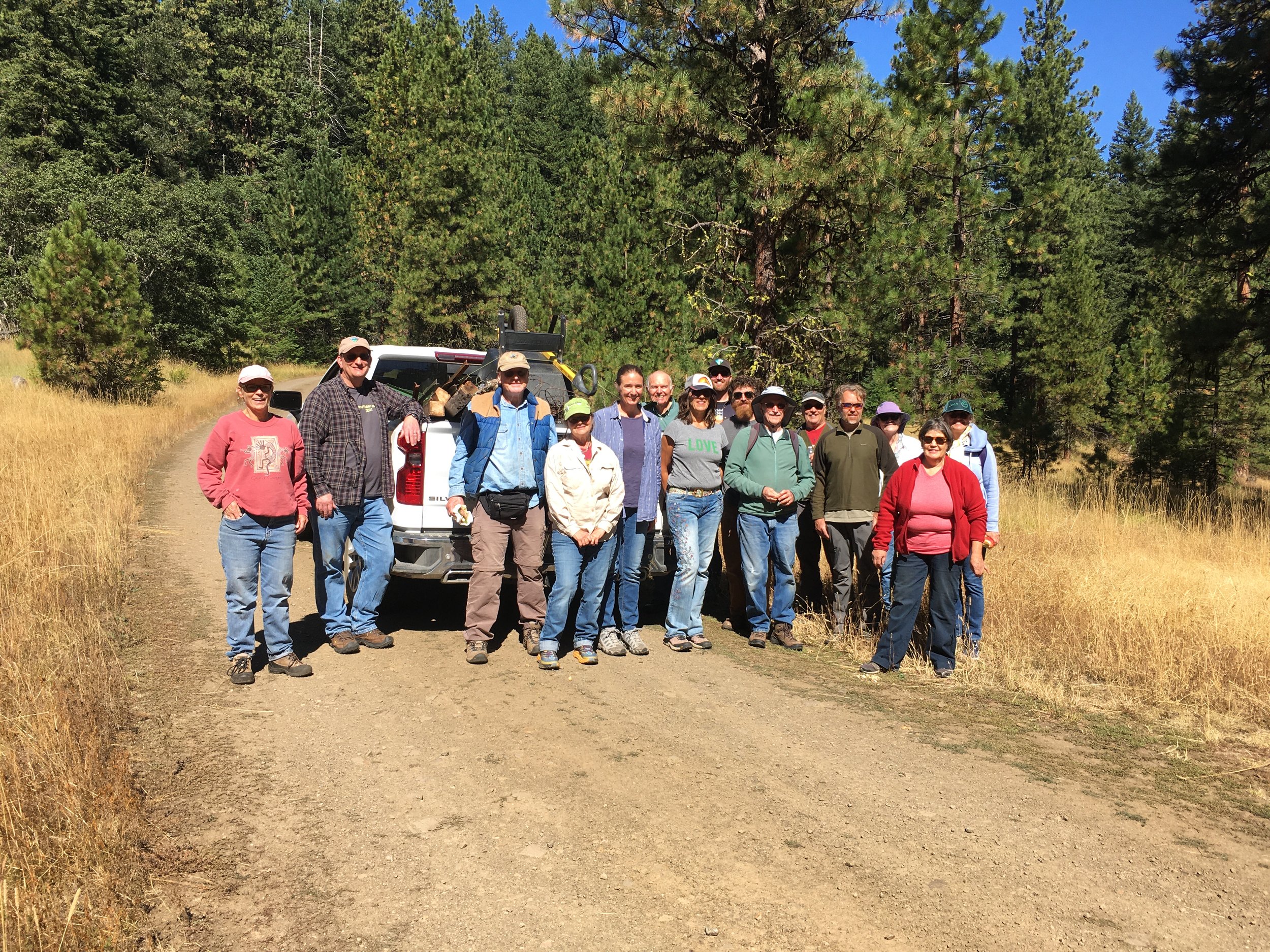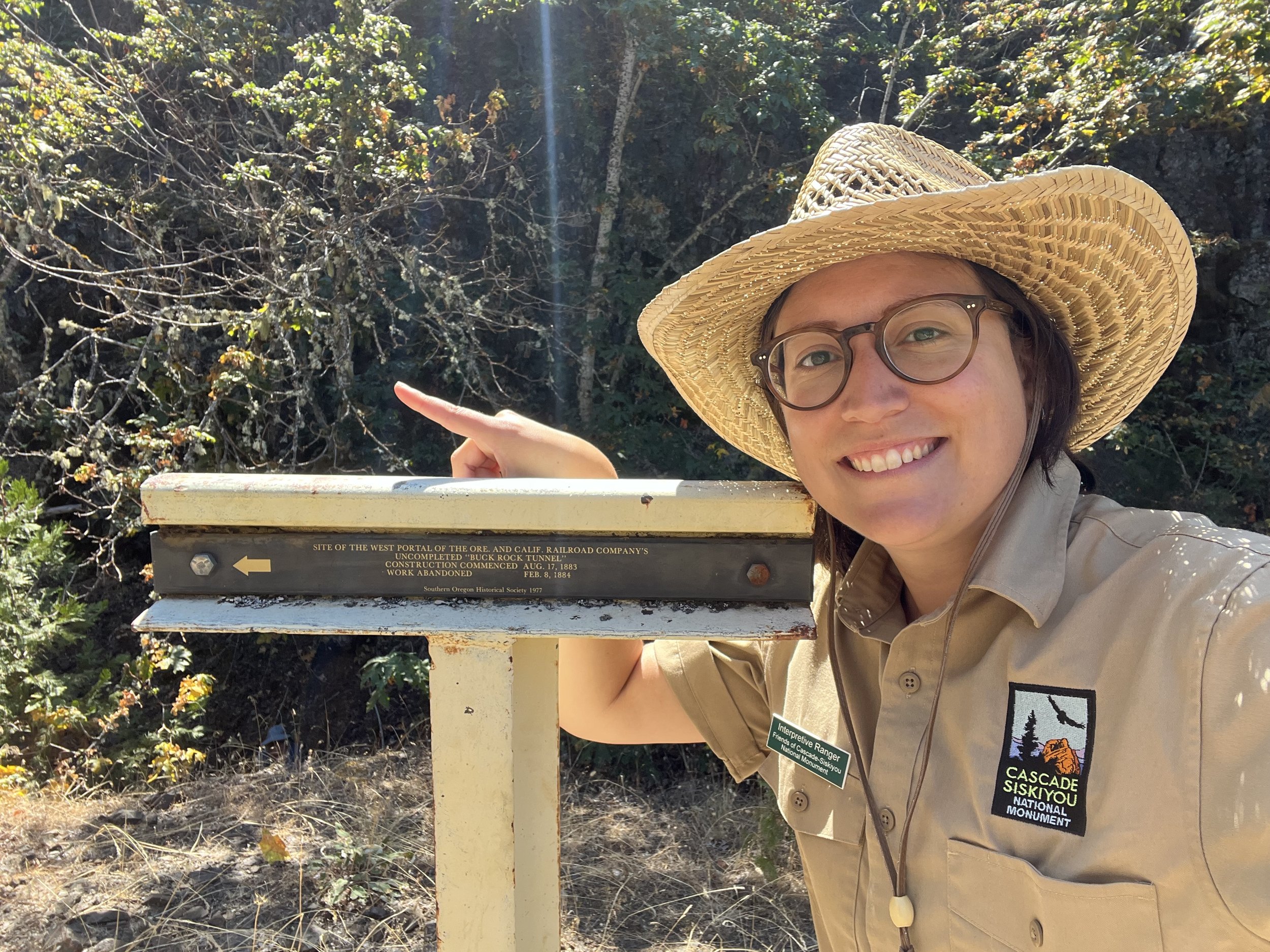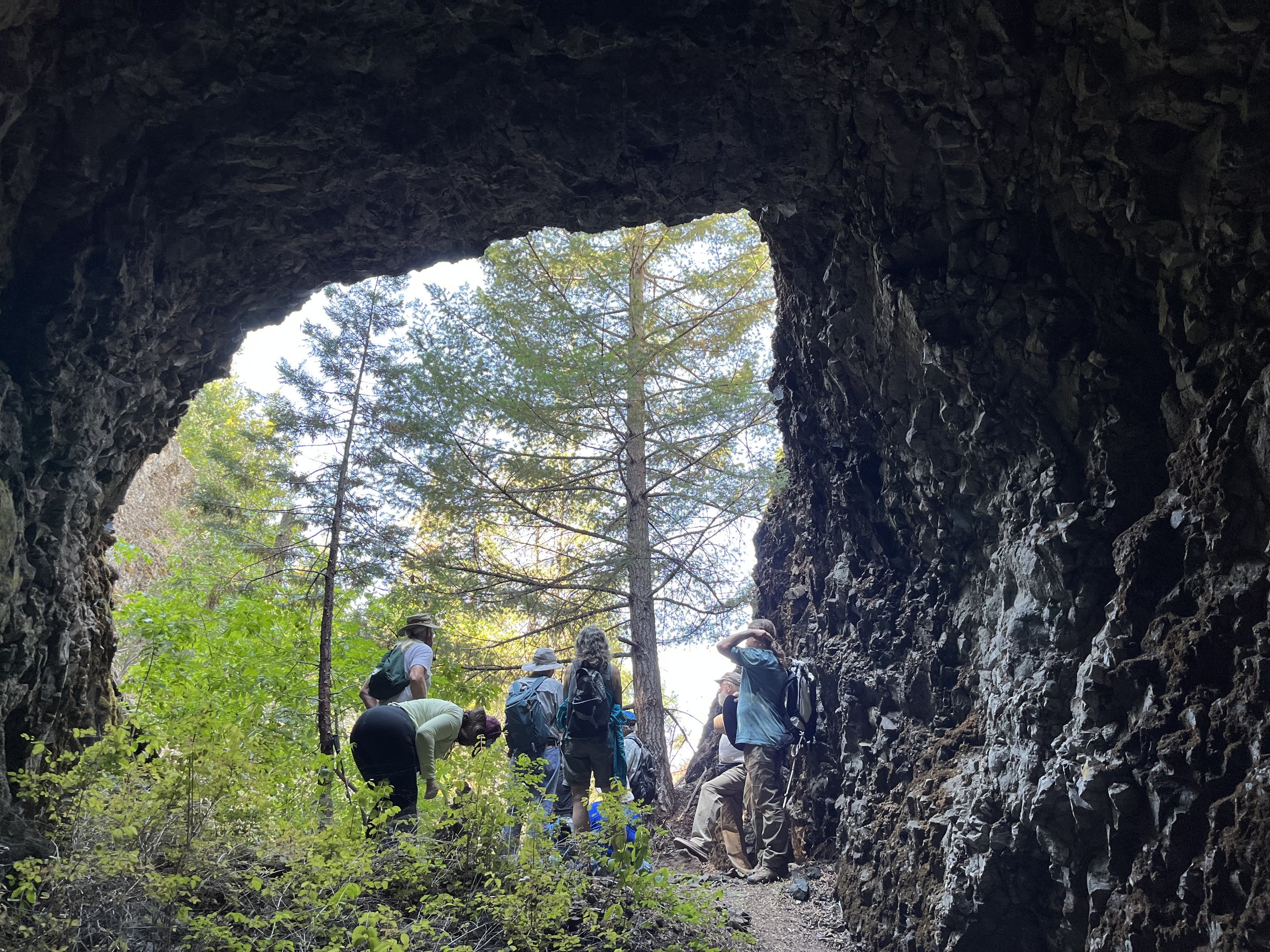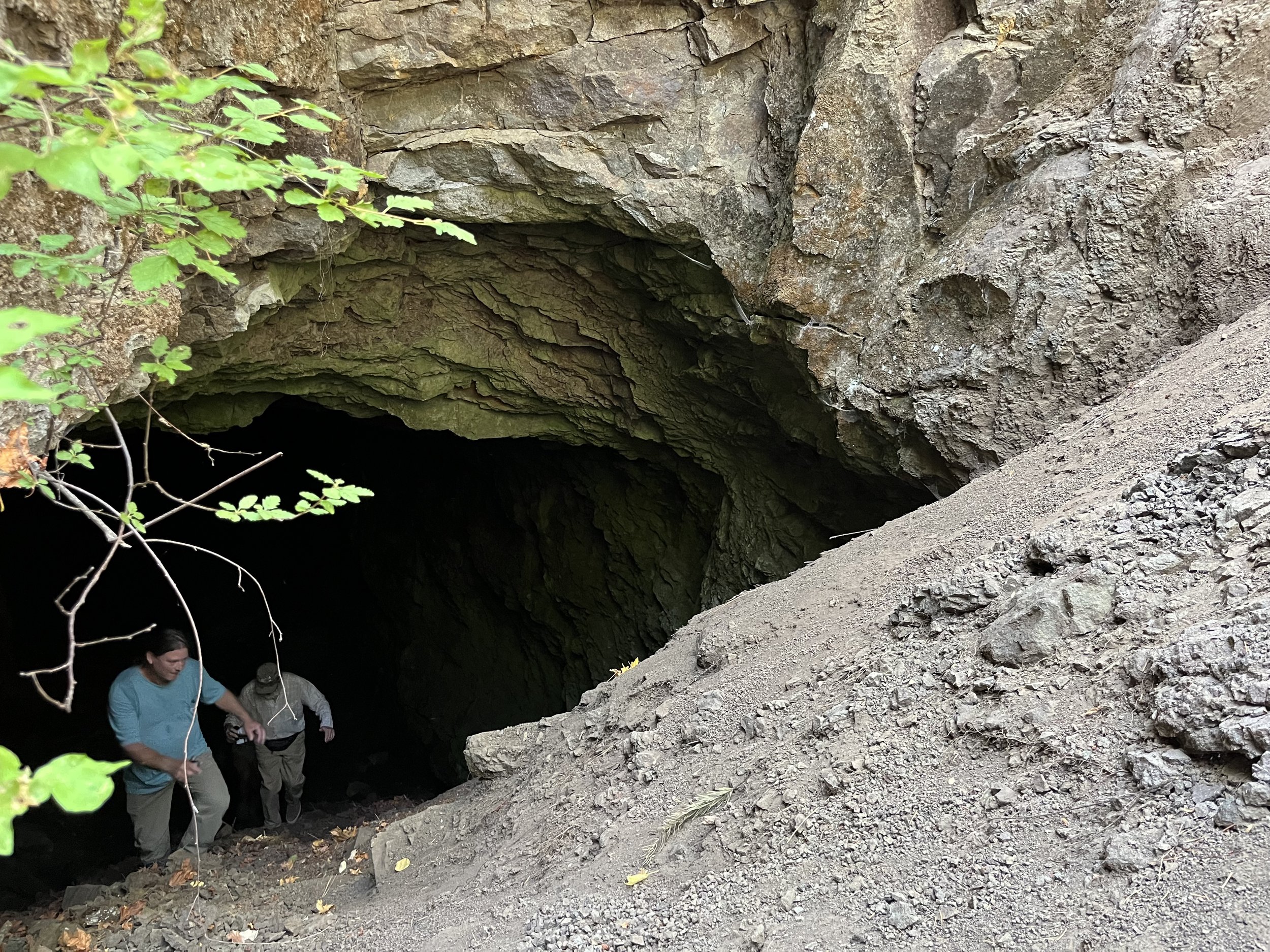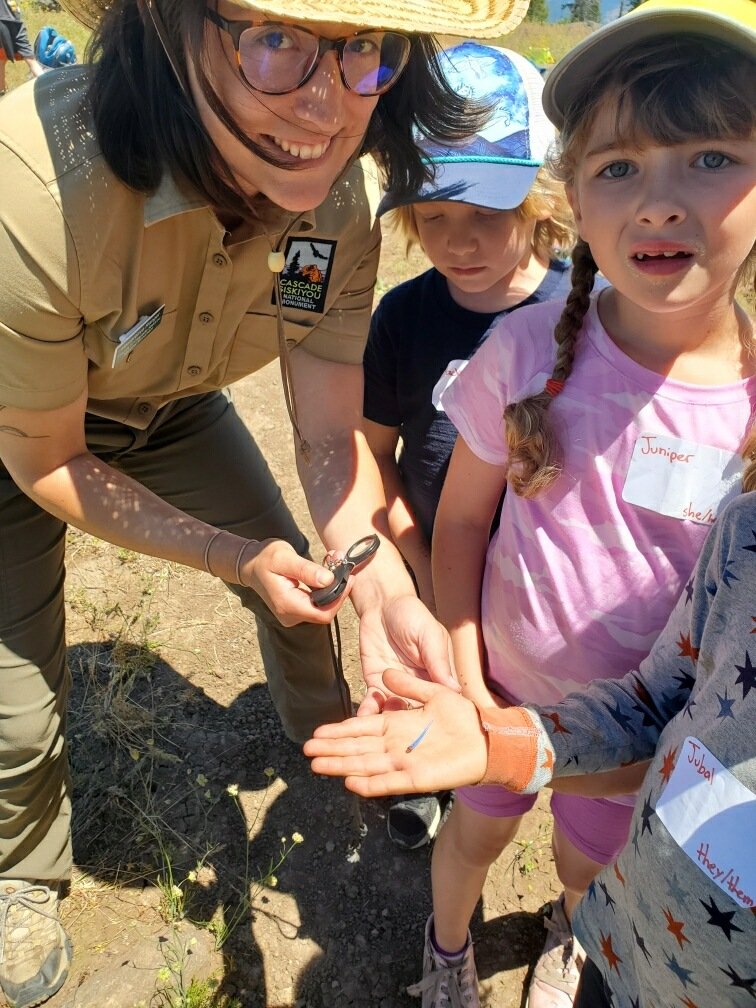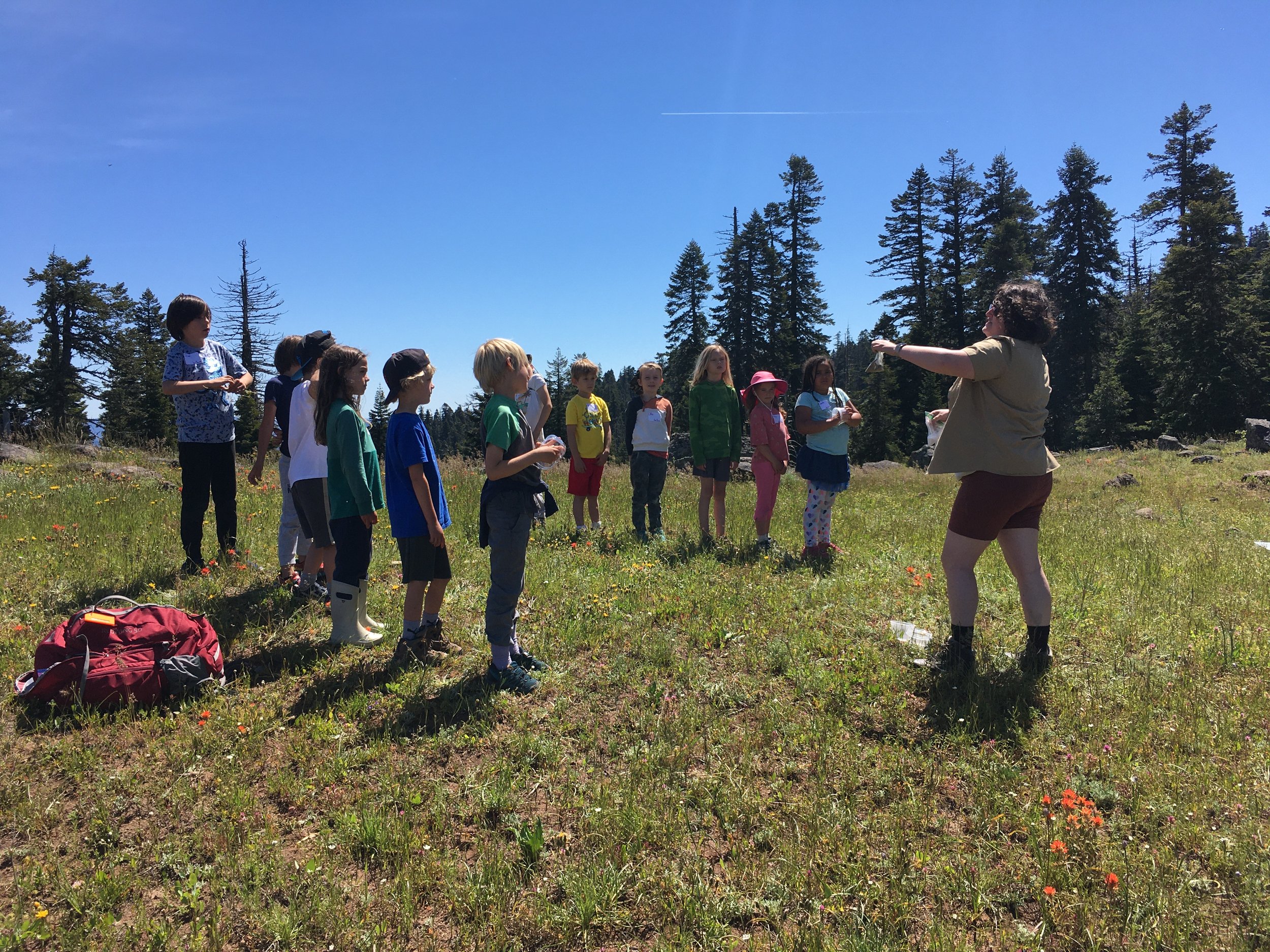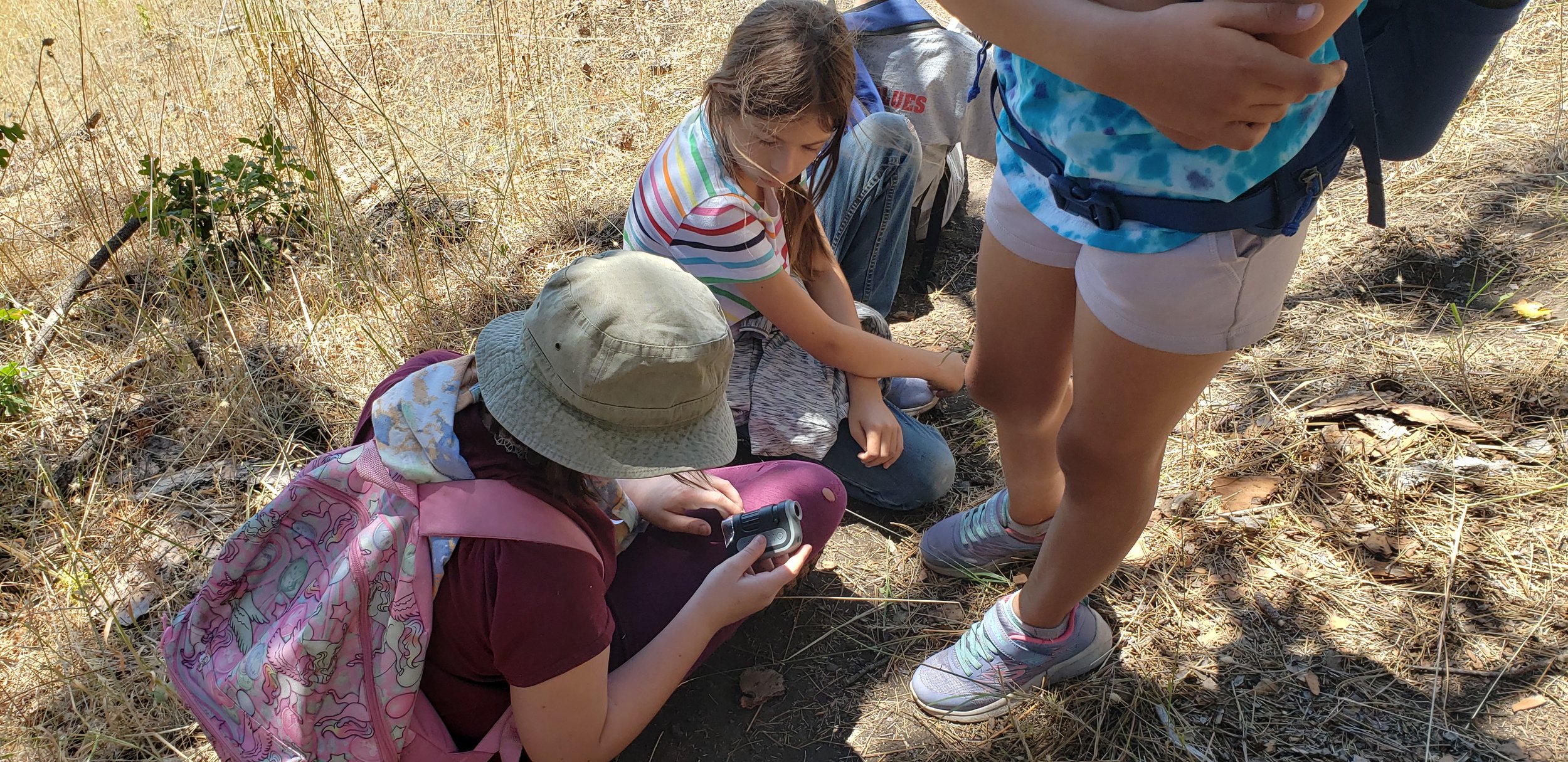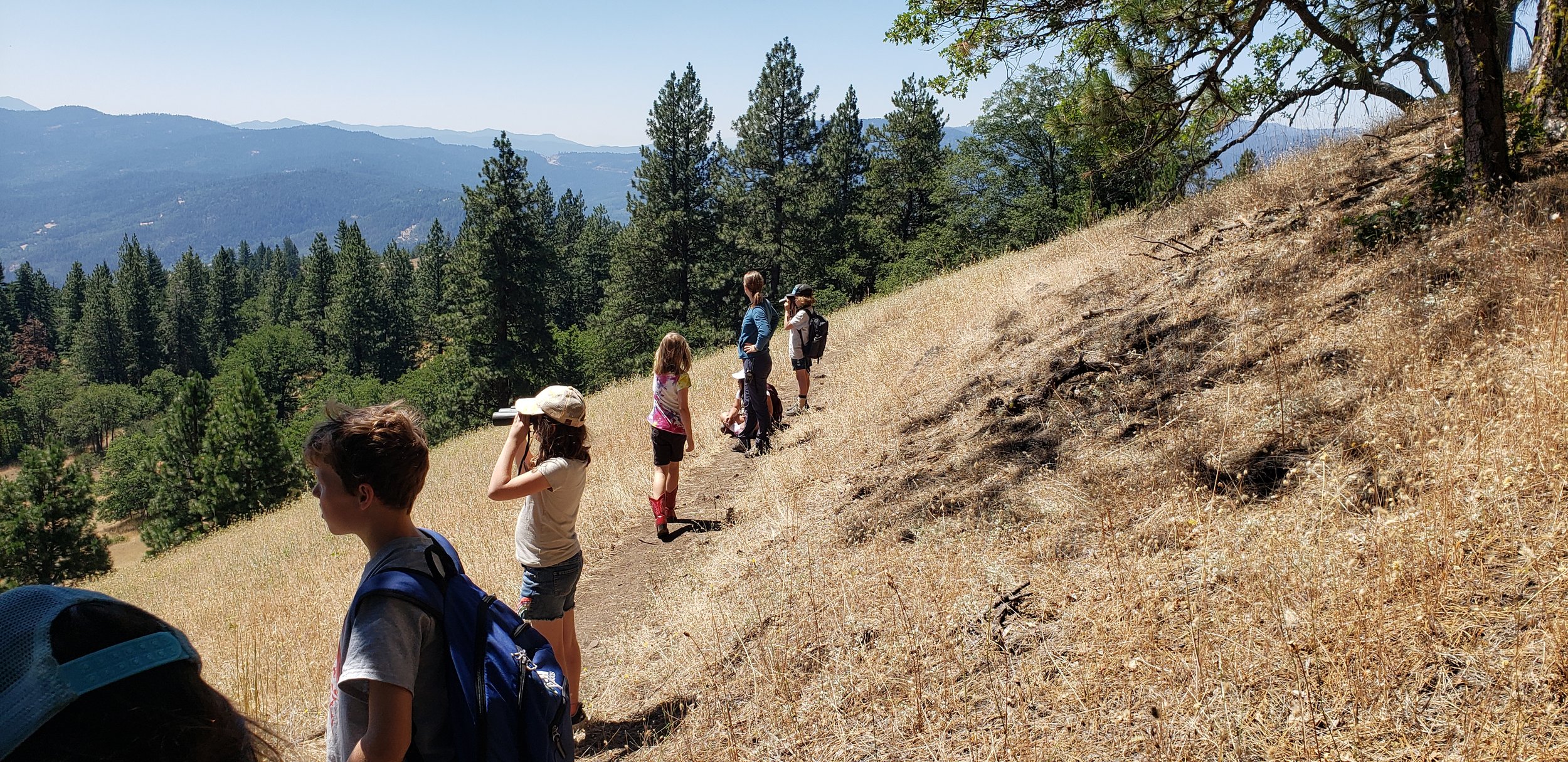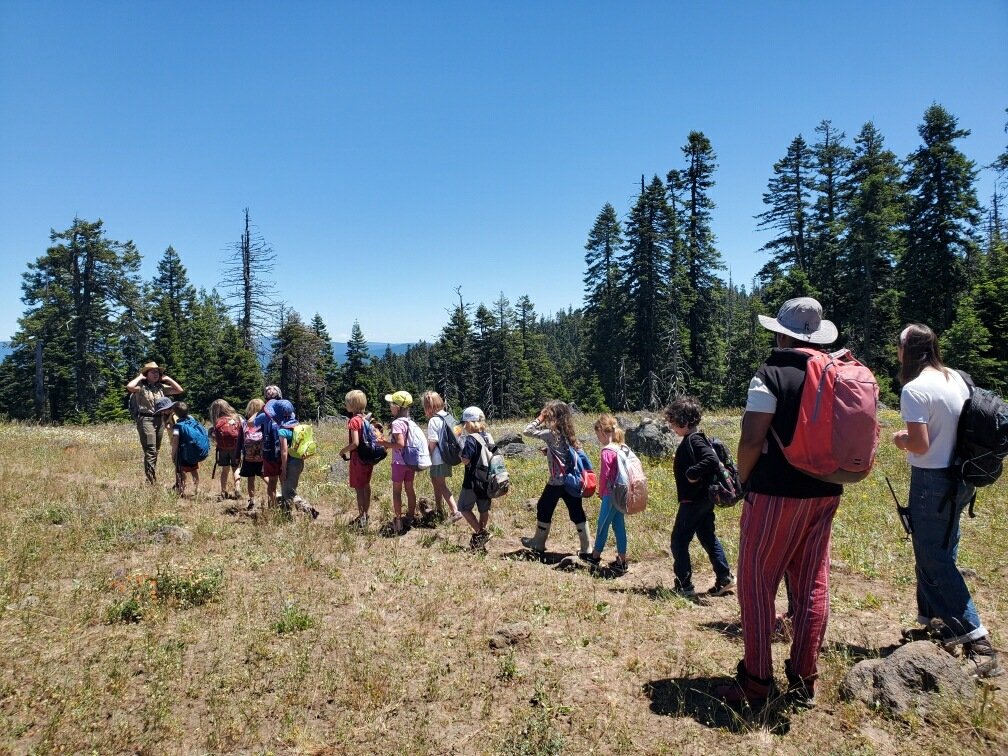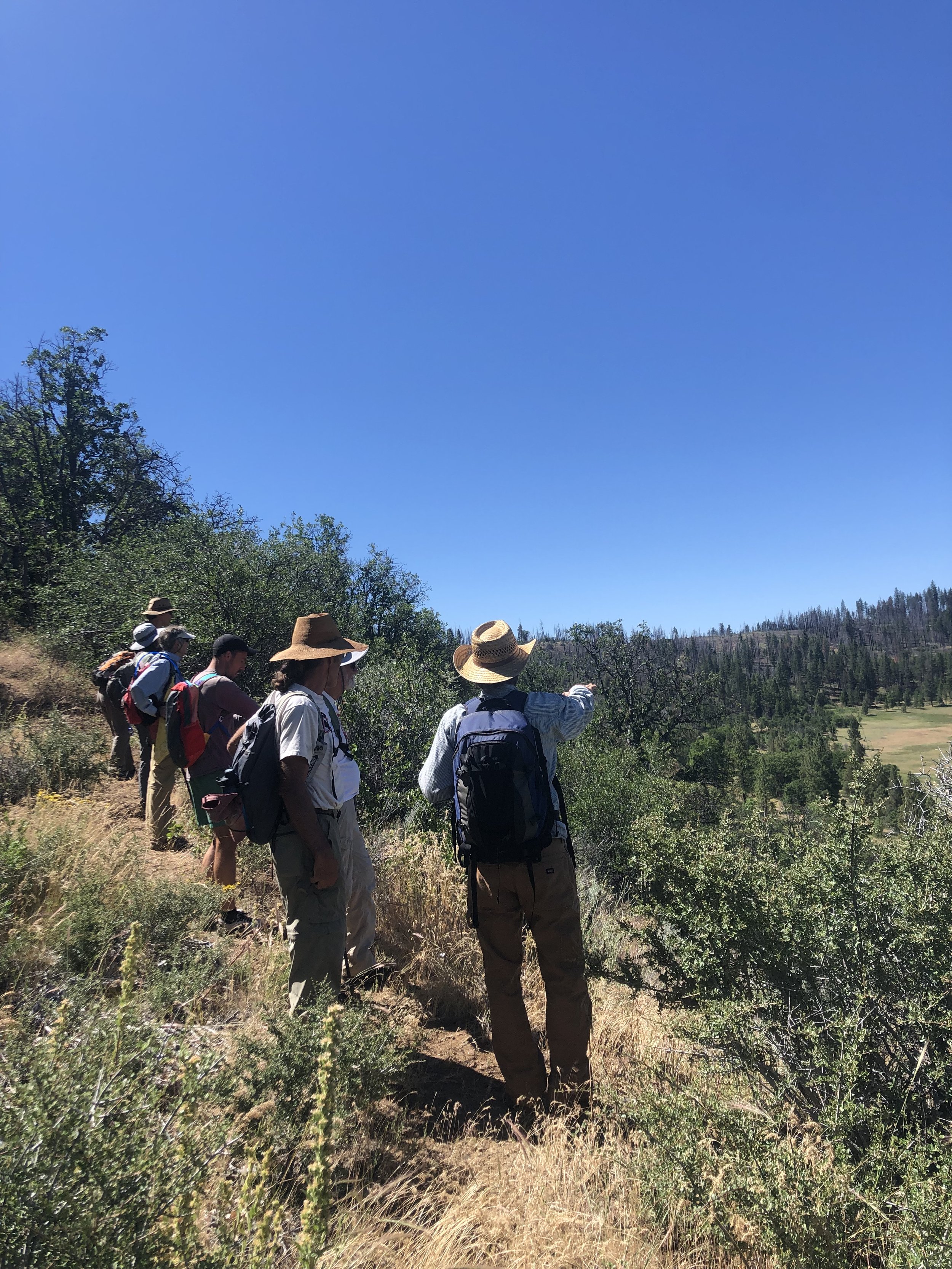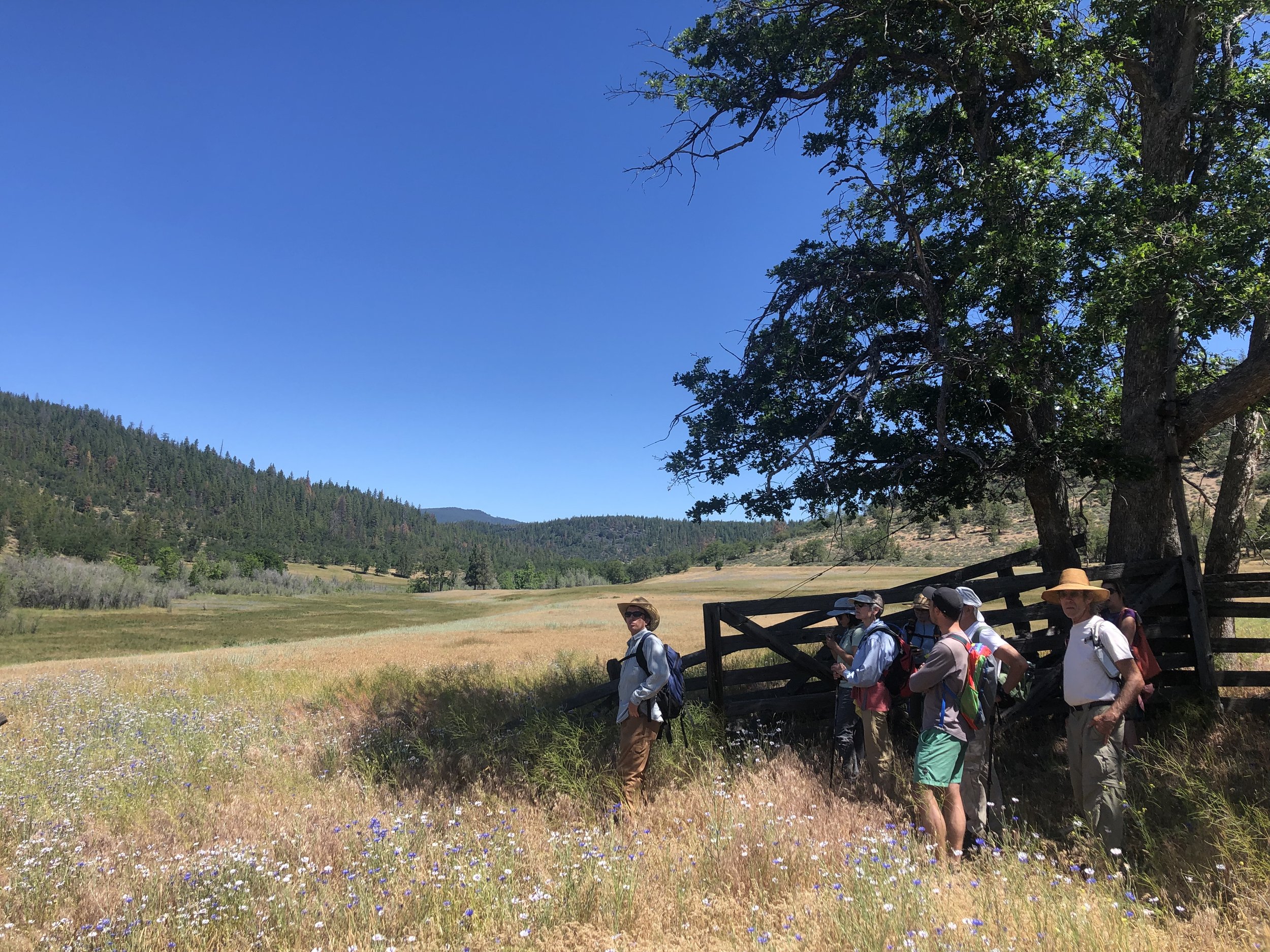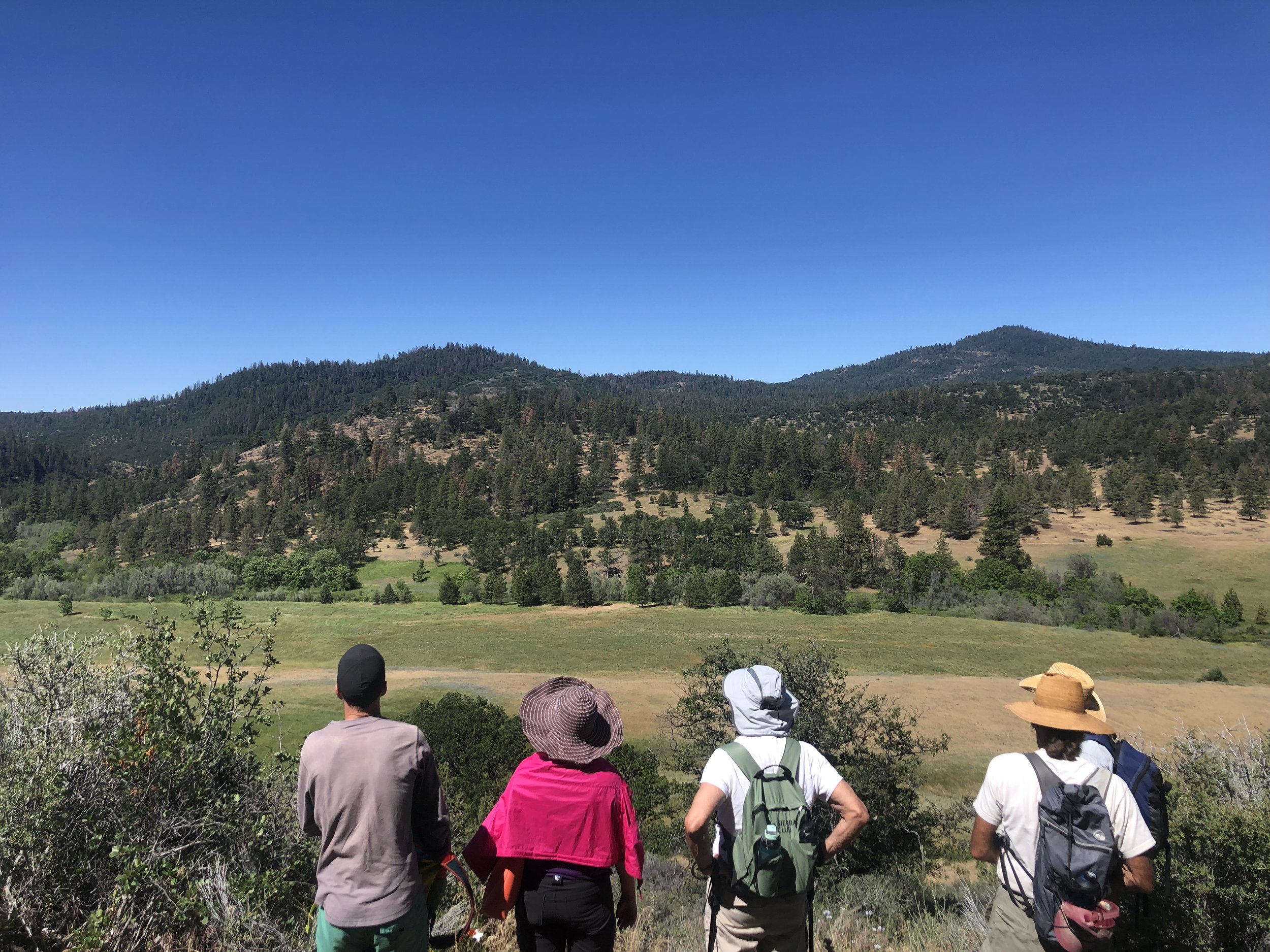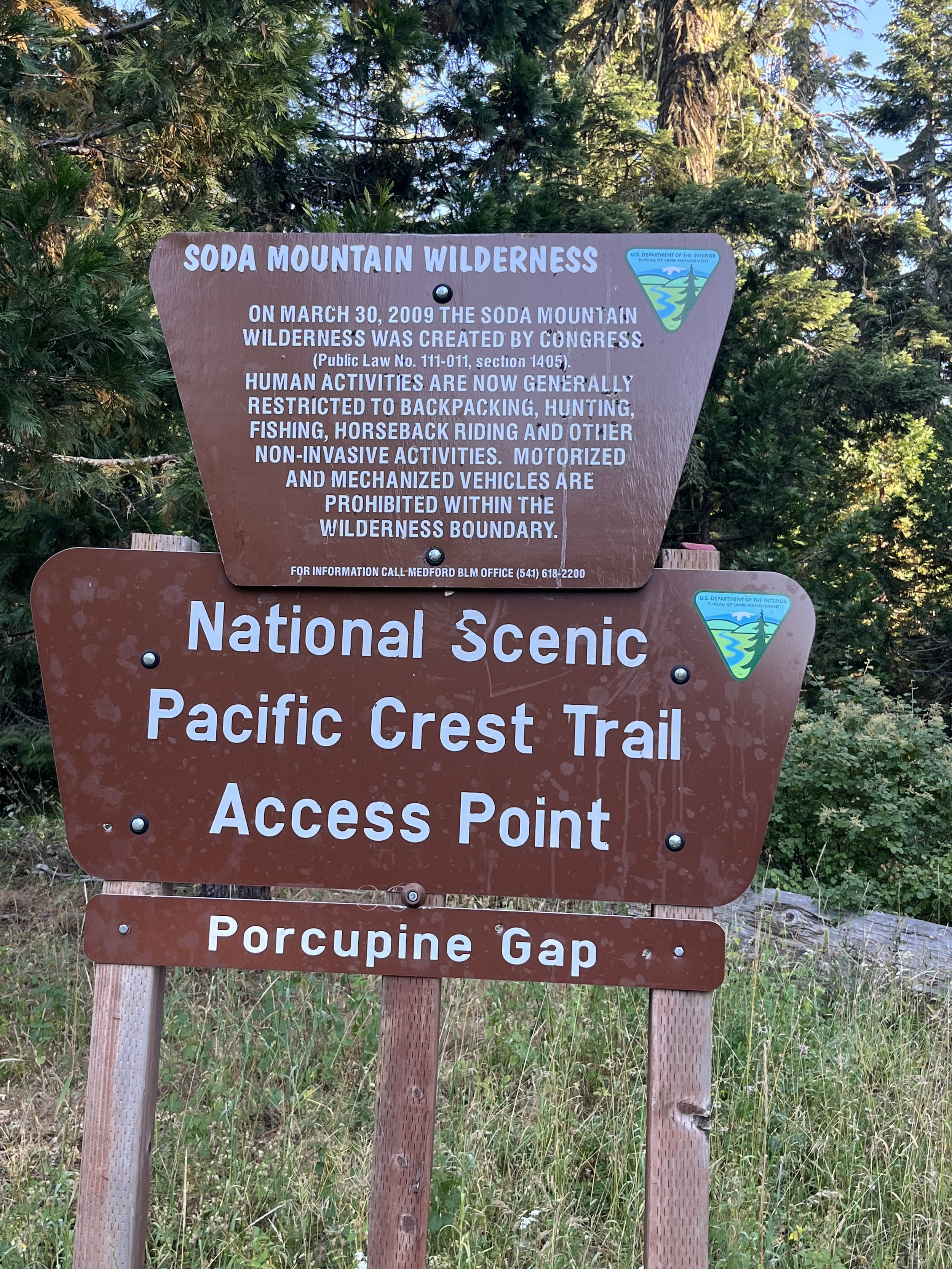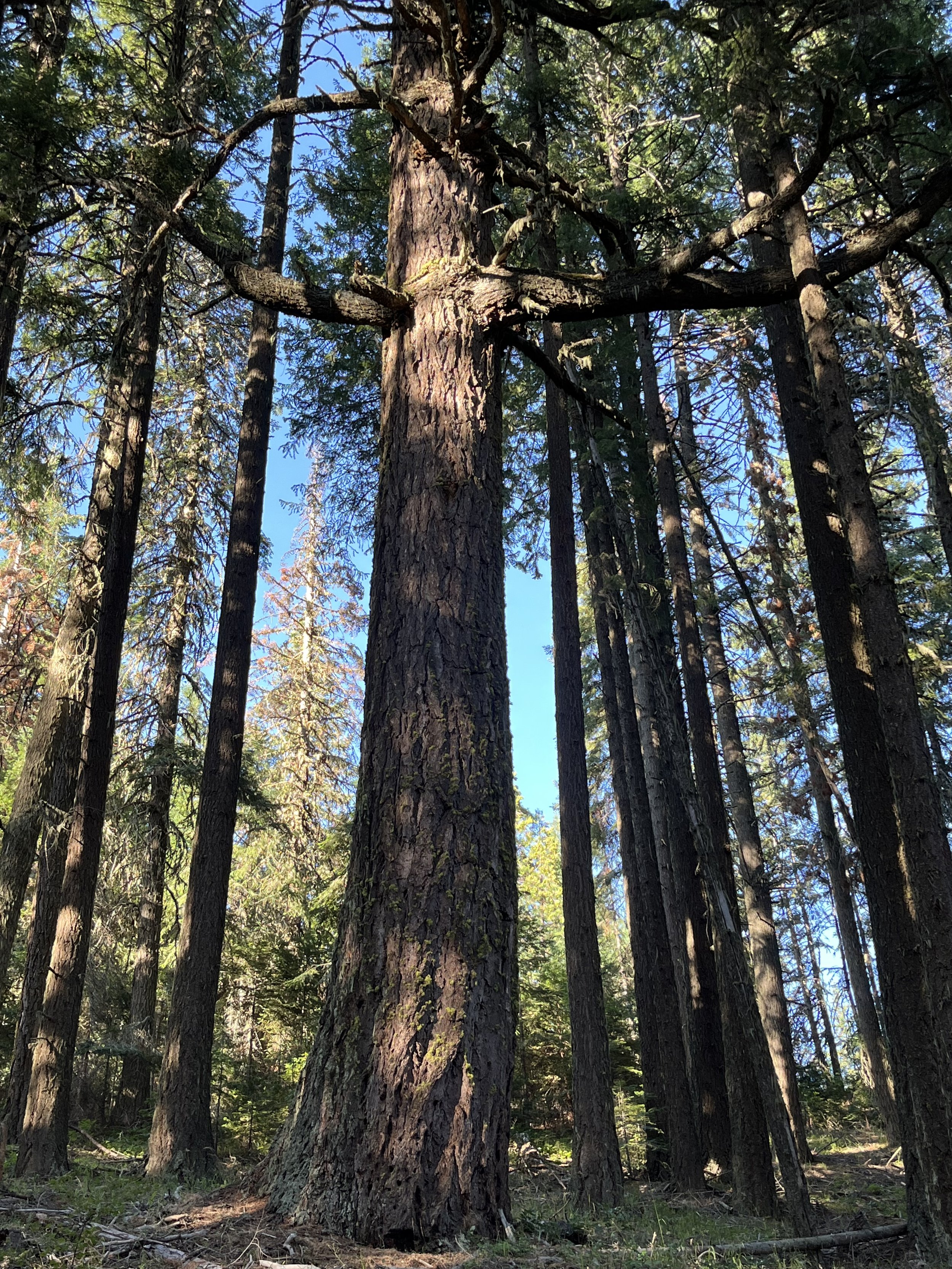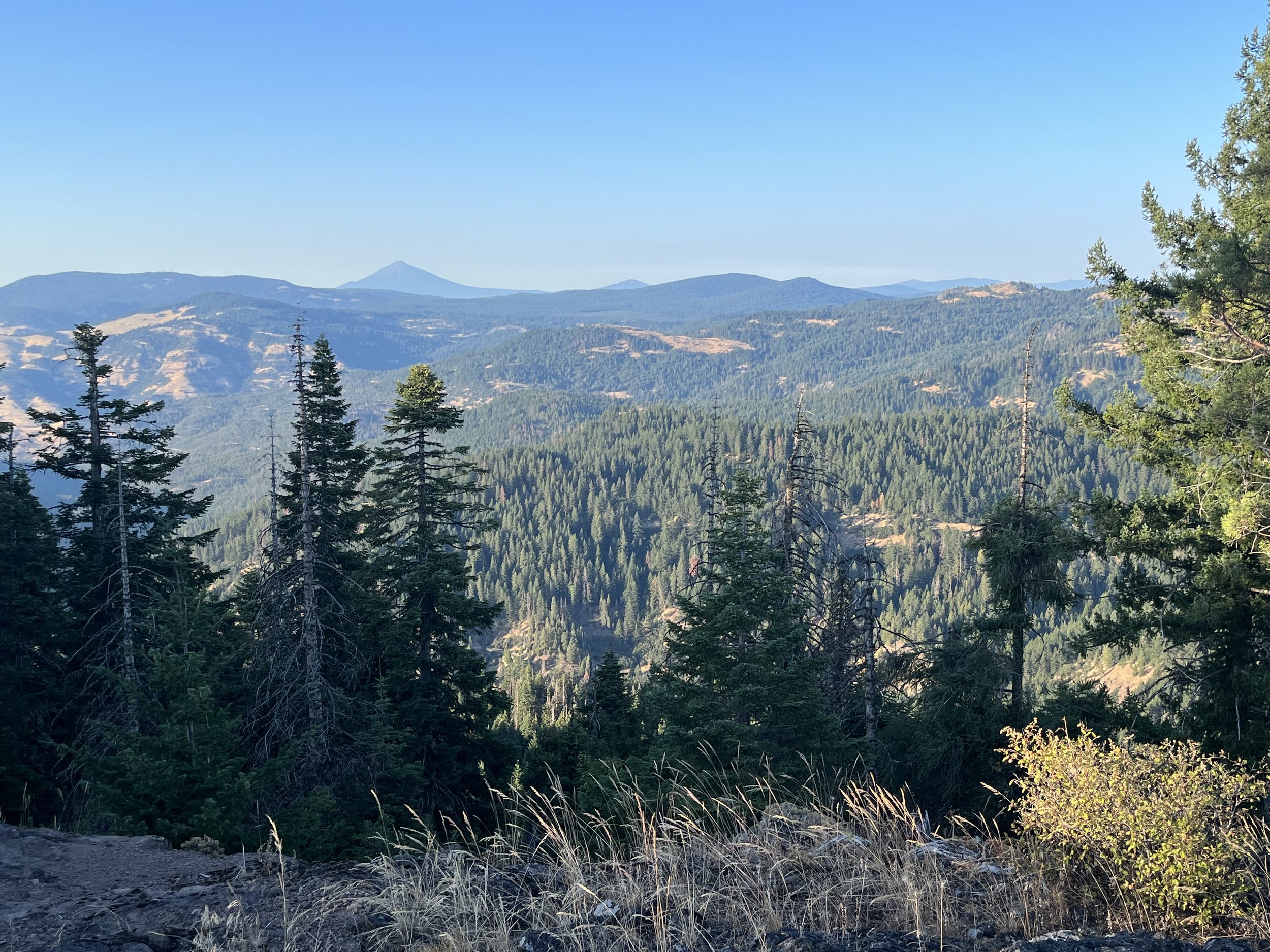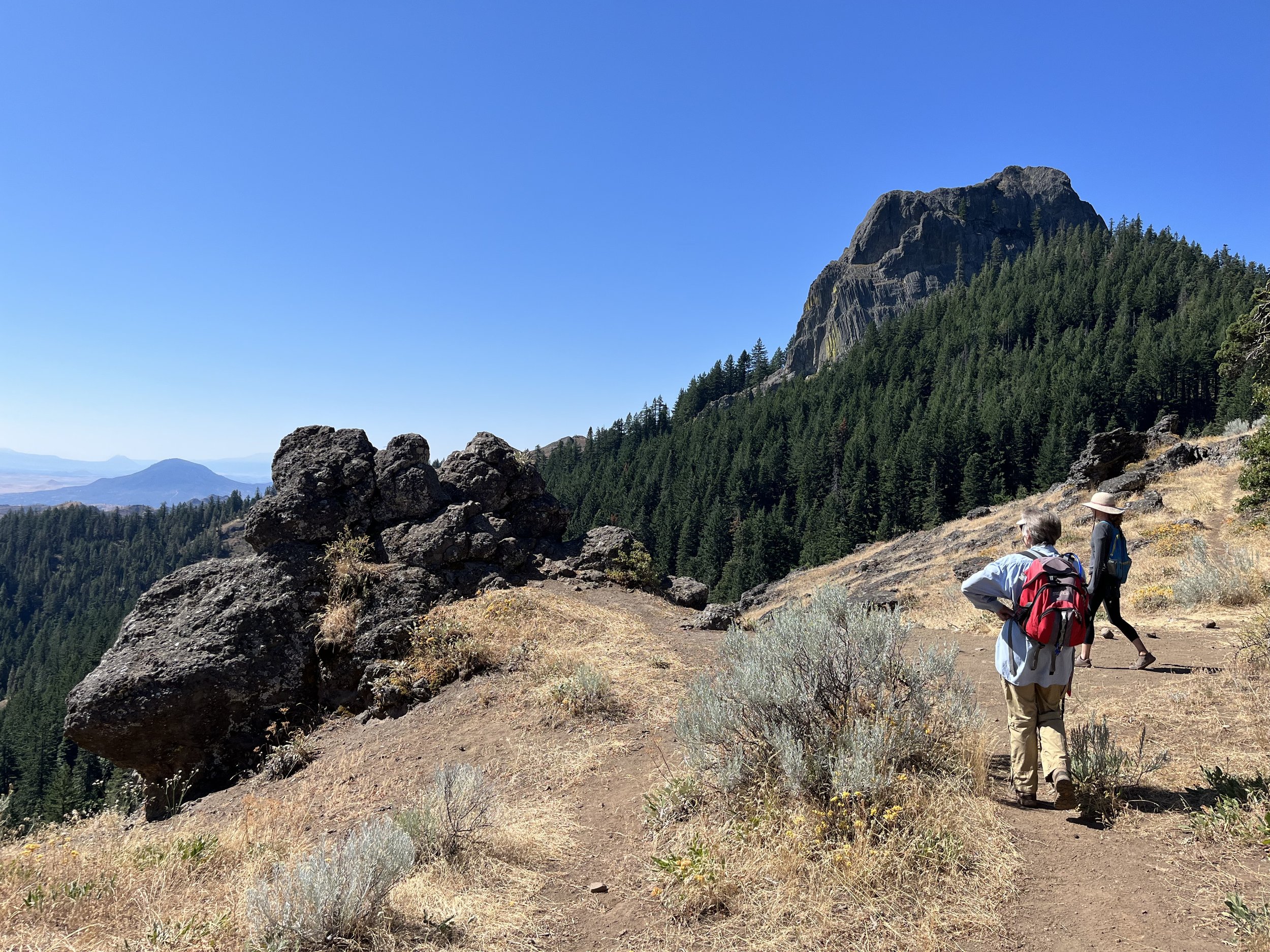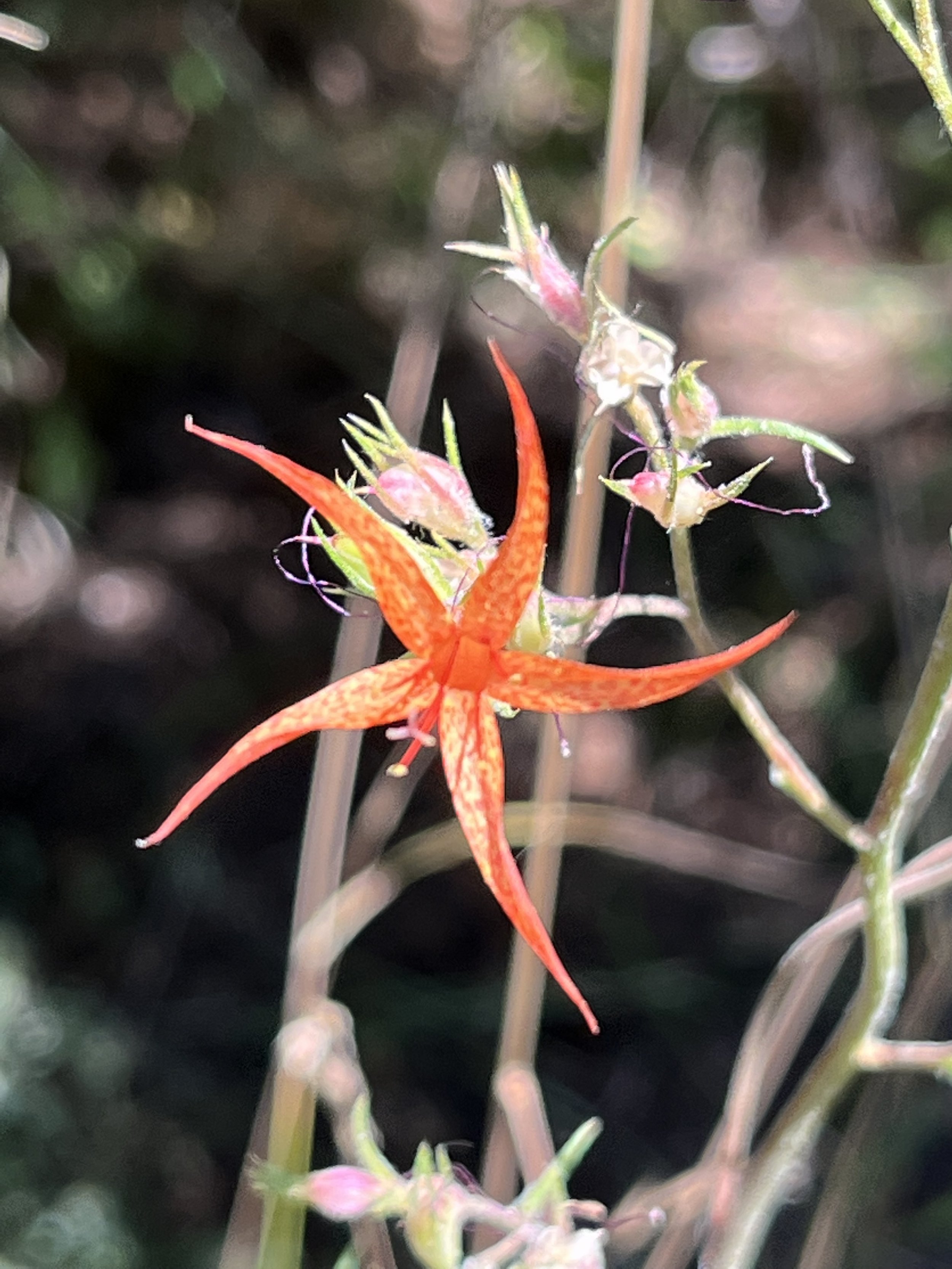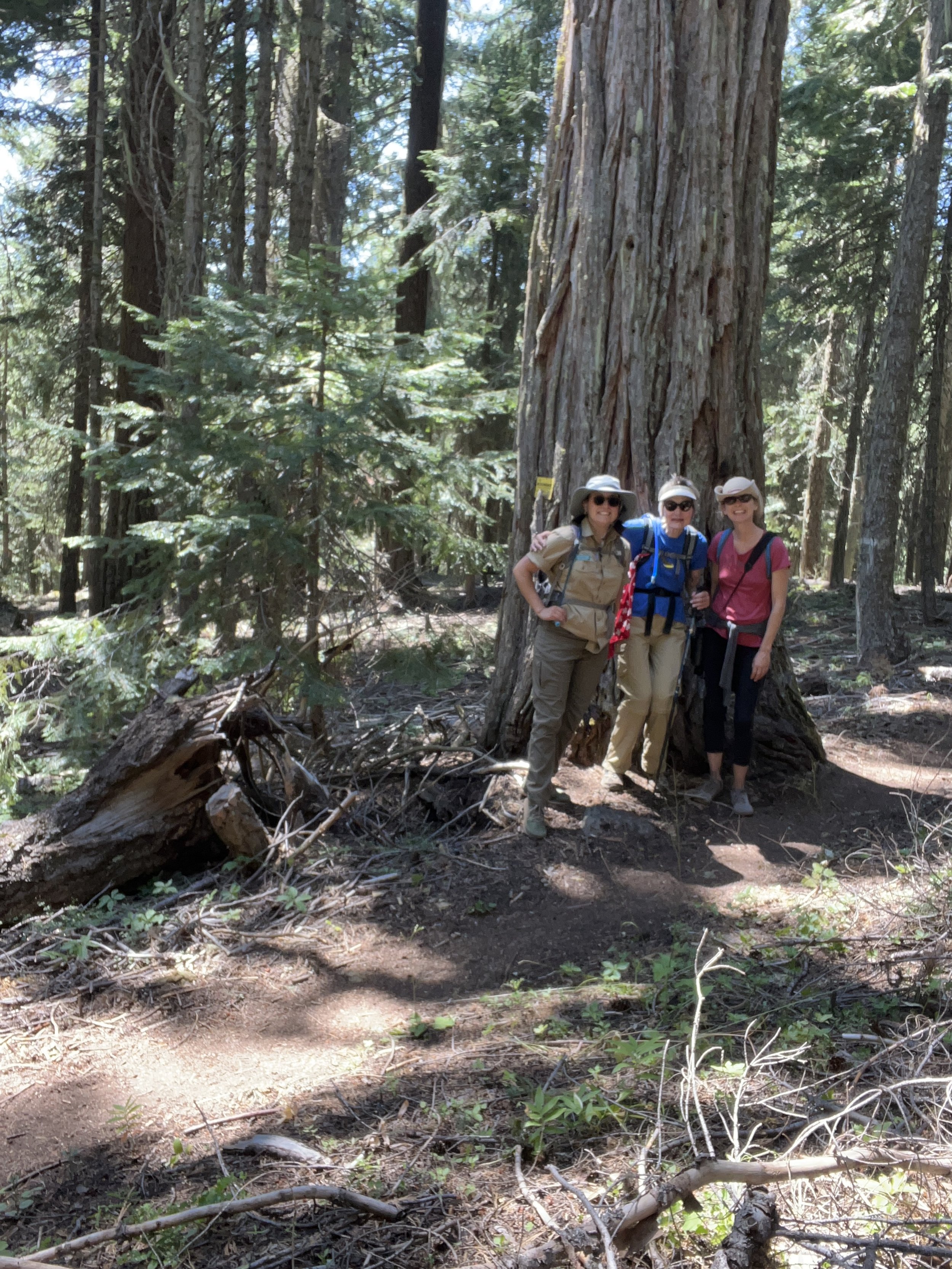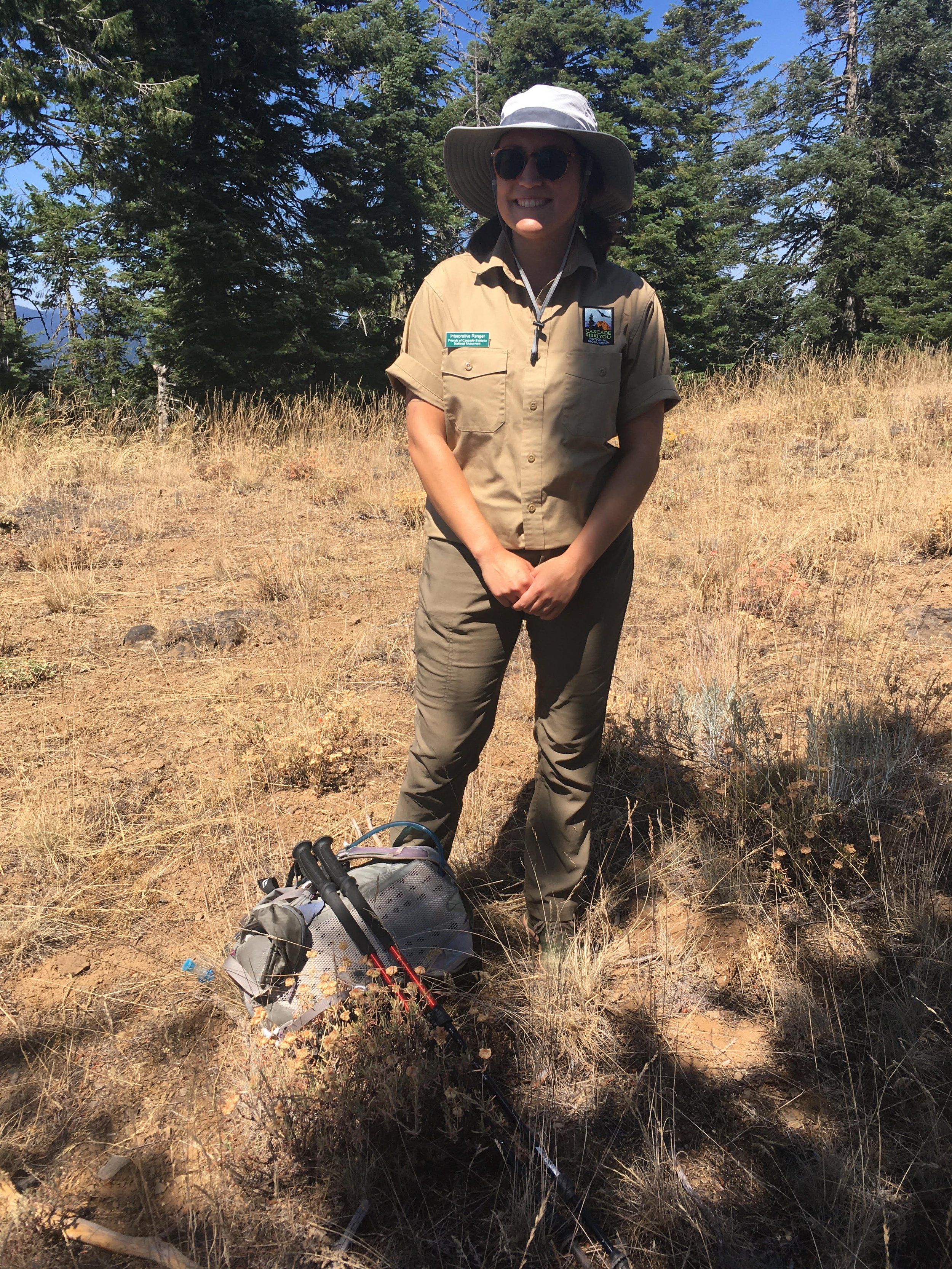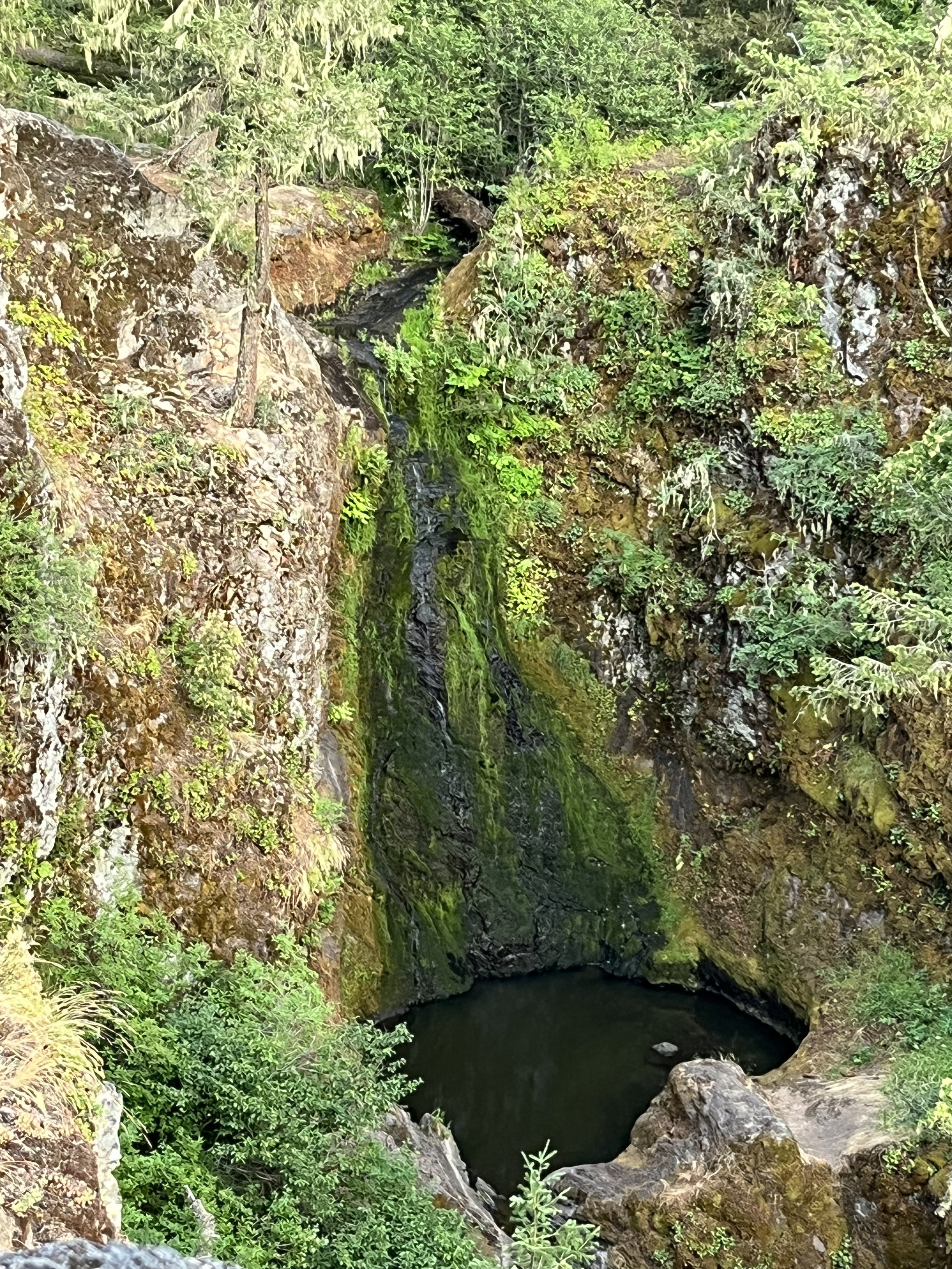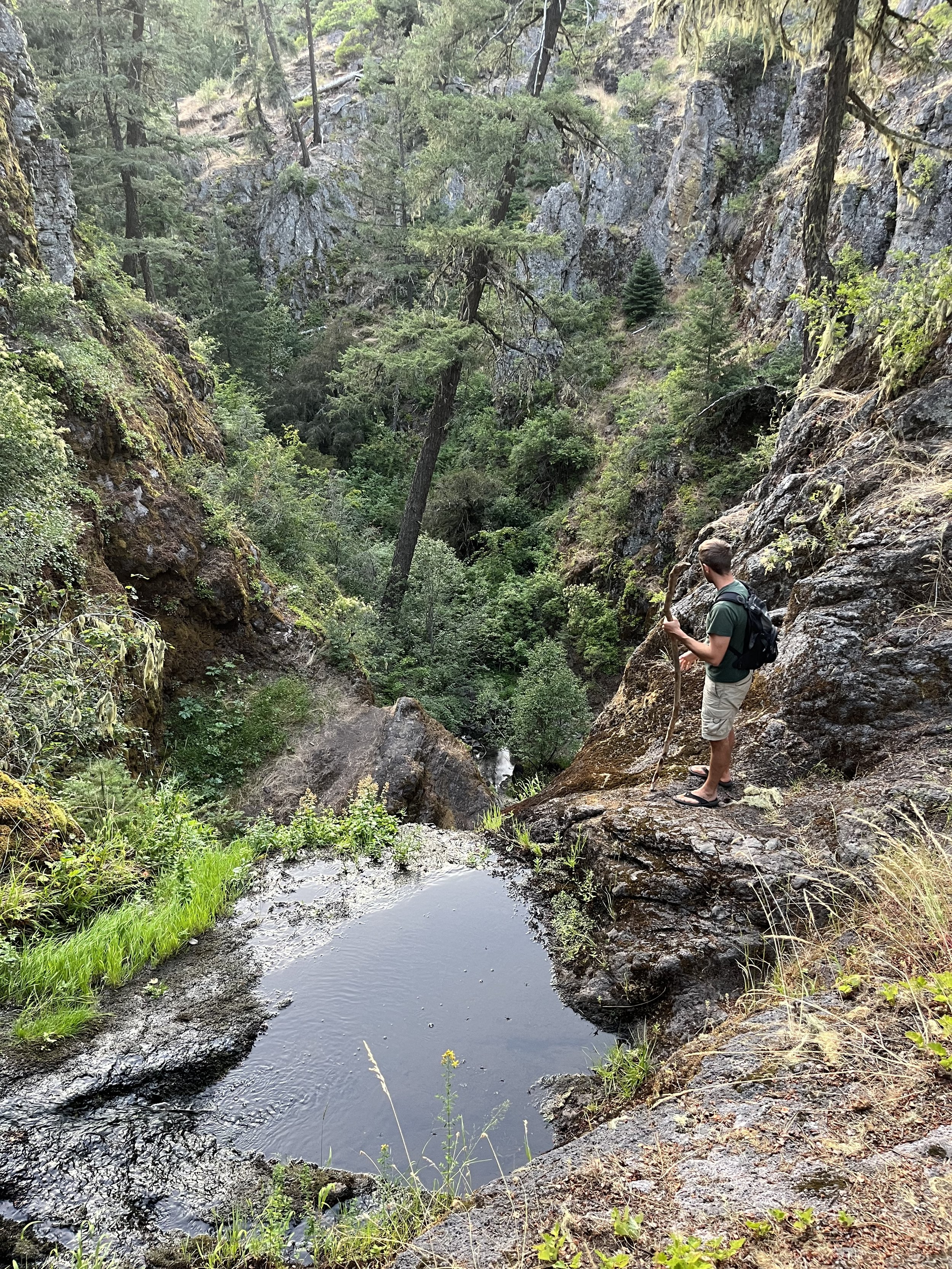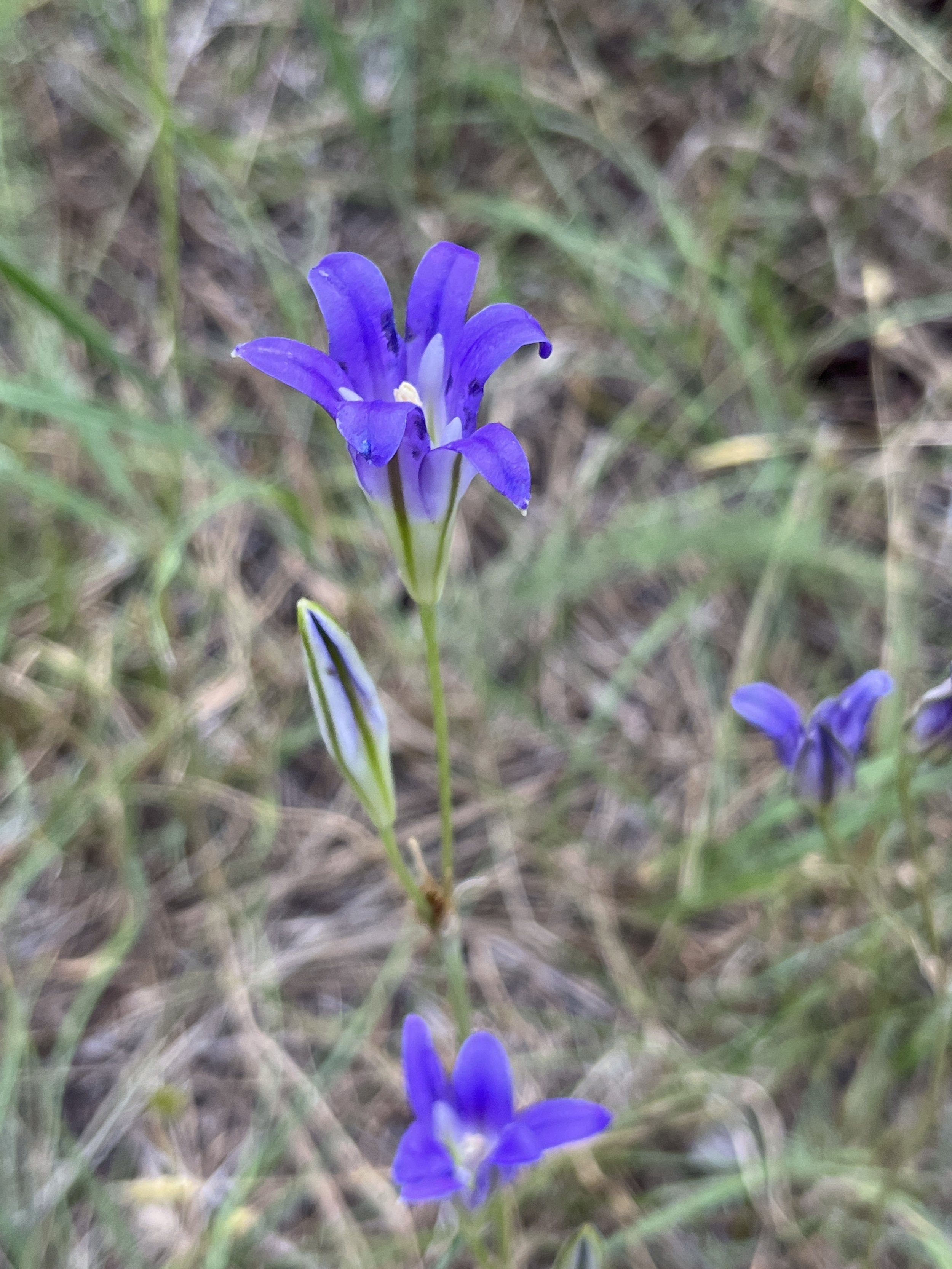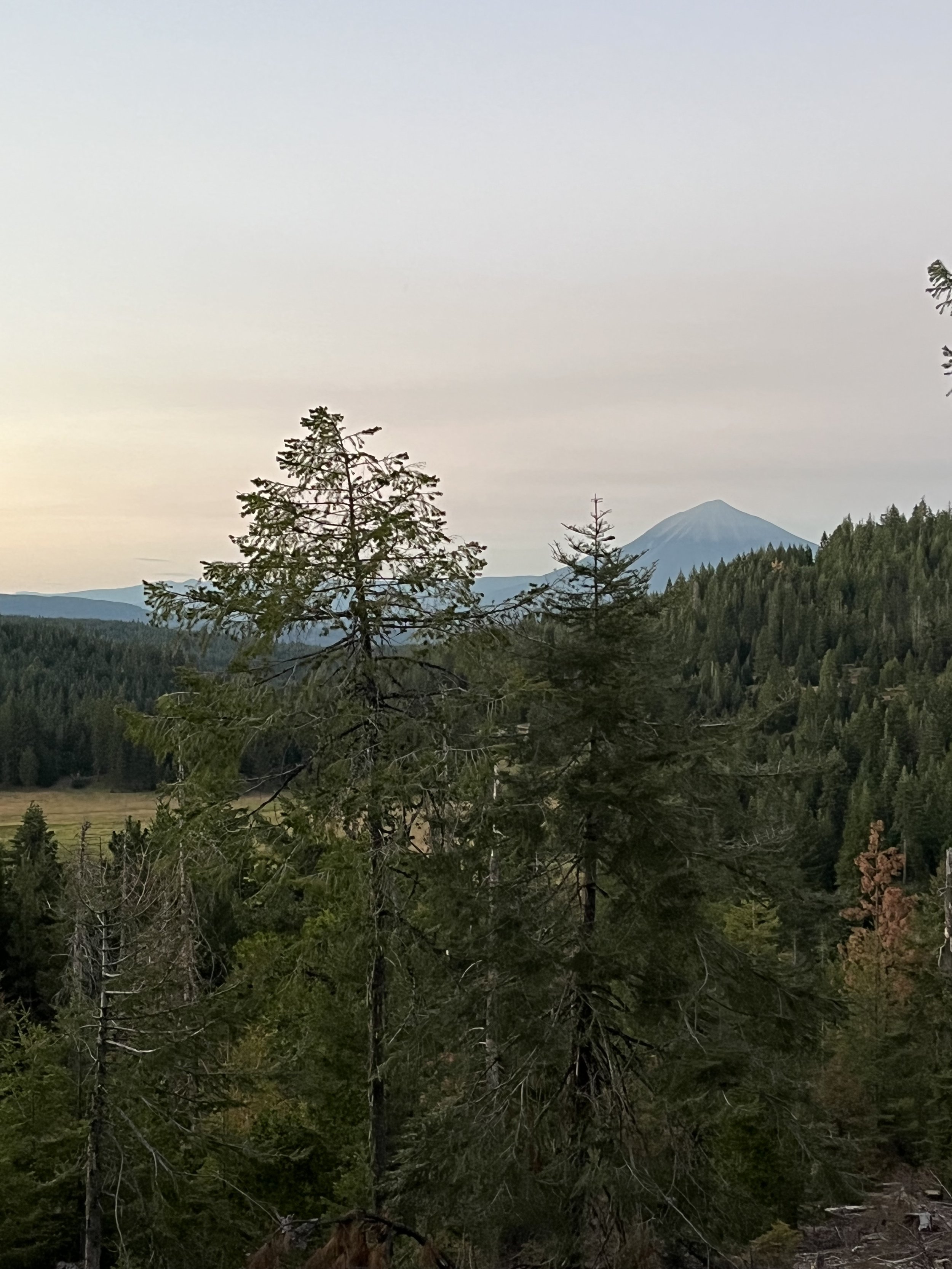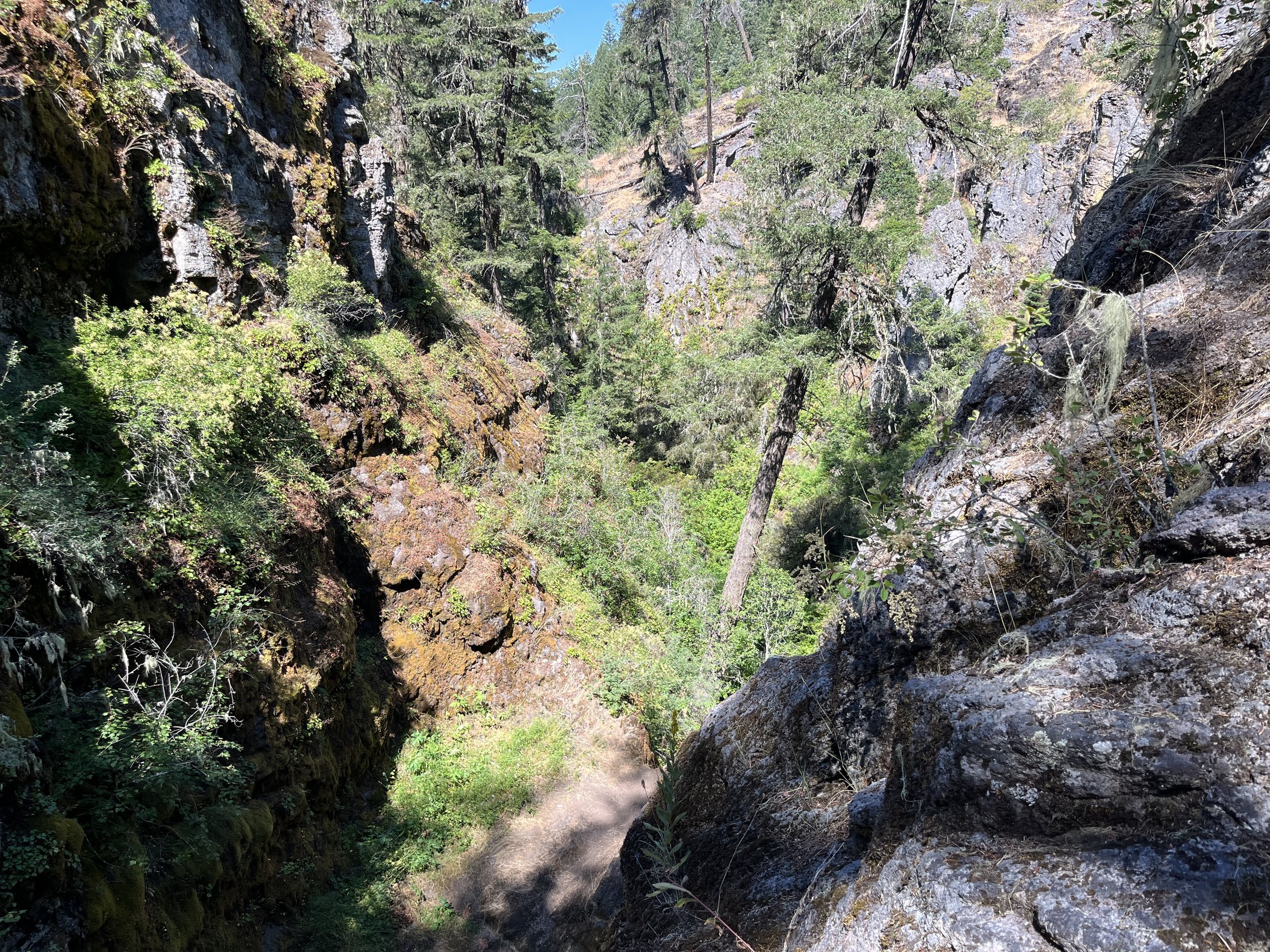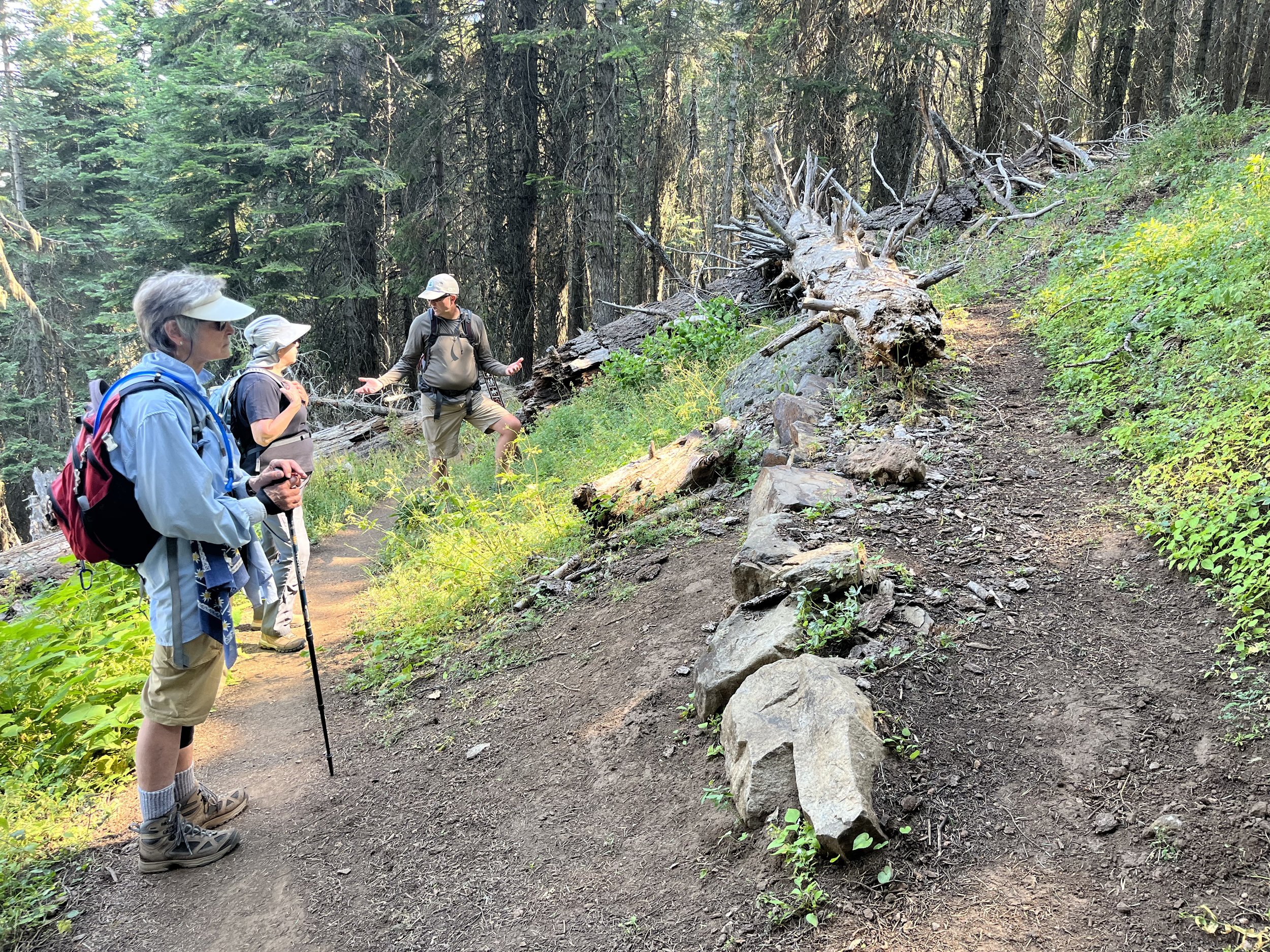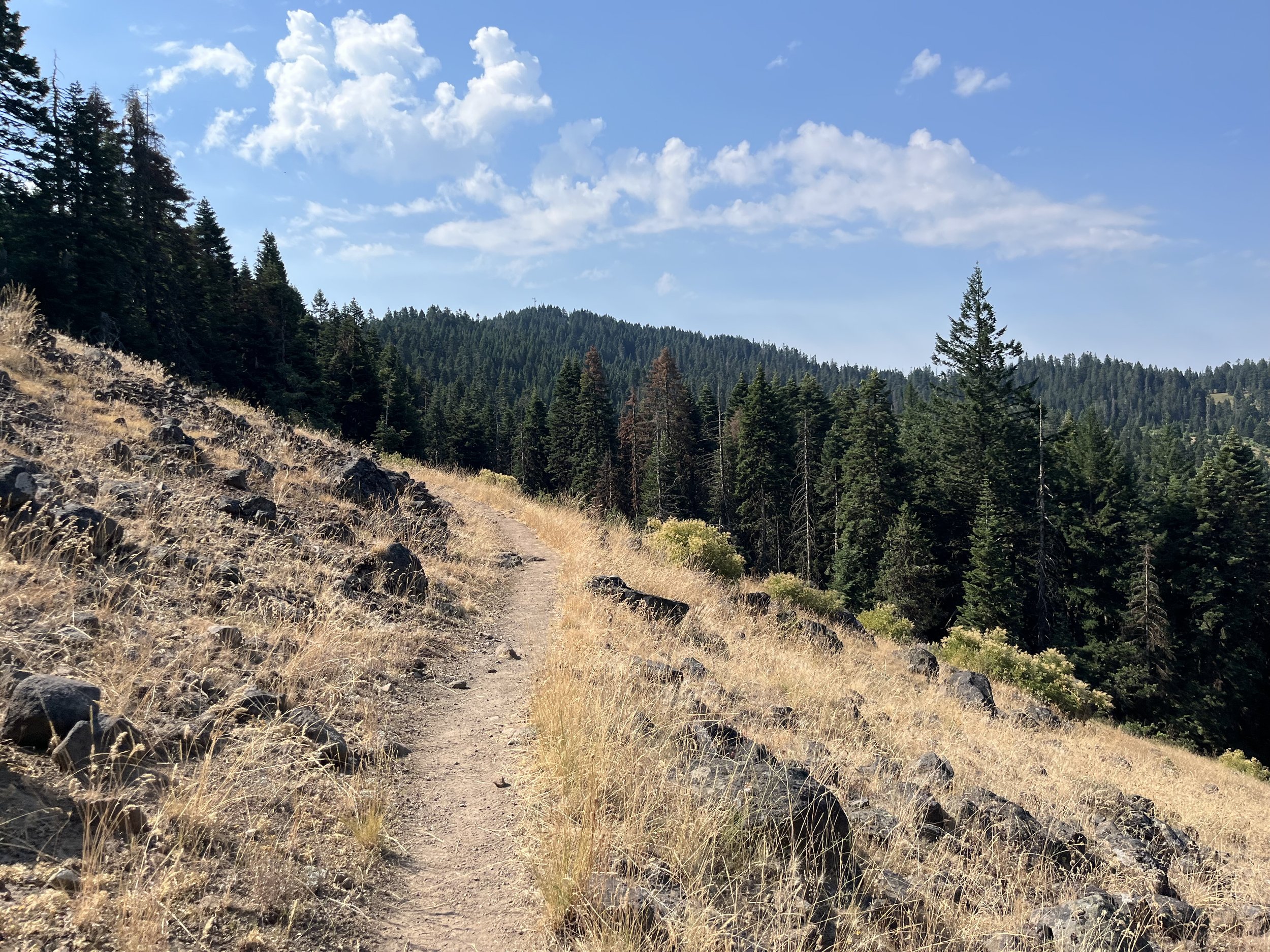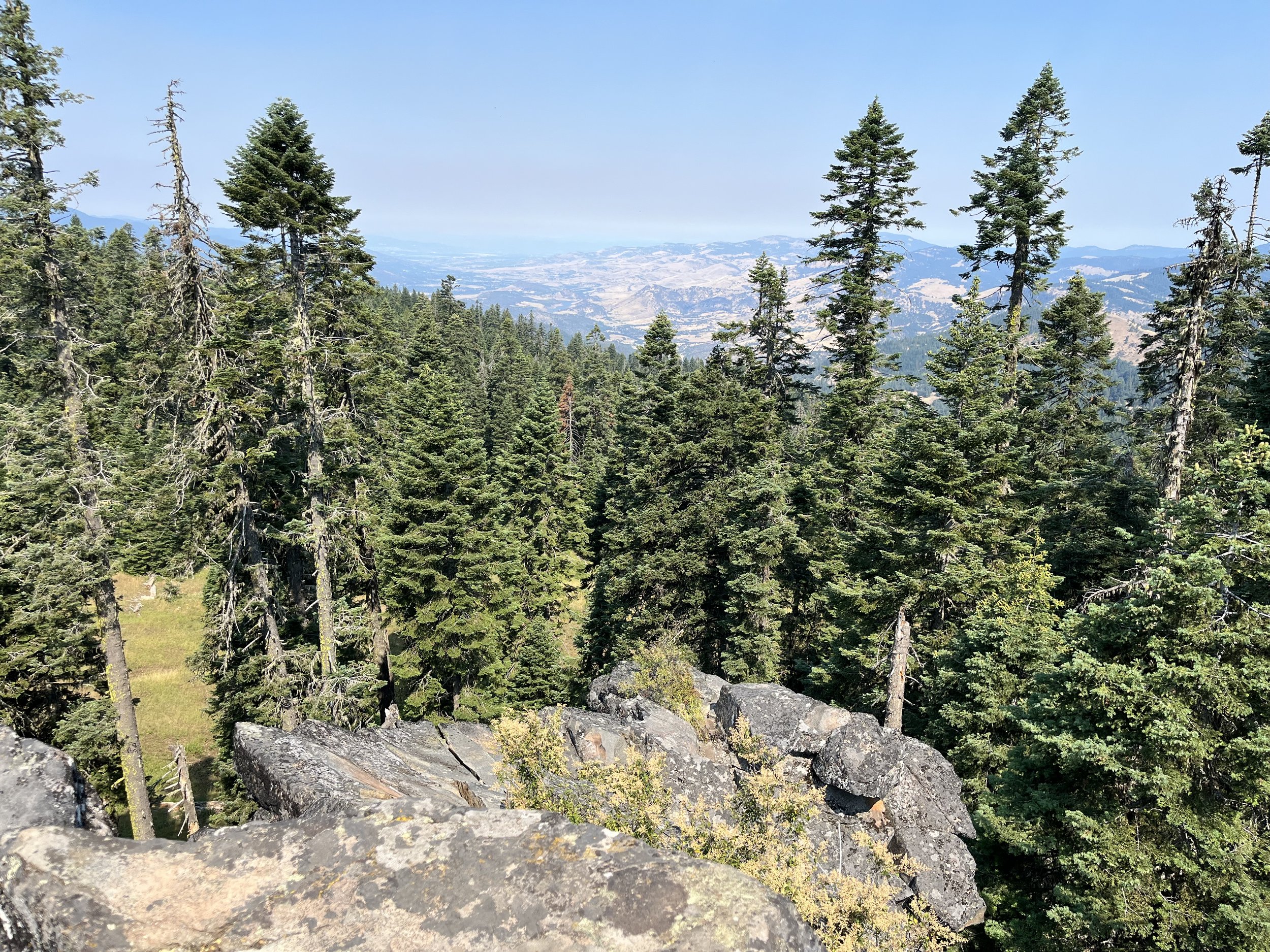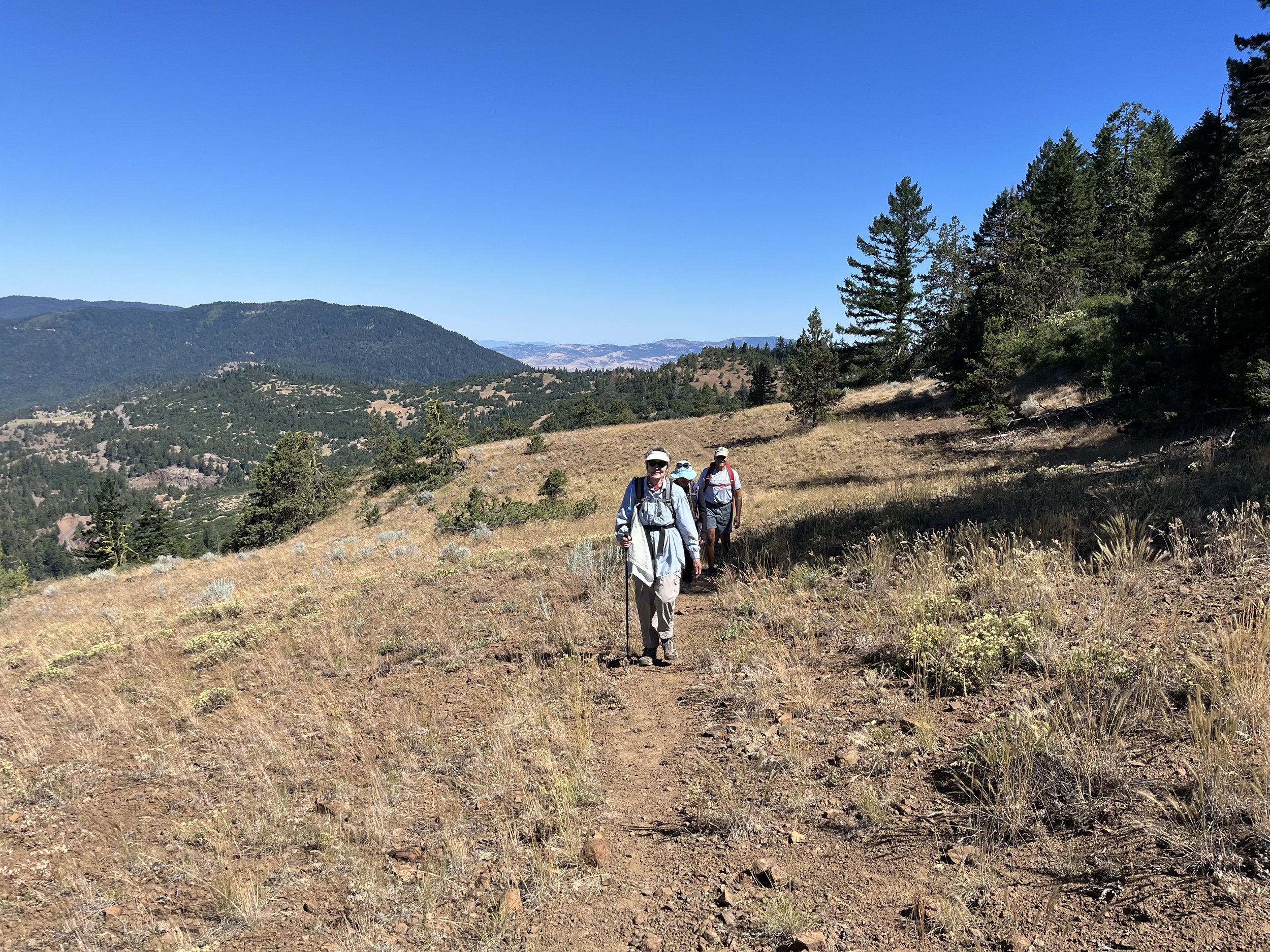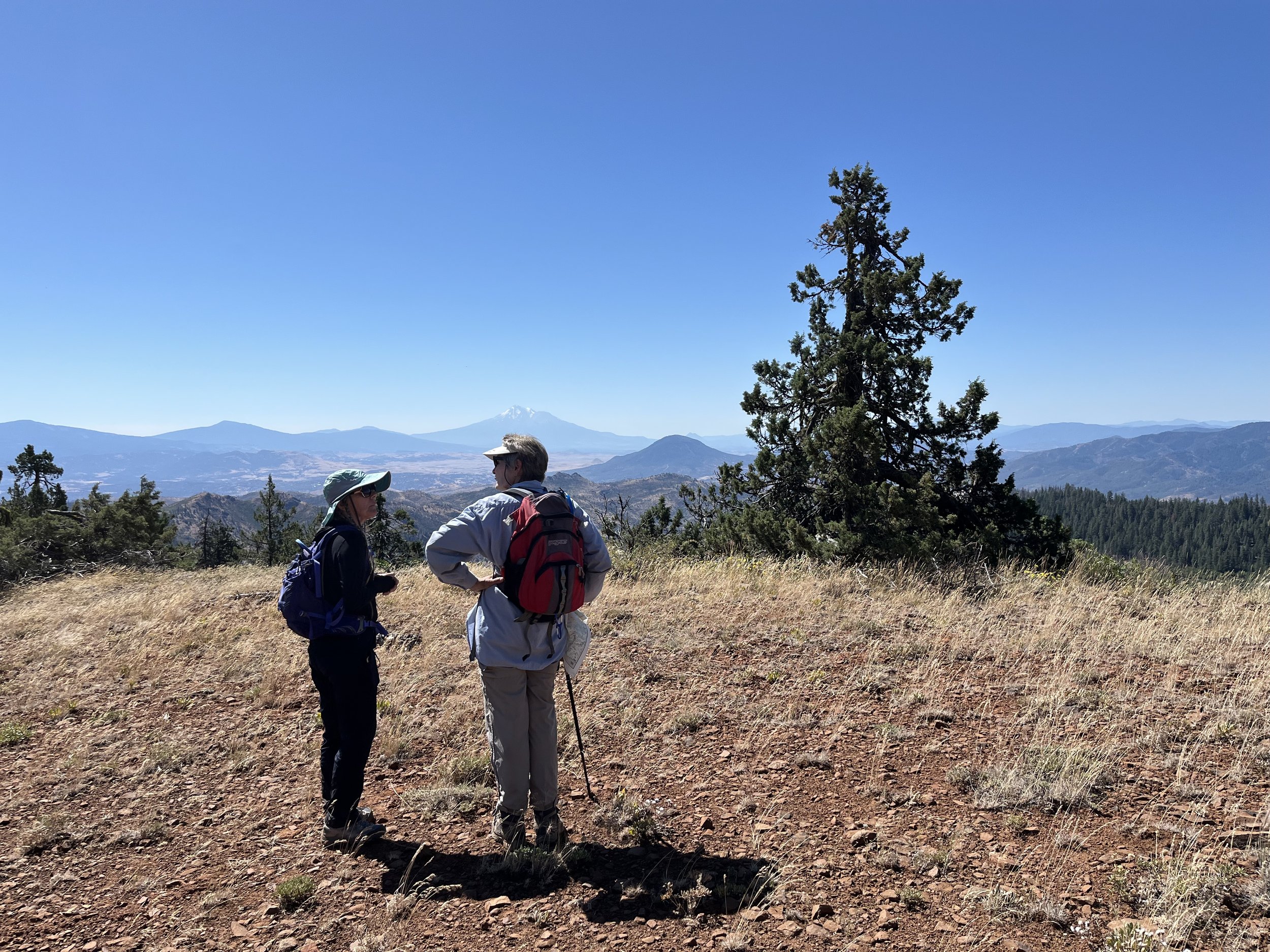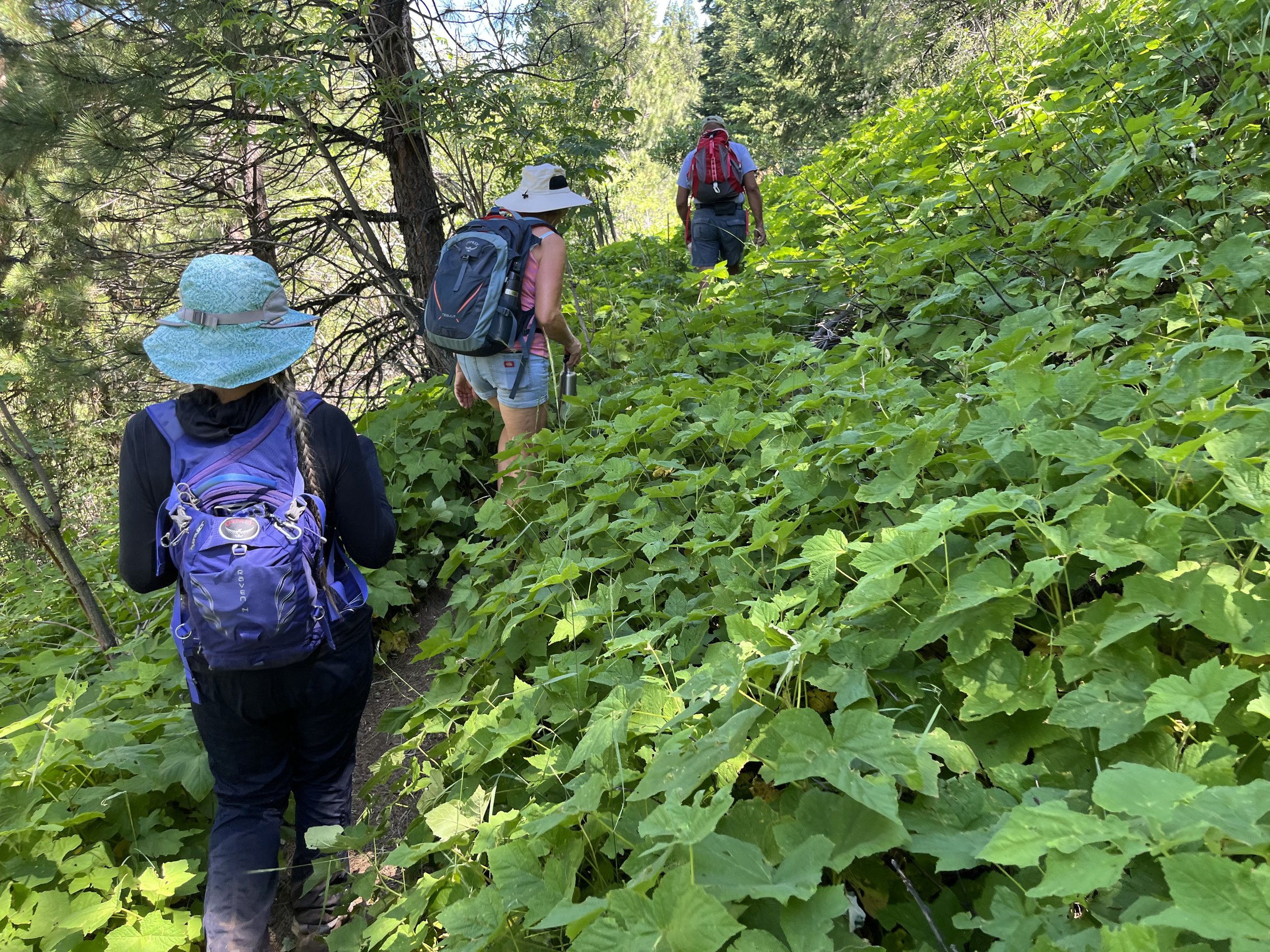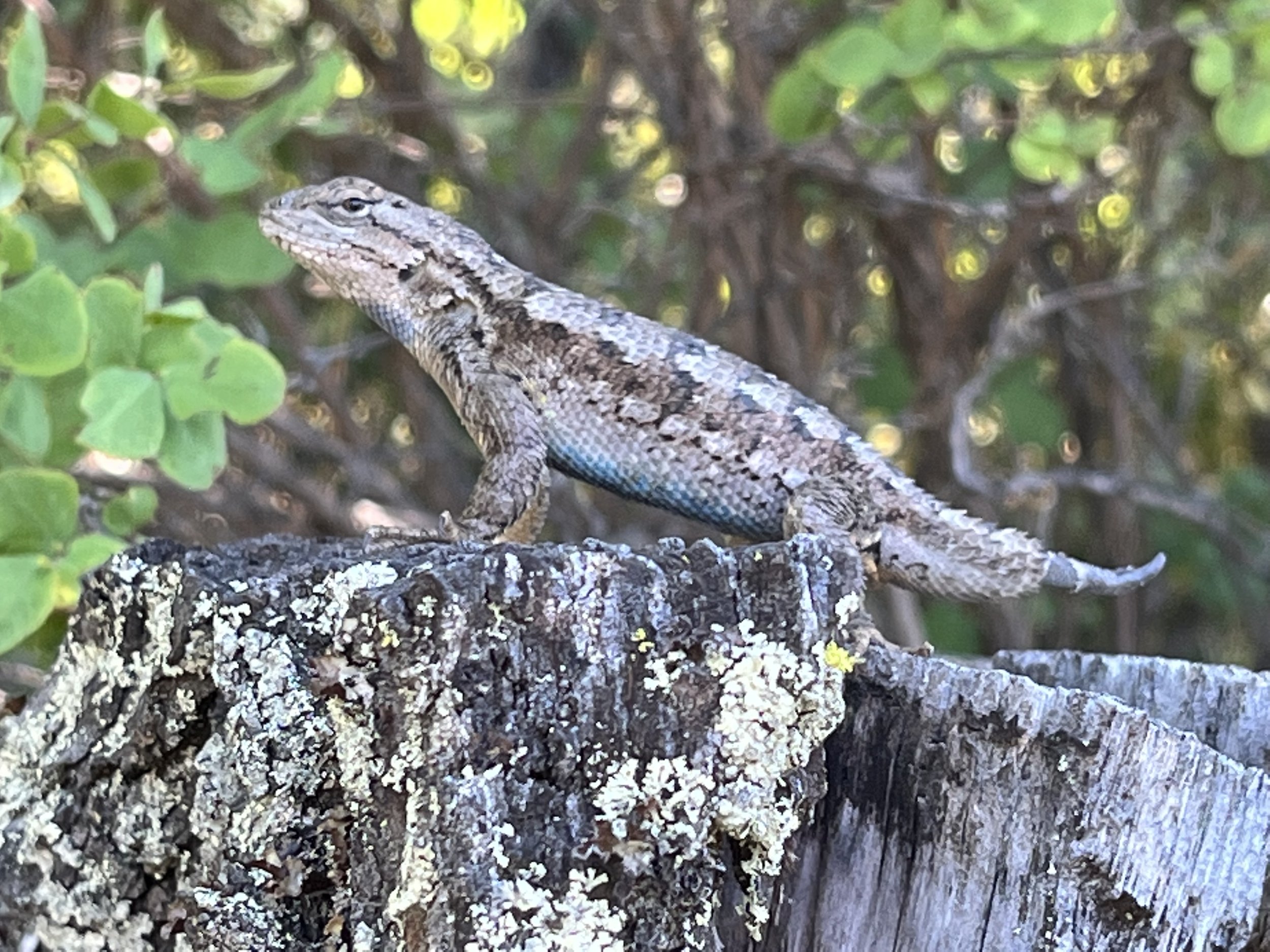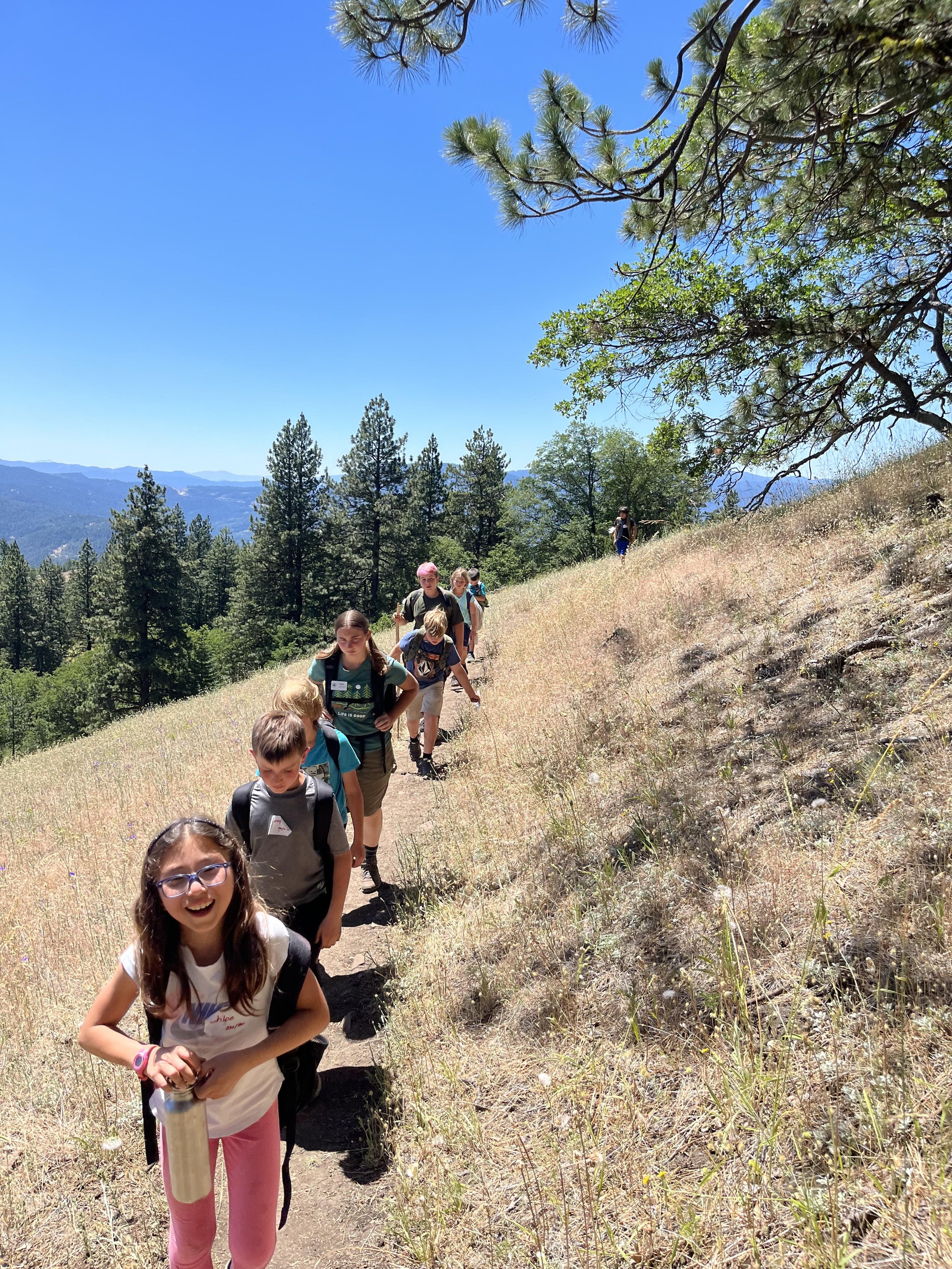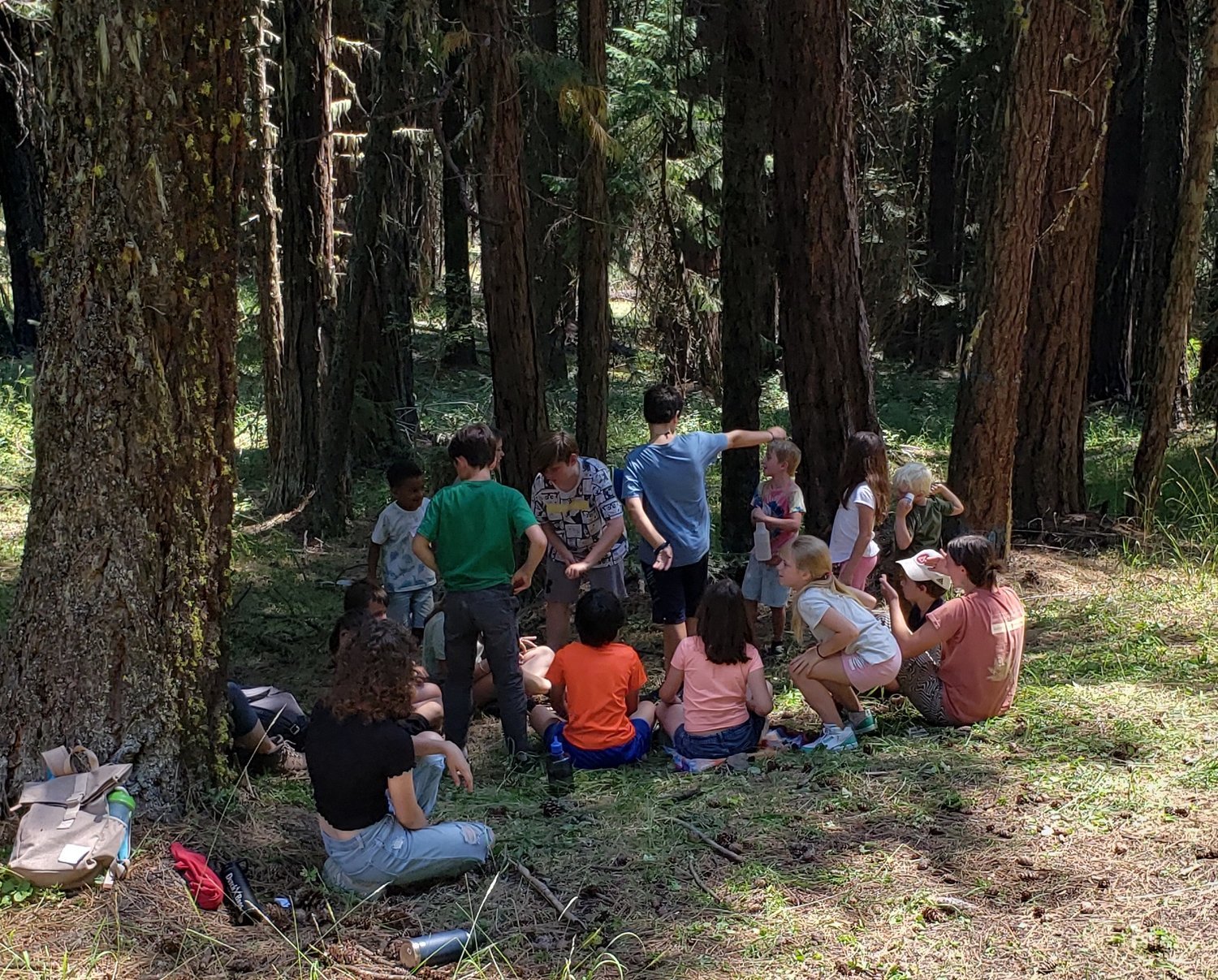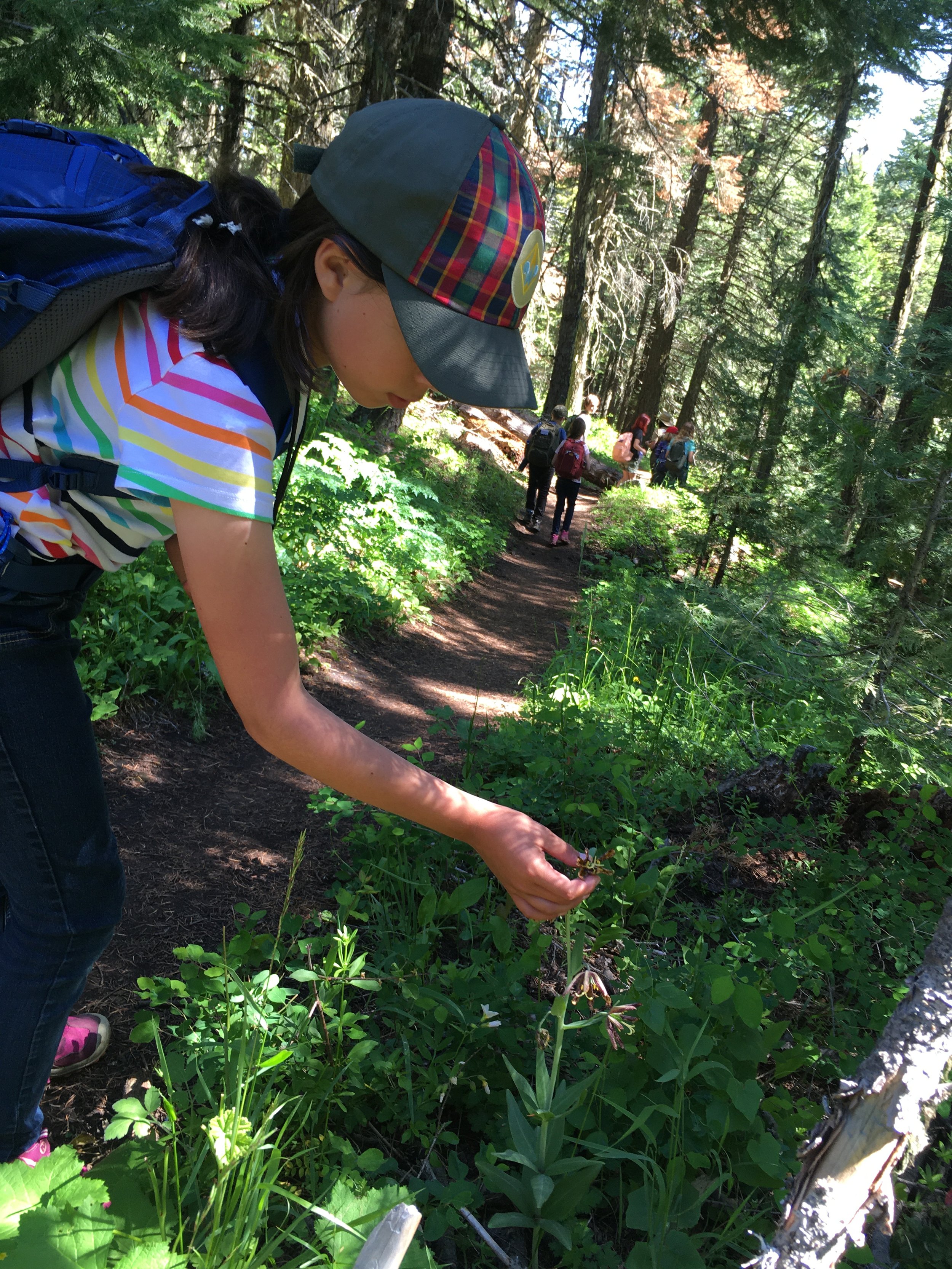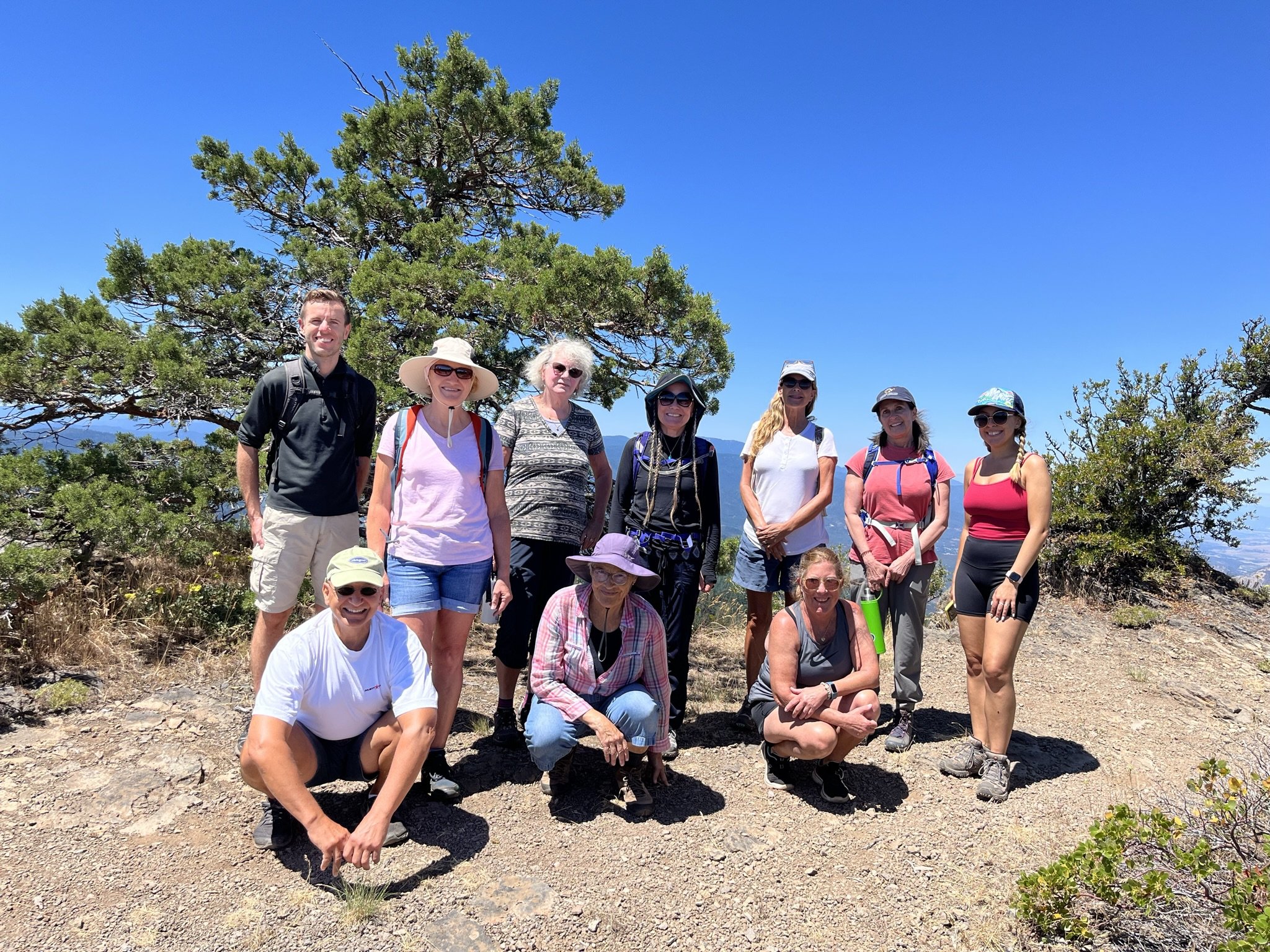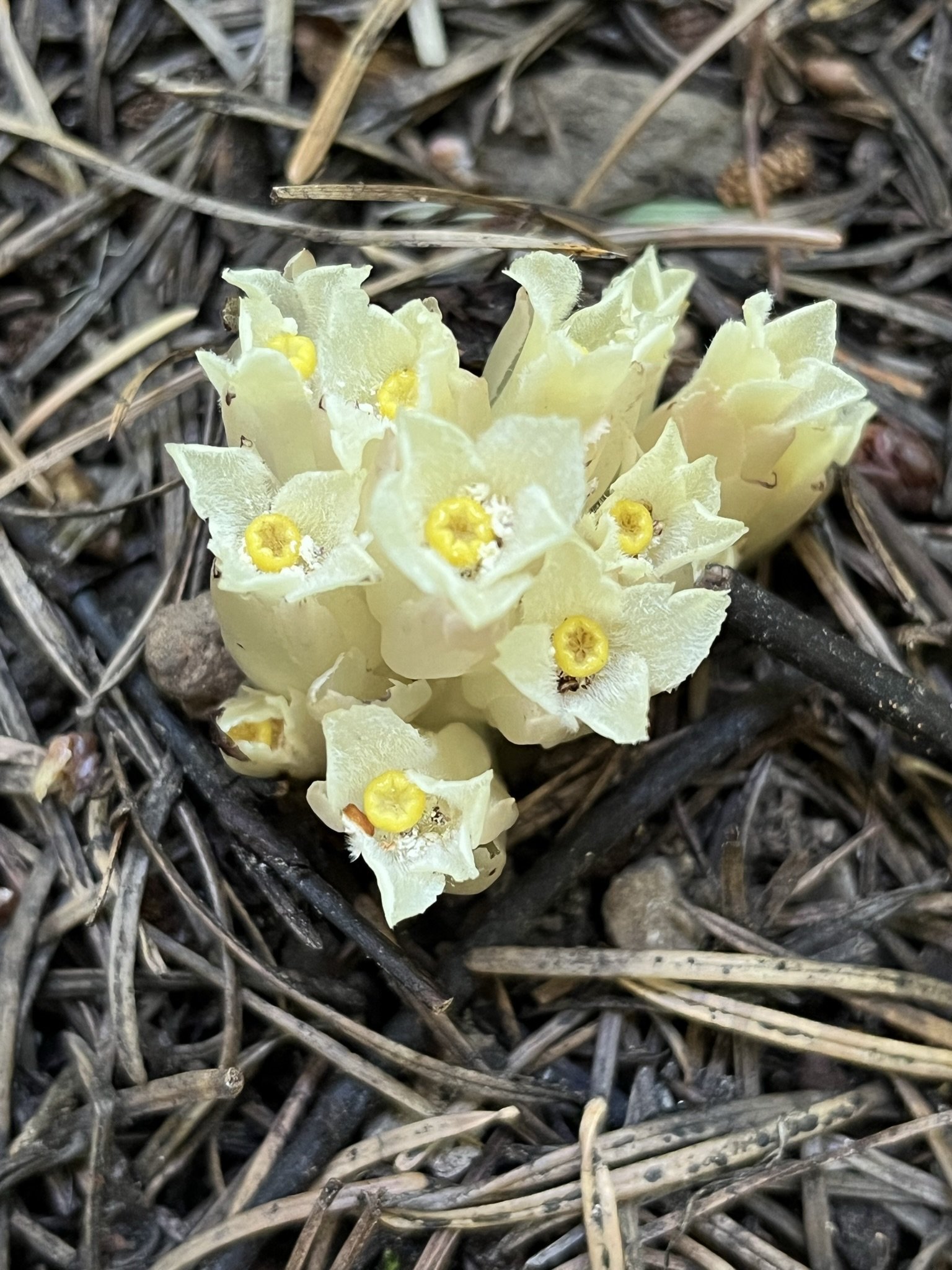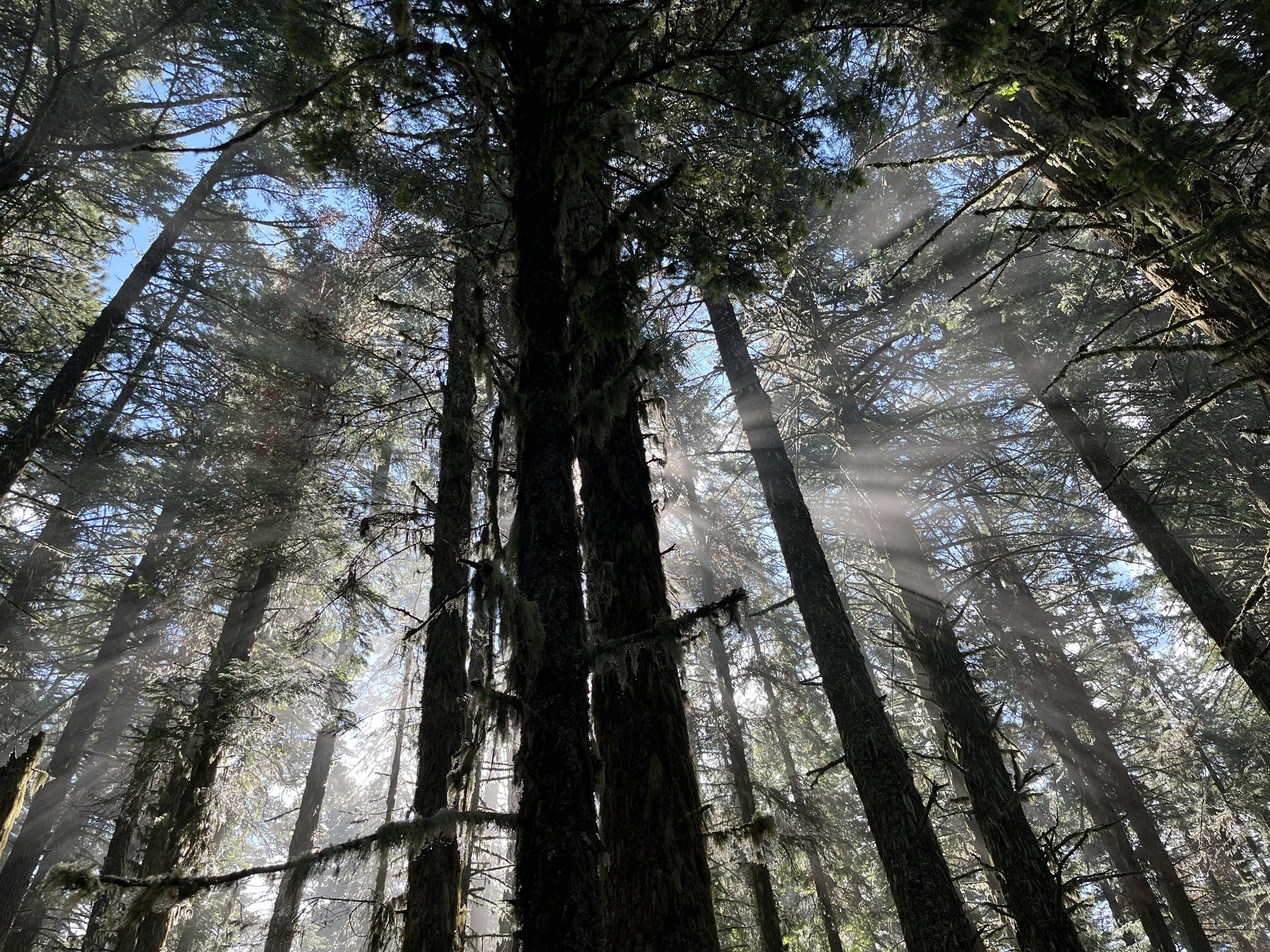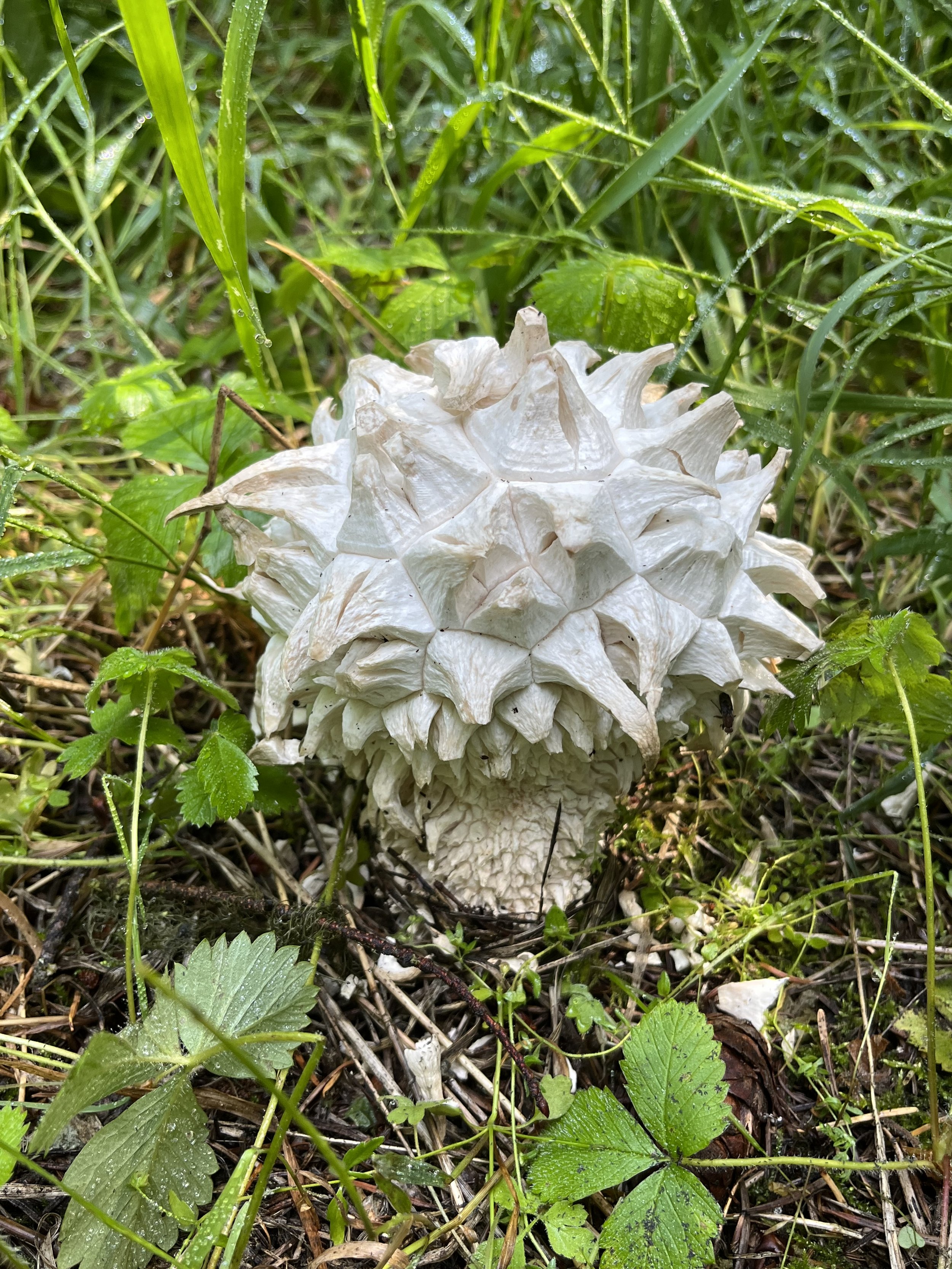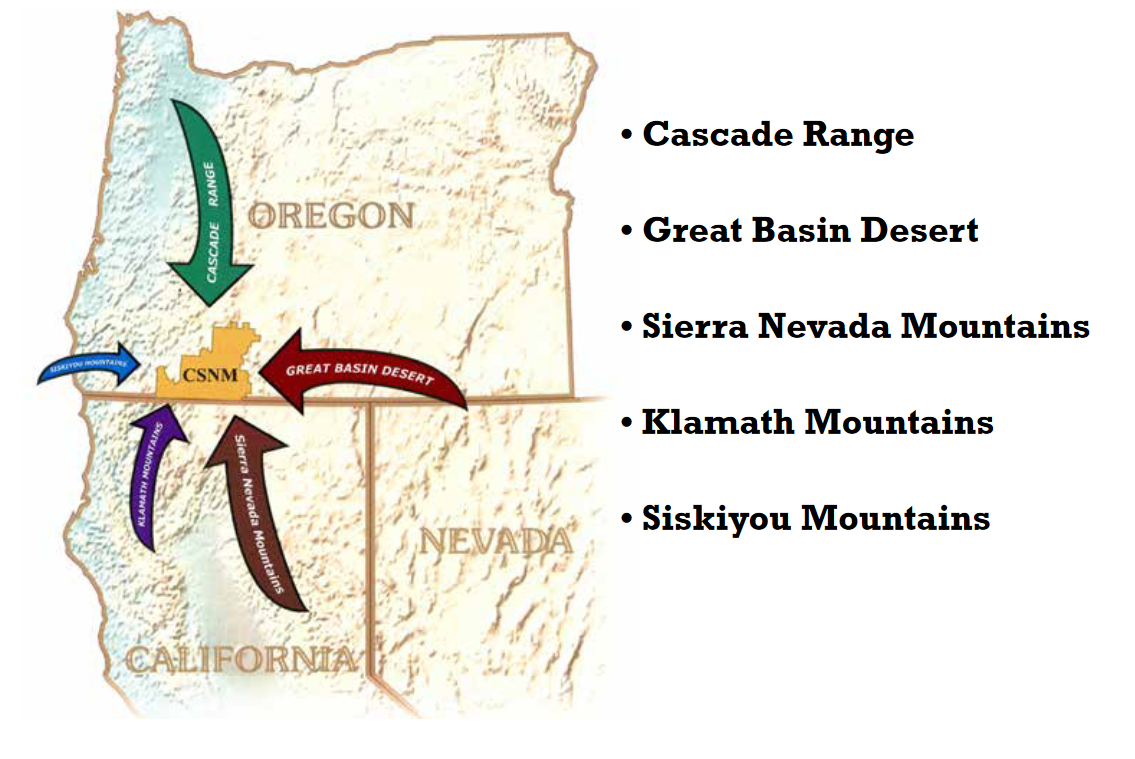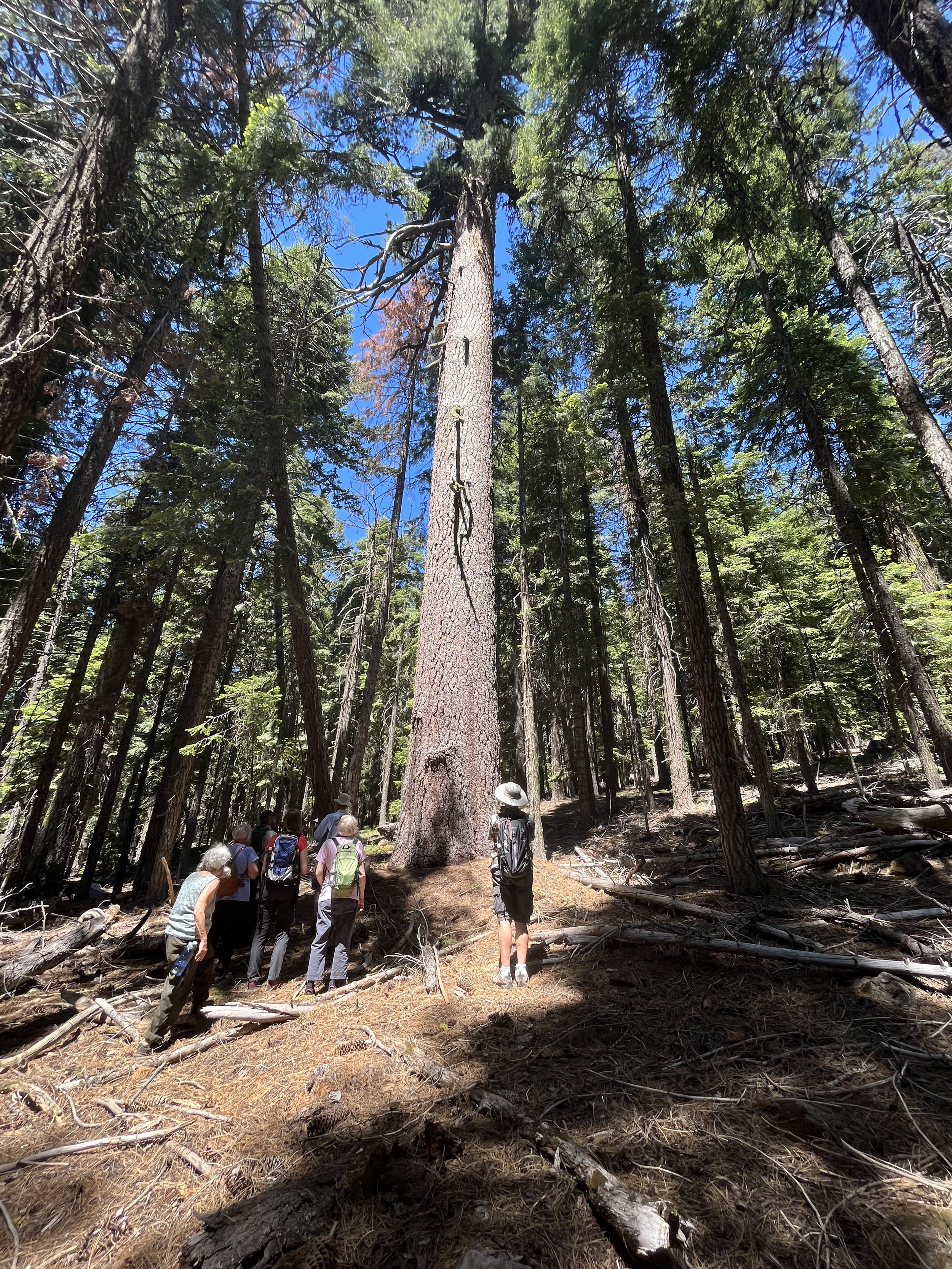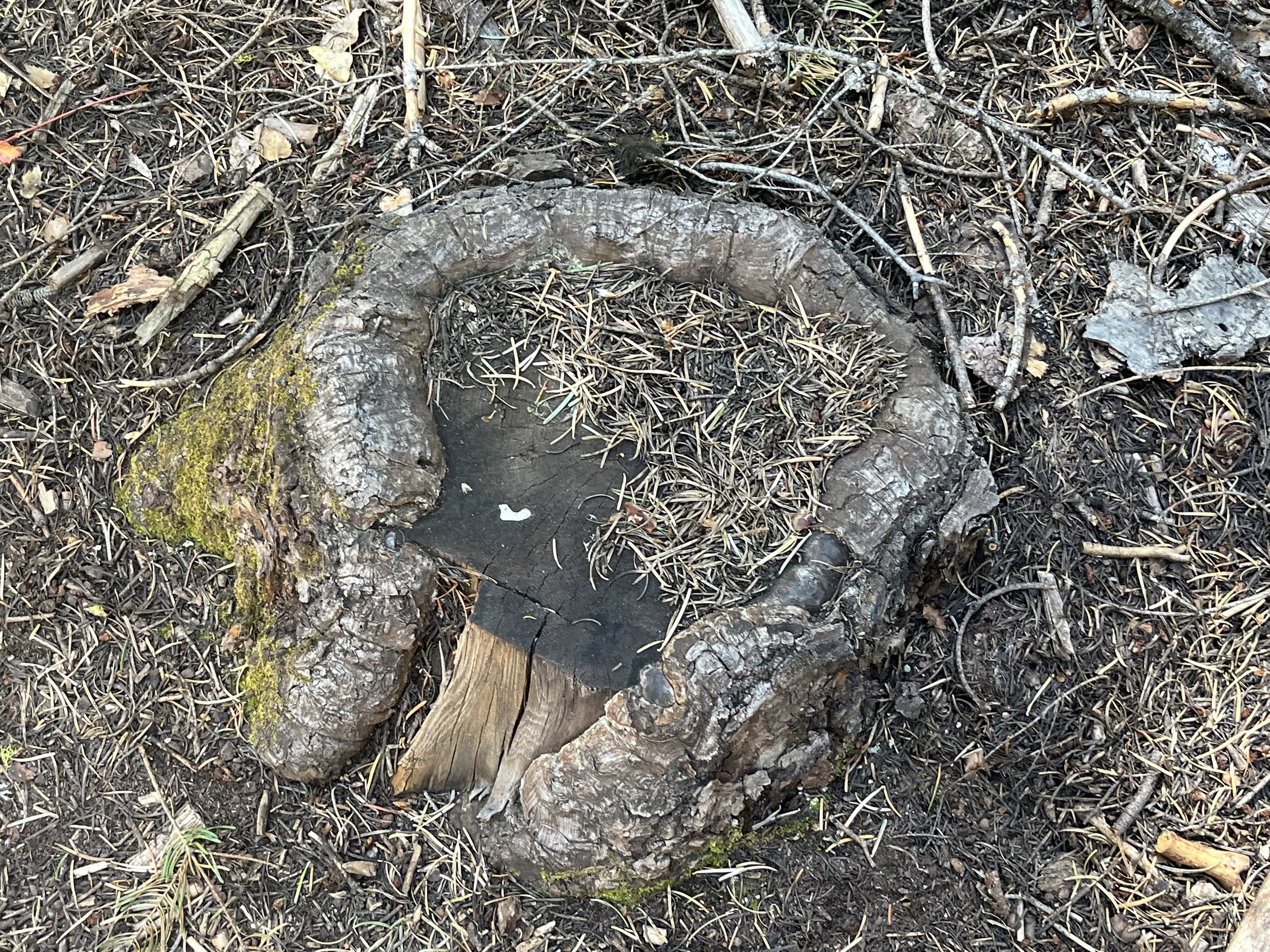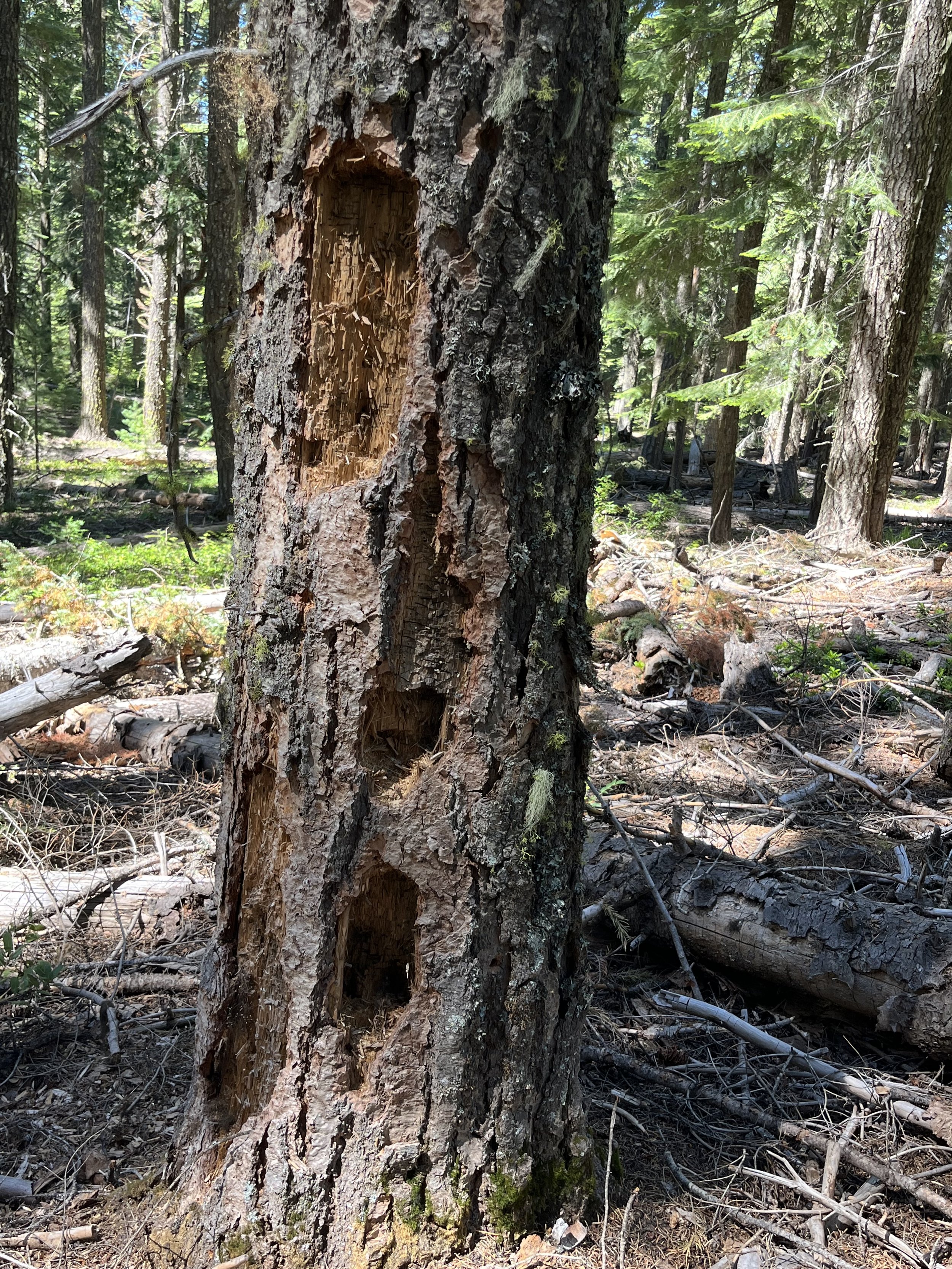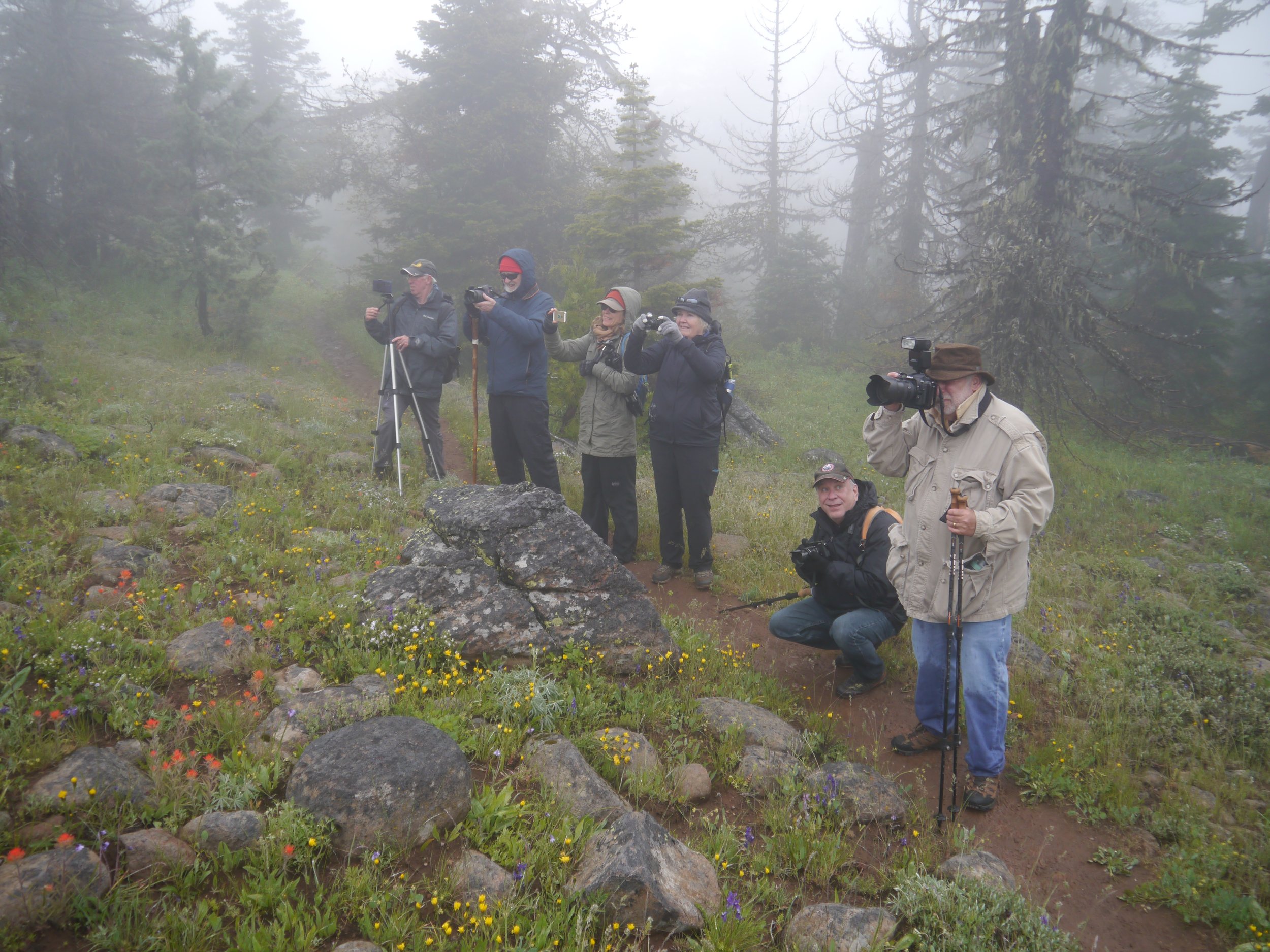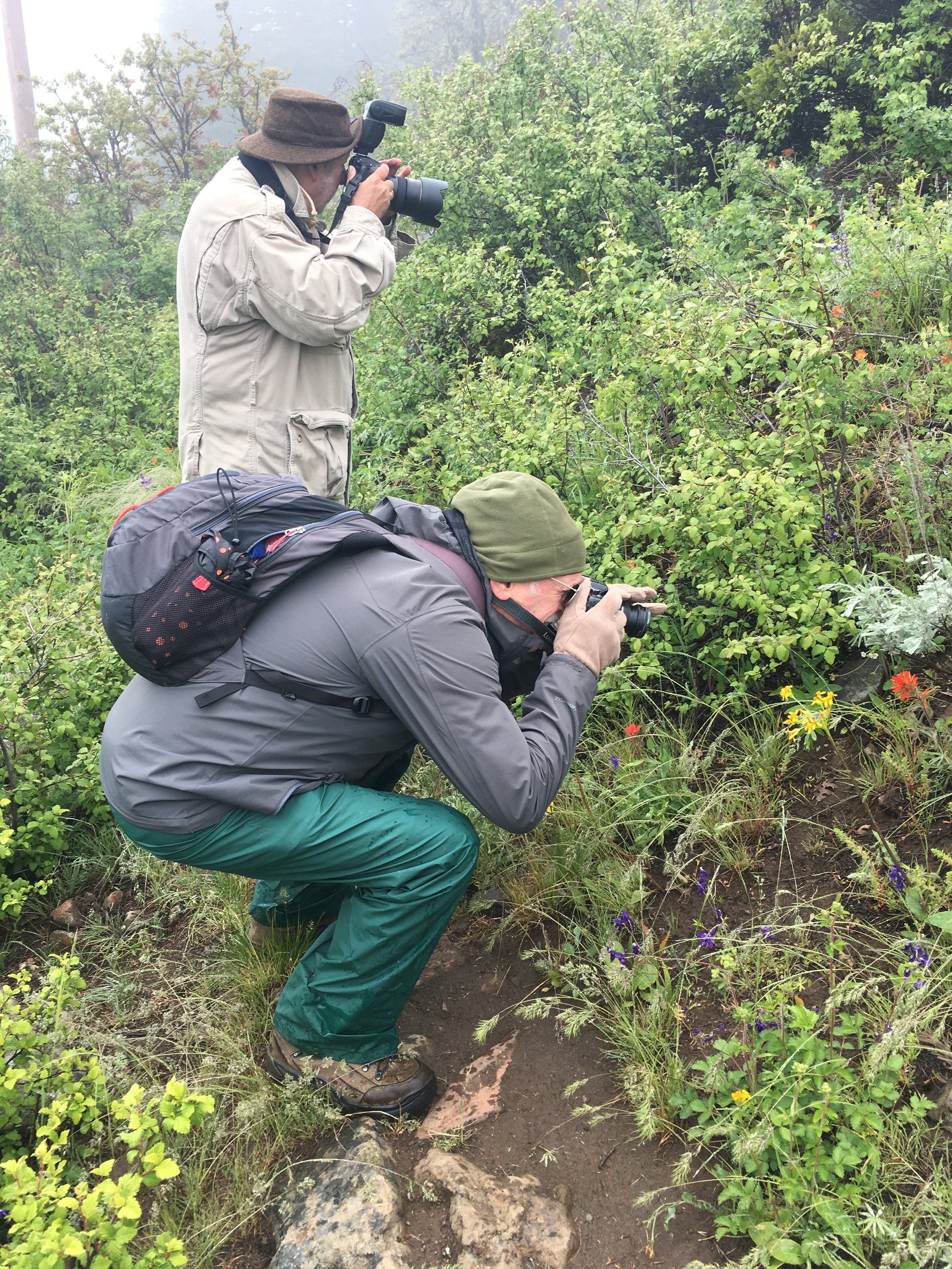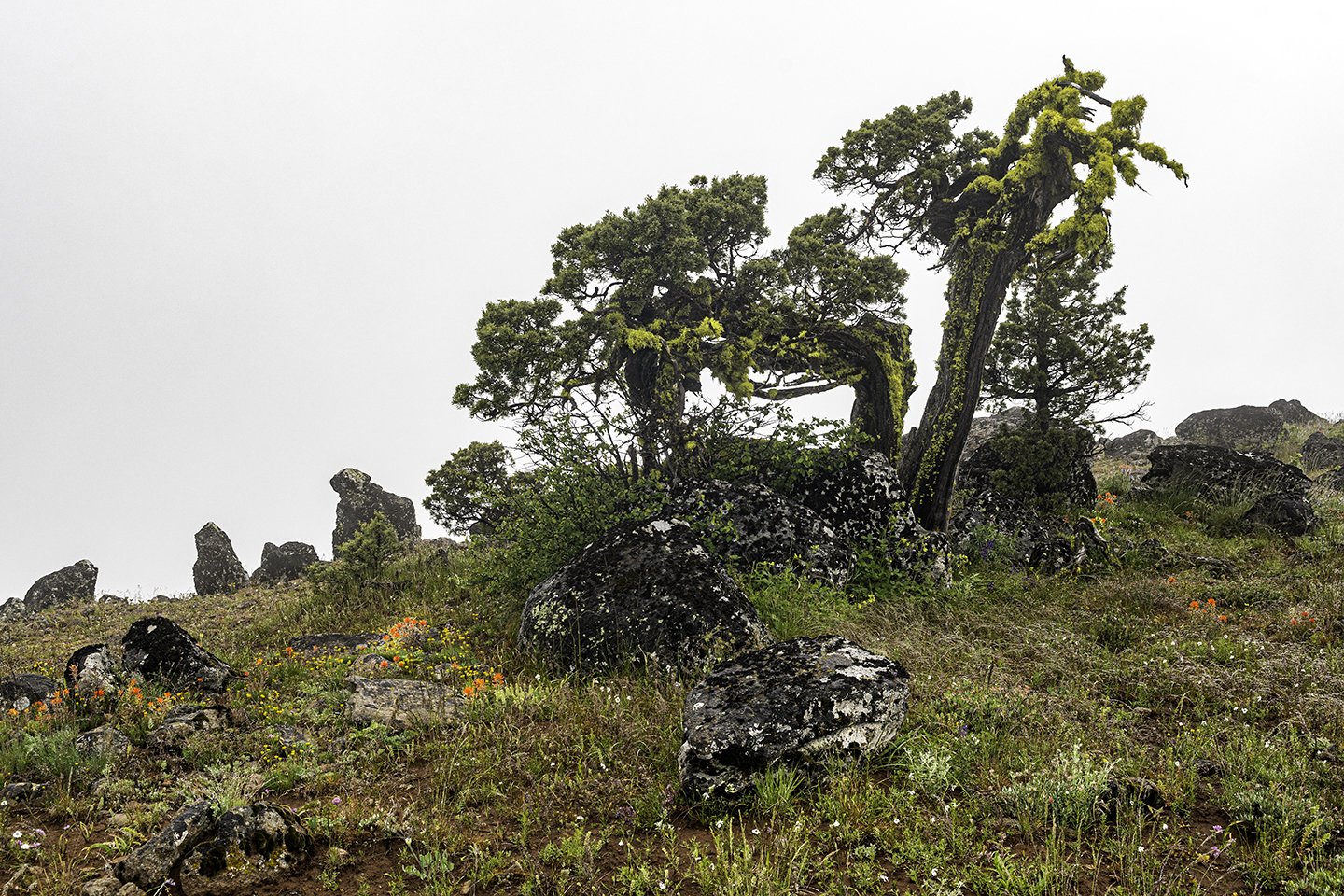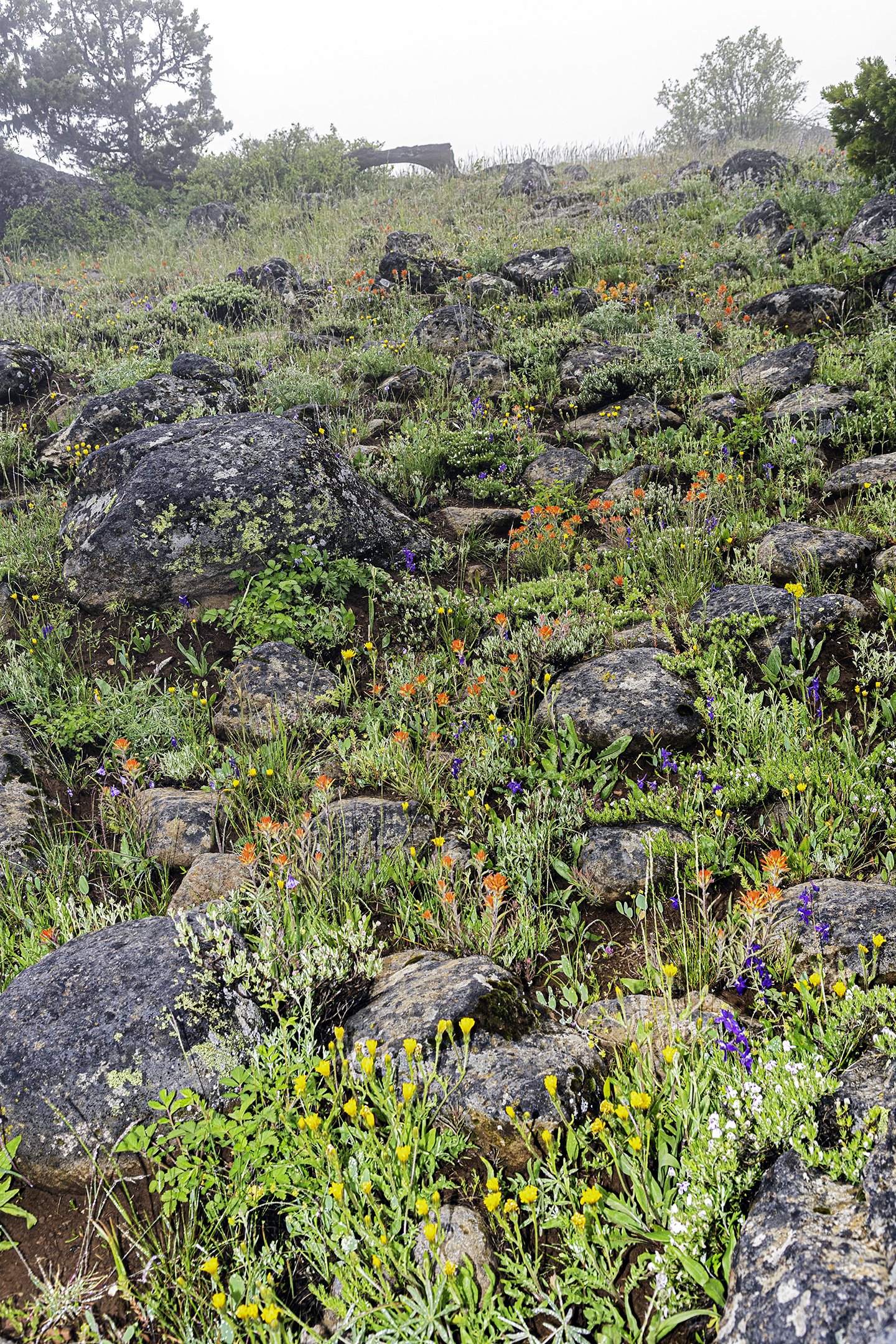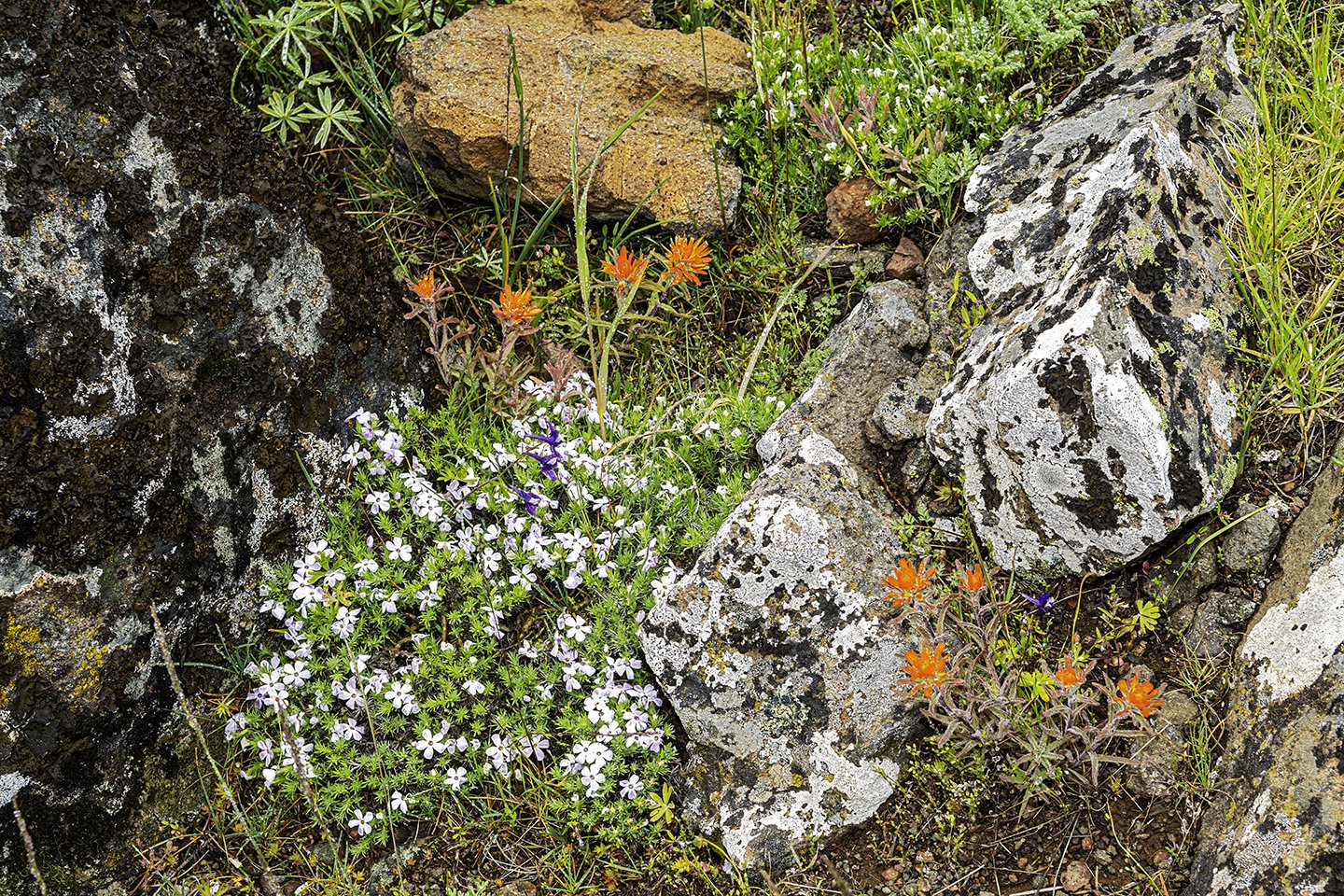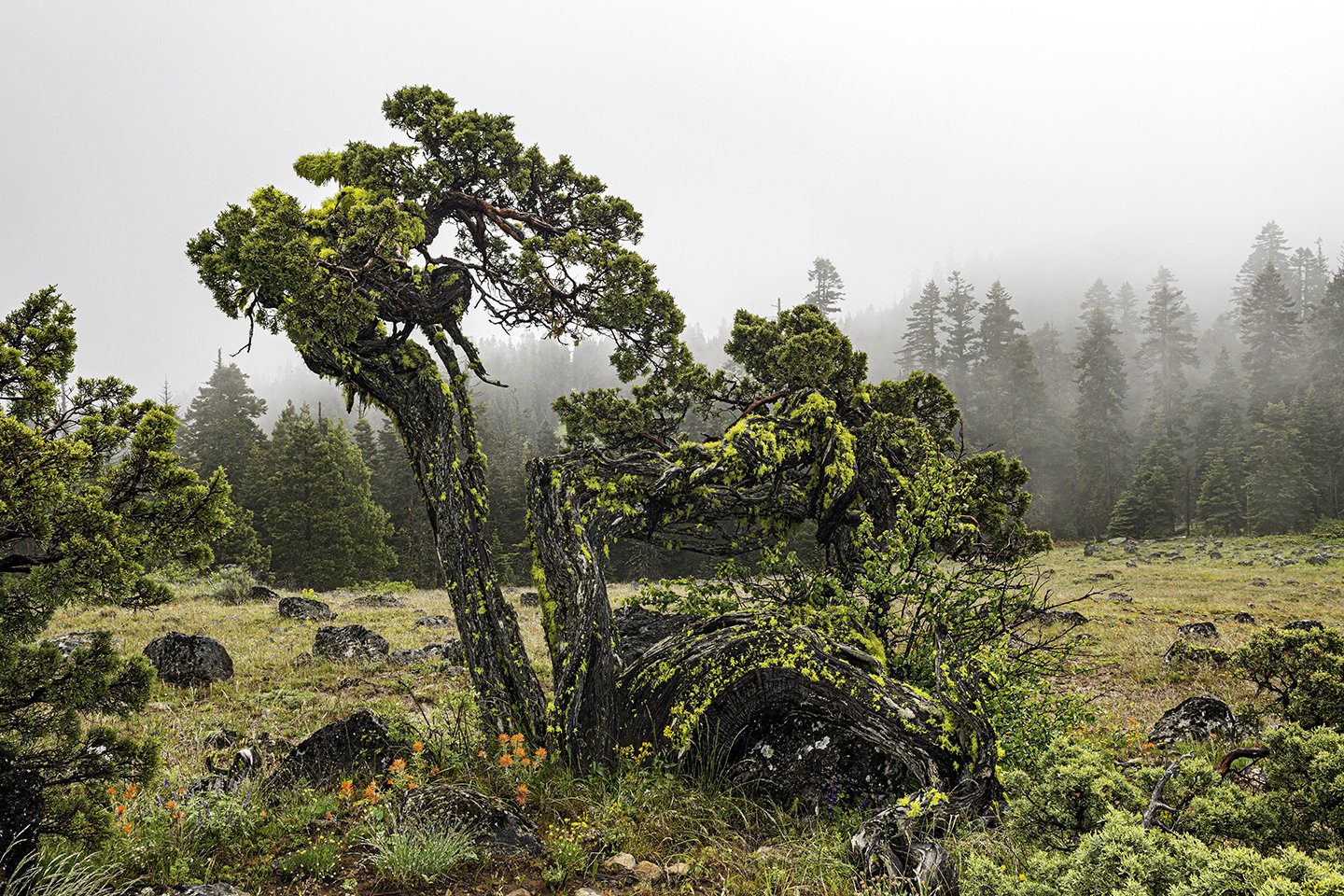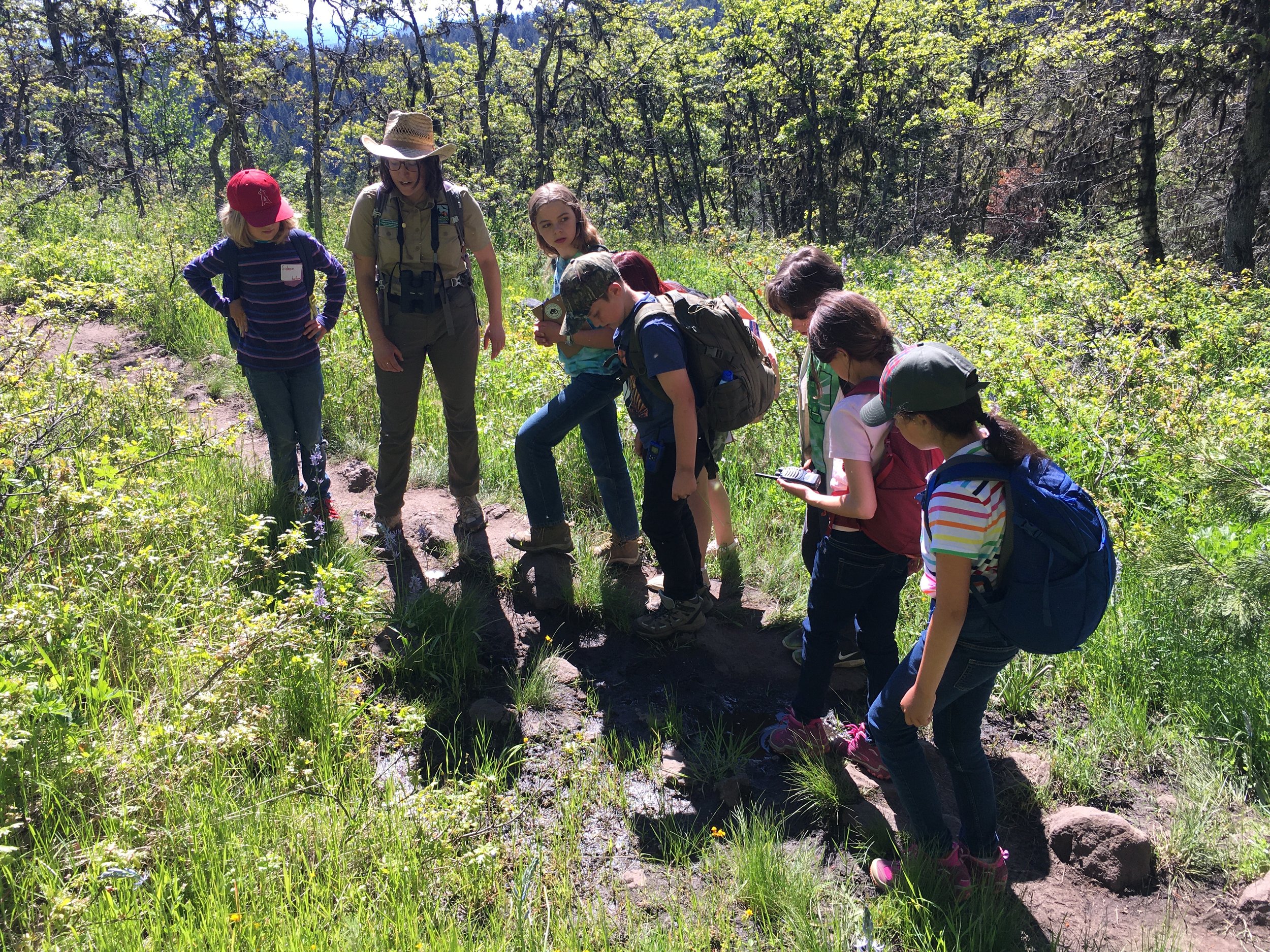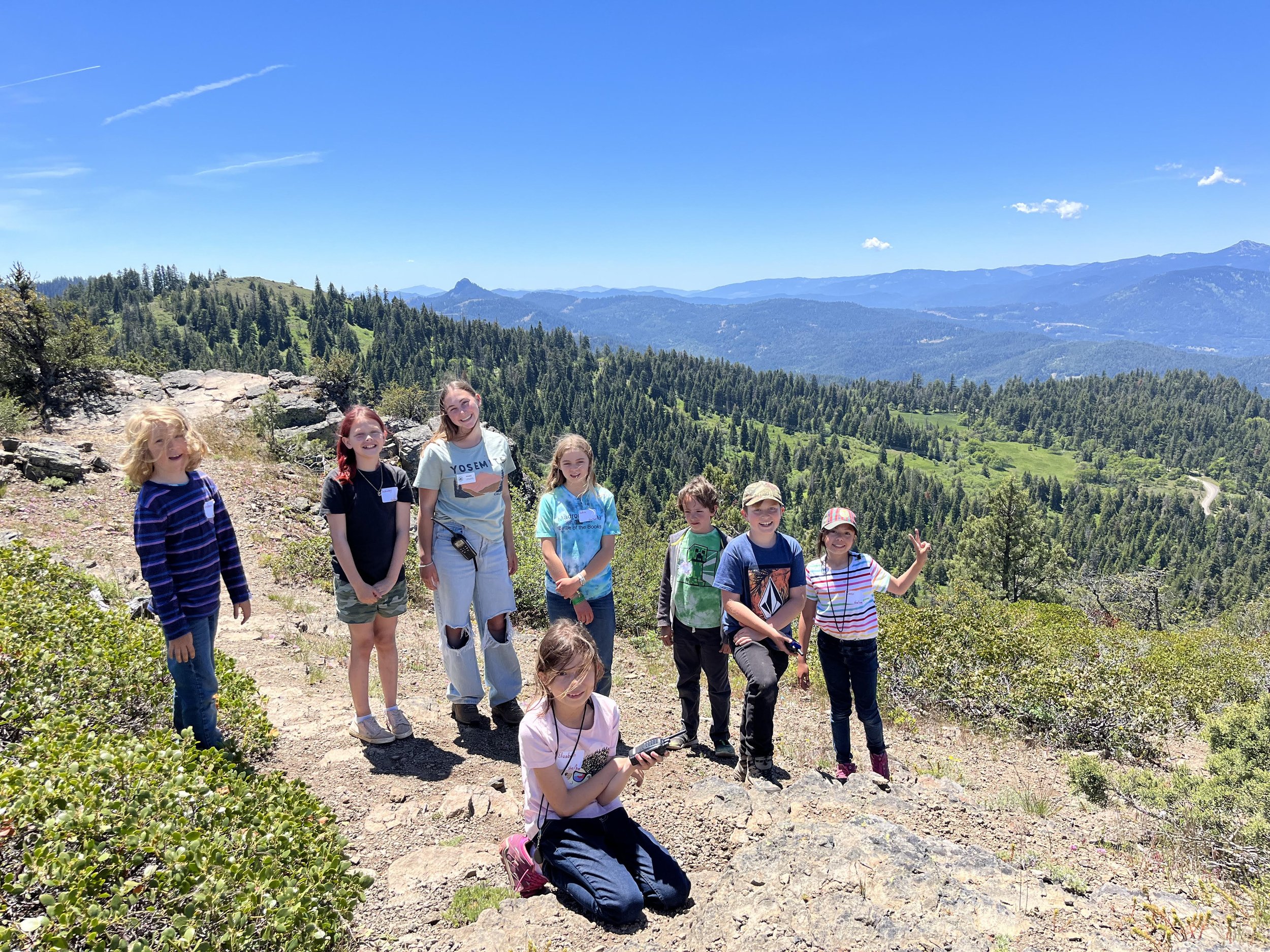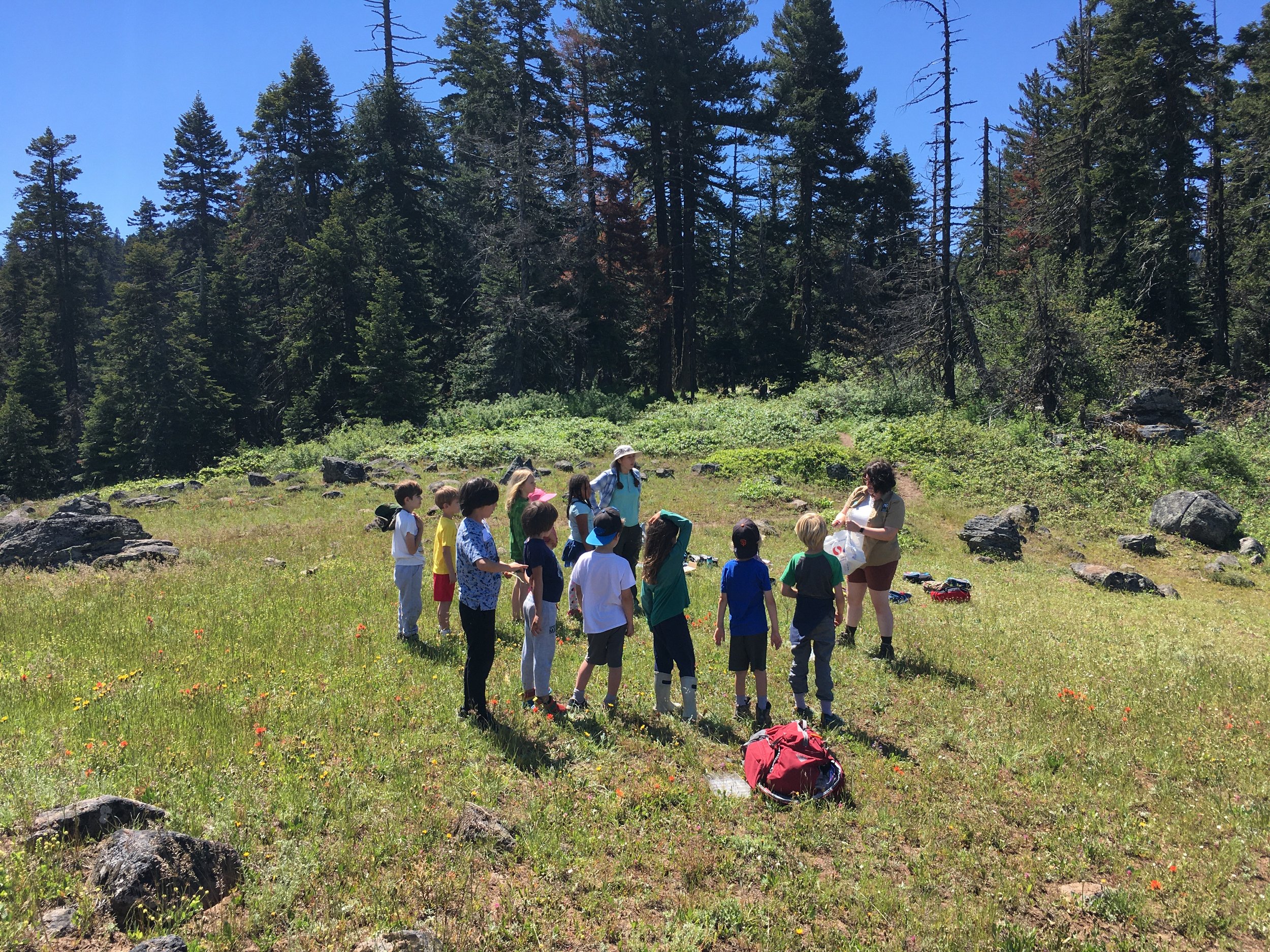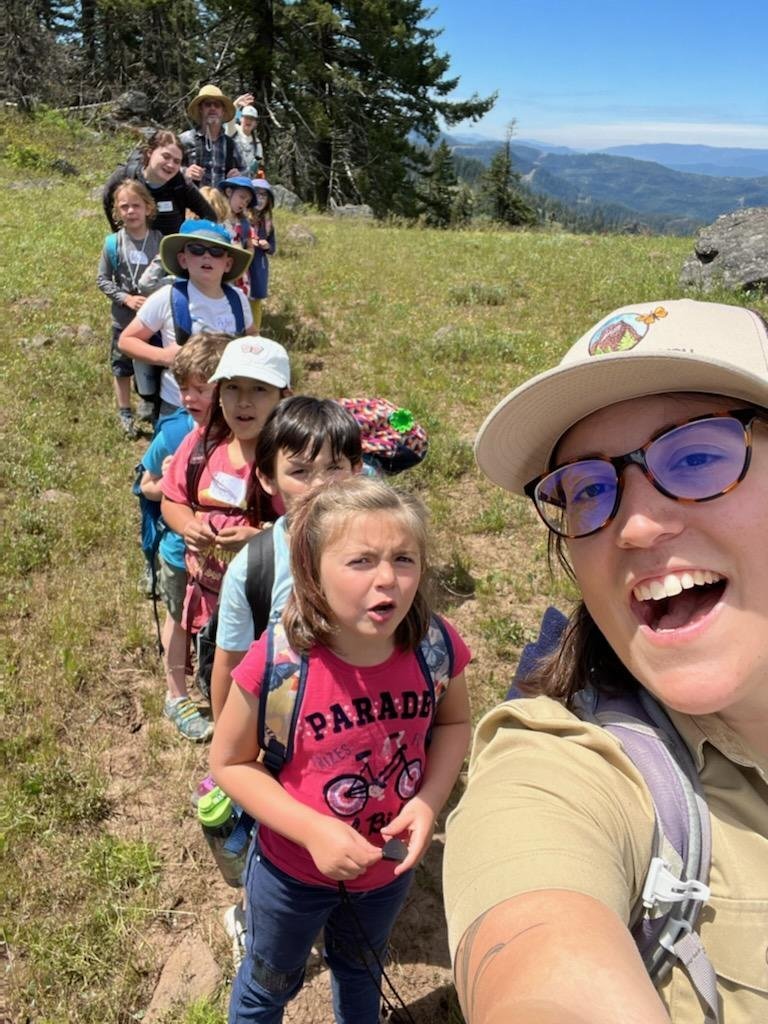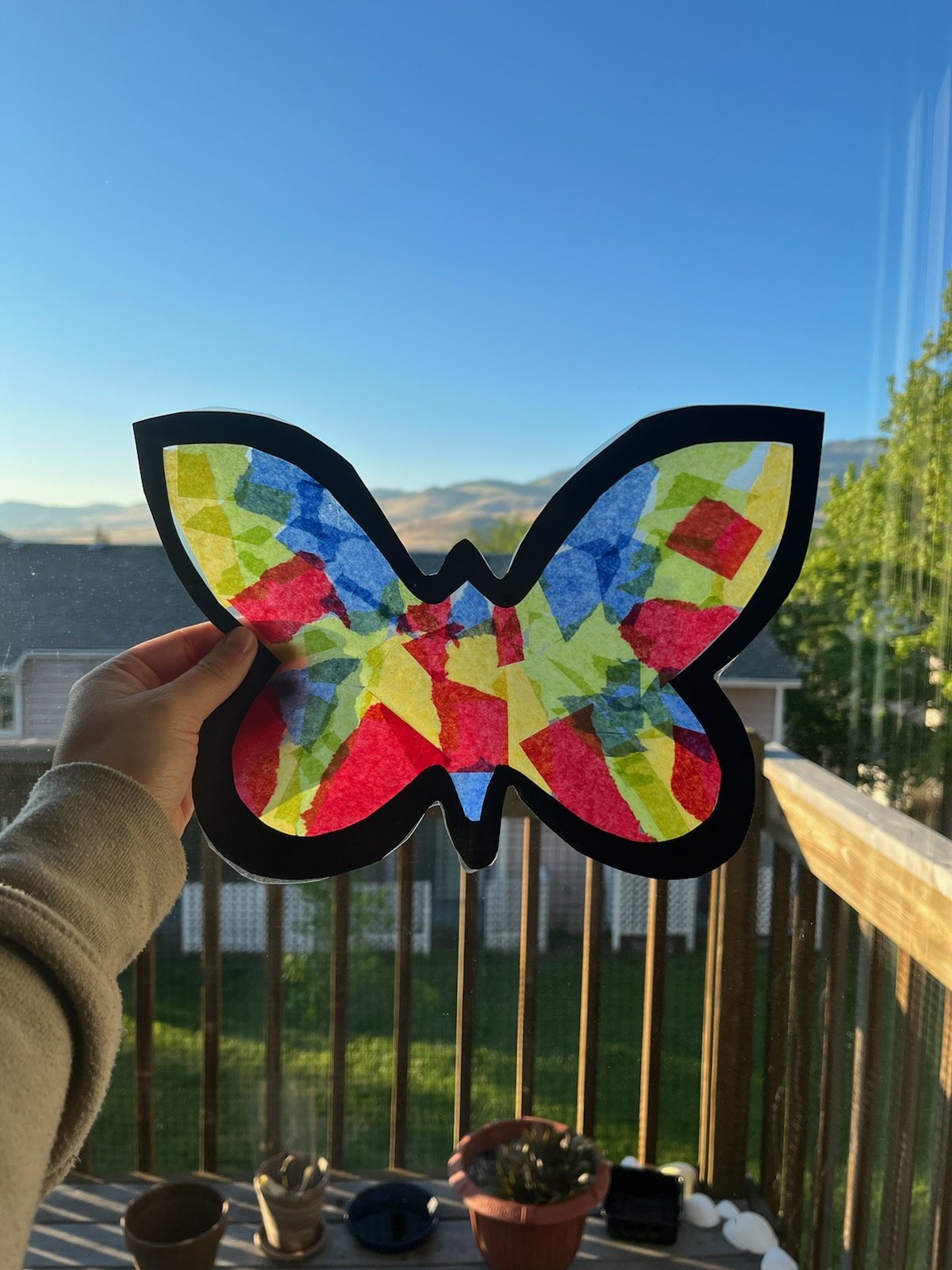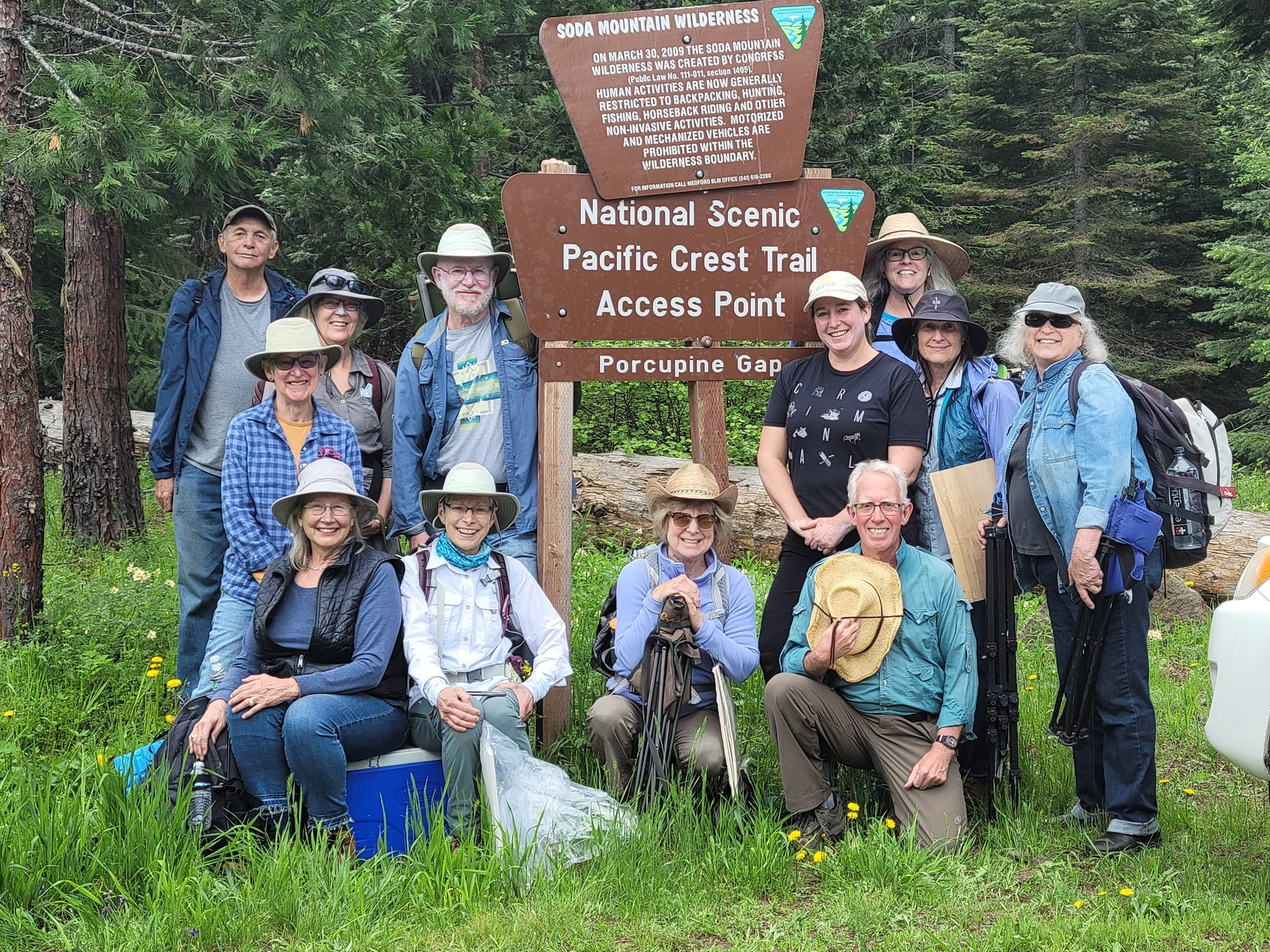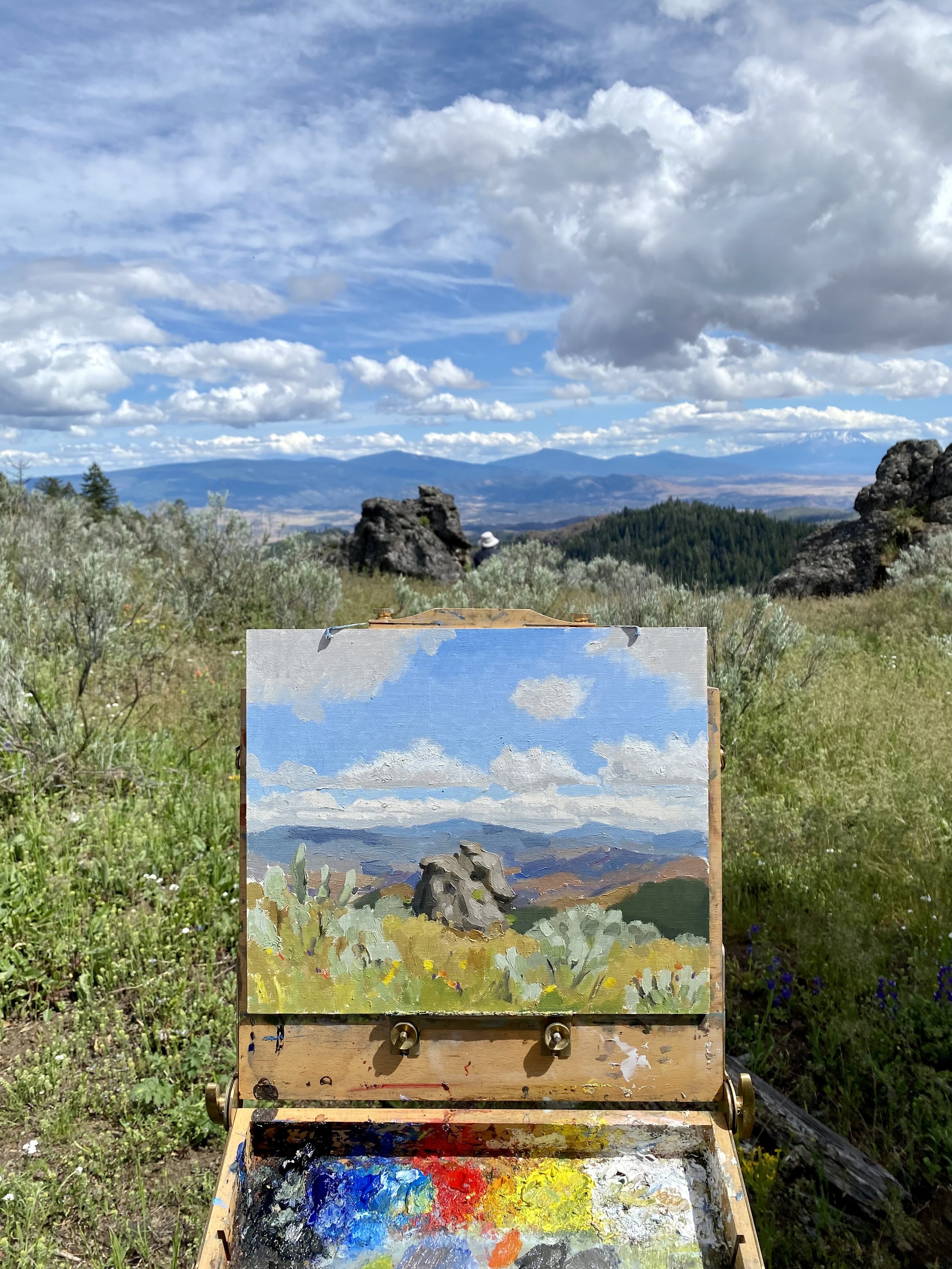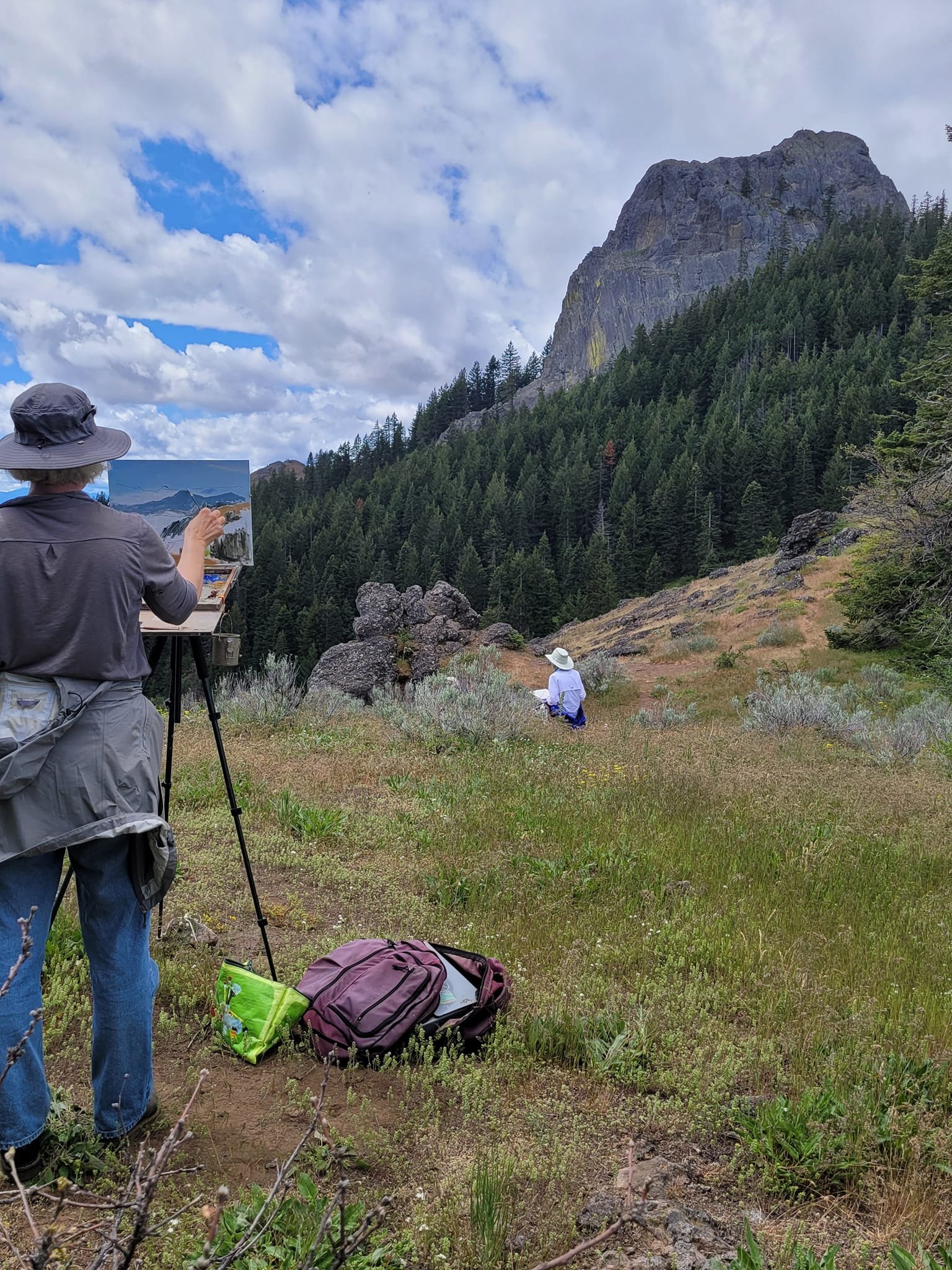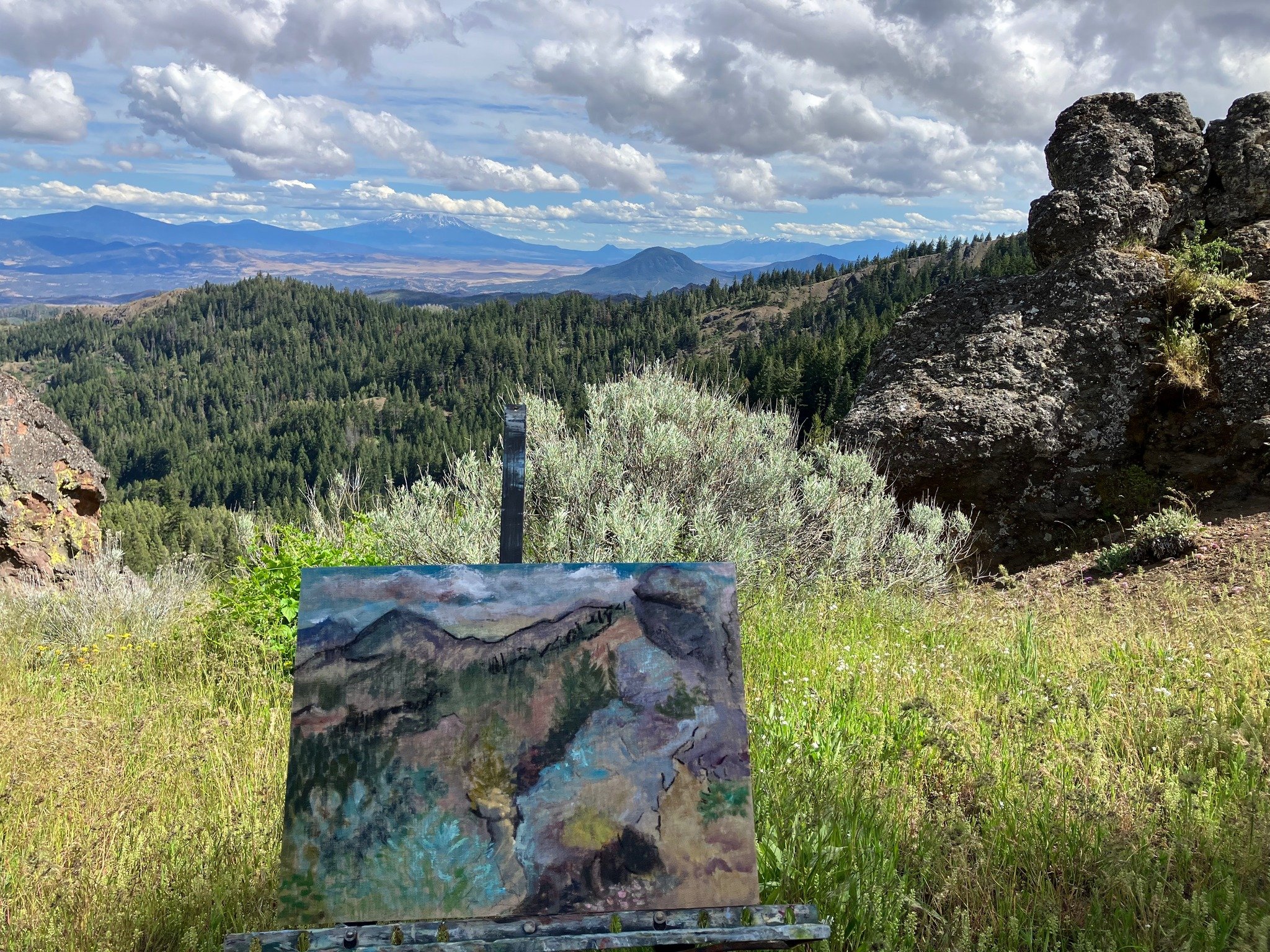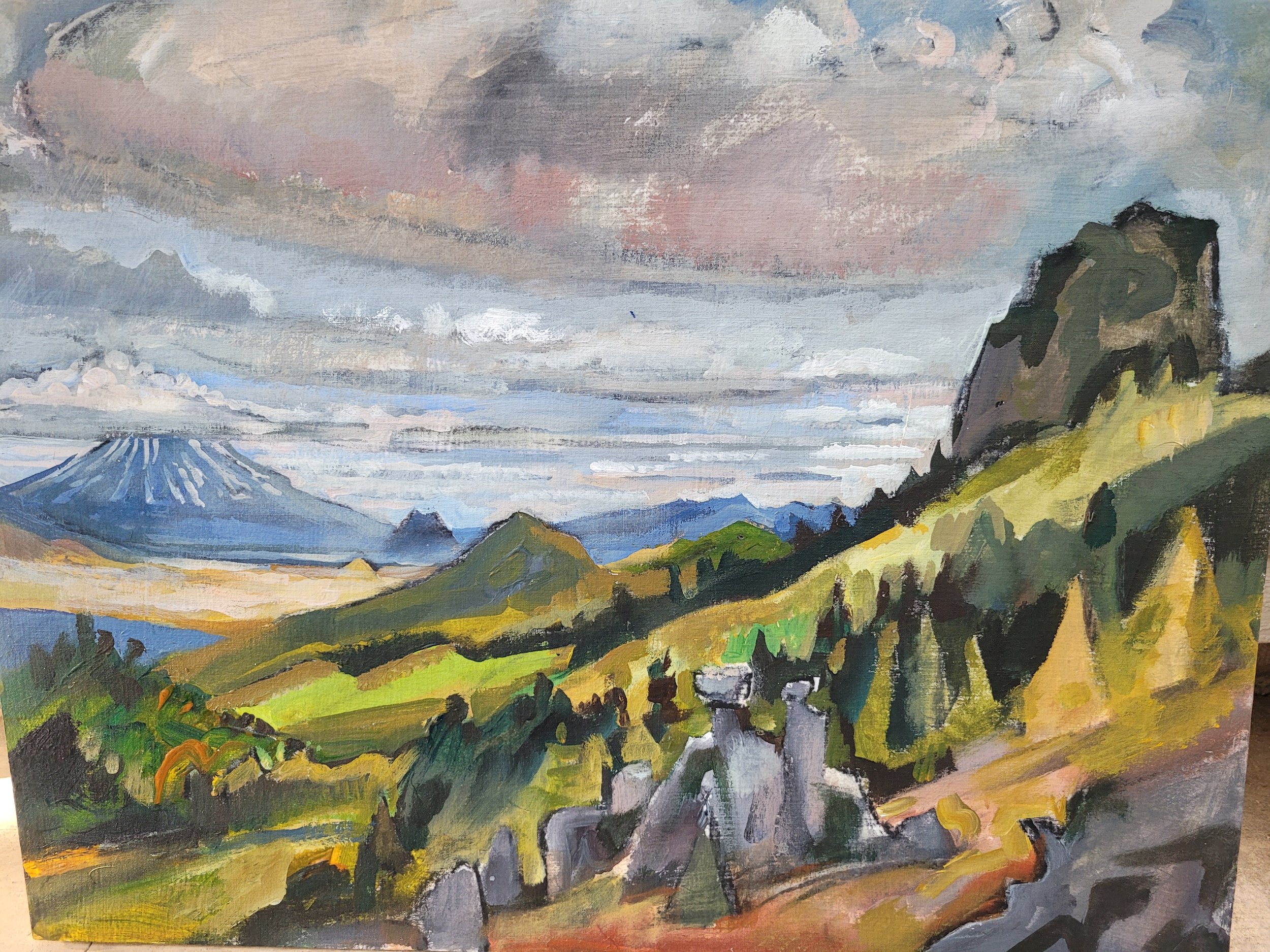September 16th/17th Hike and Learn
On Friday evening, Jeanine Moy, director of the Vesper Meadow Education Program, gave an inspiring talk sharing the details of how the organization came to be and all that they have accomplished in the Vesper Meadow Restoration Preserve since 2018 when it was established. The preserve is composed of two interconnected upland wet meadows surrounded by mixed conifer forest in the southern Cascades. The parcels total about 1,000 acres and are bordered by the Monument and other BLM lands.
Jeanine stewards the preserve and organizes opportunities for the community to get engaged in hands-on restoration projects outdoors. Additionally, there are tribal partnerships for native food cultivation, environmental education programs, community science and monitoring projects, and a growing list of artists-in-partnership that contribute to the network.
On Saturday morning, we started our hike at Buck Prairie II, a popular cross-country skiing destination in the Monument. We hiked along an old wagon road to the restoration site, admiring native grass species like Roemer’s fescue (Festuca roemeri), and savoring the delicious scents of the seeds of yampah (Perideridia spp.) and Lomatium. Elk enjoy roaming these meadows, evidenced by the tracks we noticed in the mud.
Once we arrived at Latgawa Creek, the work began: low-tech process-based restoration strategies. In other words, we behaved like beavers! Beavers impact natural stream flows and transform landscapes by gnawing down trees and building dams and lodges; they were a big part of this ecosystem before cattle arrived on the scene. We mimicked this natural process by cutting back shrubby willows (Salix spp.), planting the cuttings in the creek as if they were stakes, and weaving smaller branches to create a blockage in the creek. This will aid in sediment deposition; in many places the creek’s bottom is down to bedrock, which is not ideal for aquatic creatures or plants trying to regenerate along the waterway. It will also aid in water retention in the meadow by slowing down the water and allowing it to spread and sink on the land. There is much more work to be done on the preserve as well as throughout the Monument, so please look out for ways you can plug in to help.
The Friends would like to thank Jeanine and Vesper Meadow for offering a fascinating learning experience and collaborating with our community on this project.
